2023 Ford F-150 Raptor R Review: Ford's Ram TRX Rebuttal

The verdict: If the 450-horsepower, twin-turbo V-6 F-150 Raptor isn’t strong enough for you, the fully muscled-up Raptor R and its 700-hp, supercharged V-8 ought to do the trick — provided you can foot its six-figure price tag.
Versus the competition: The Raptor R’s obvious rival is the Ram 1500 TRX, and while the R stacks up well on most specs, it also costs around $26,000 more than a TRX.
When it debuted for the 2010 model year, the Ford F-150 Raptor more or less invented the concept of the modern, high-performance off-road pickup truck. It was a muscle truck equipped to tackle Baja-1000-style off-road races right off the showroom floor, with a seriously fortified chassis and suspension, a hearty helping of horsepower under the hood and brawny looks to match.
Related: 2021 Ford F-150 Raptor Review: Better, But With a Big Problem
The first-generation Raptors offered V-8 power, but with the introduction of the second-gen model for 2017, the Raptor switched to a twin-turbocharged 3.5-liter V-6. This engine, which carried over to the third-generation Raptor that debuted for 2021, is plenty gutsy: It makes 450 hp and 510 pounds-feet of torque. However, Ford isn’t the only player in the off-road supertruck game anymore: There’s the pesky matter of the Ram 1500 TRX that debuted for 2021 and its supercharged 6.2-liter Hemi V-8 boasting (ahem) 702 hp and 650 pounds-feet of torque.

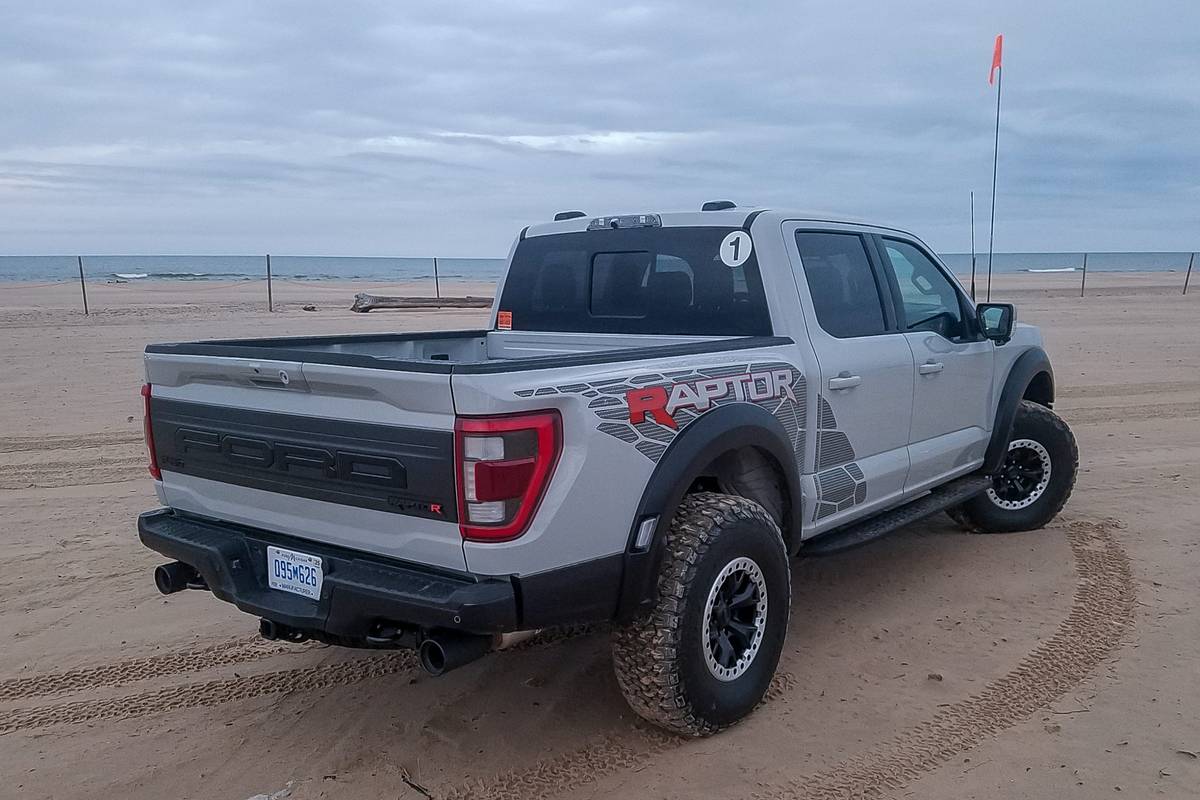
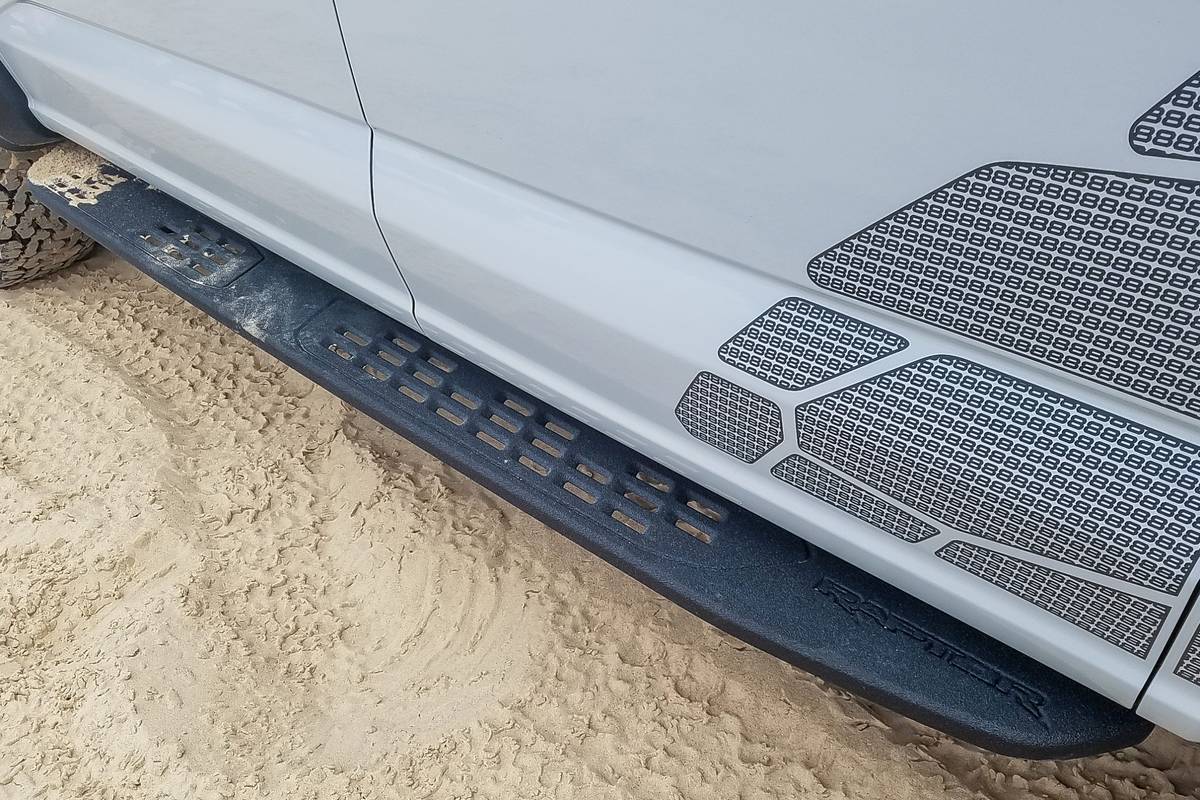
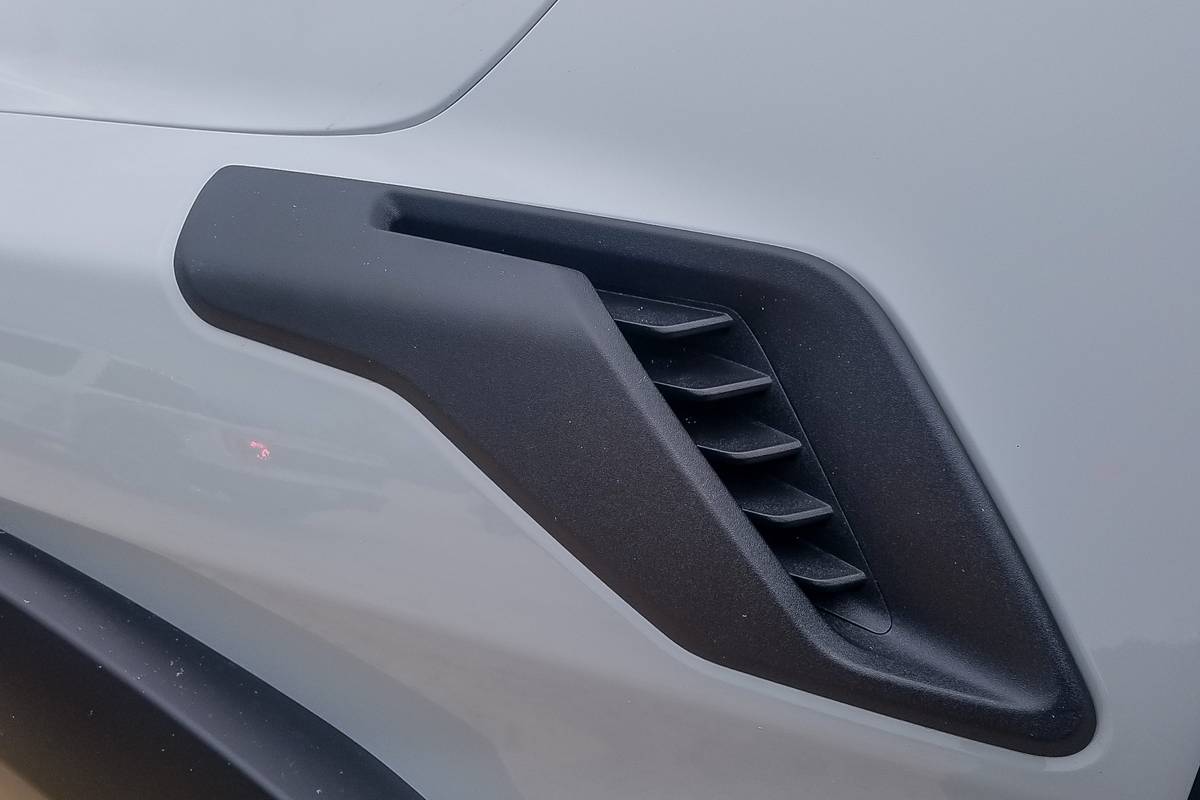
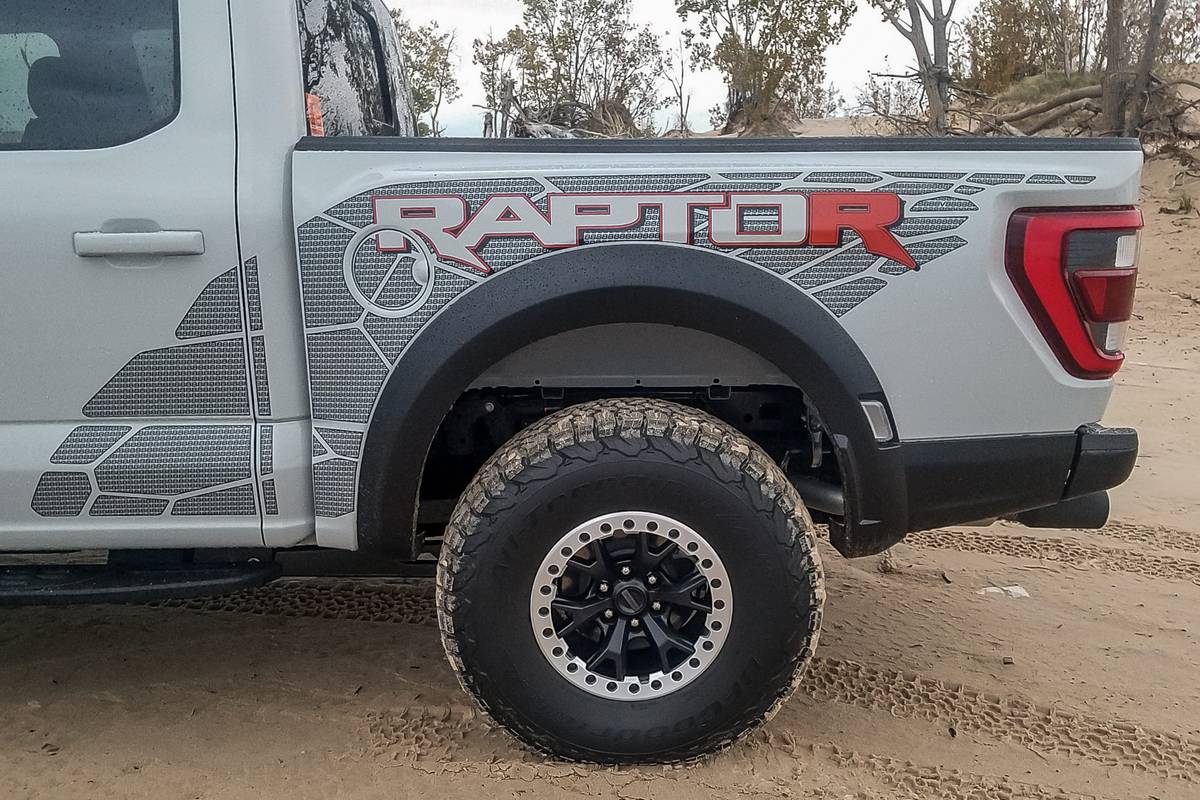
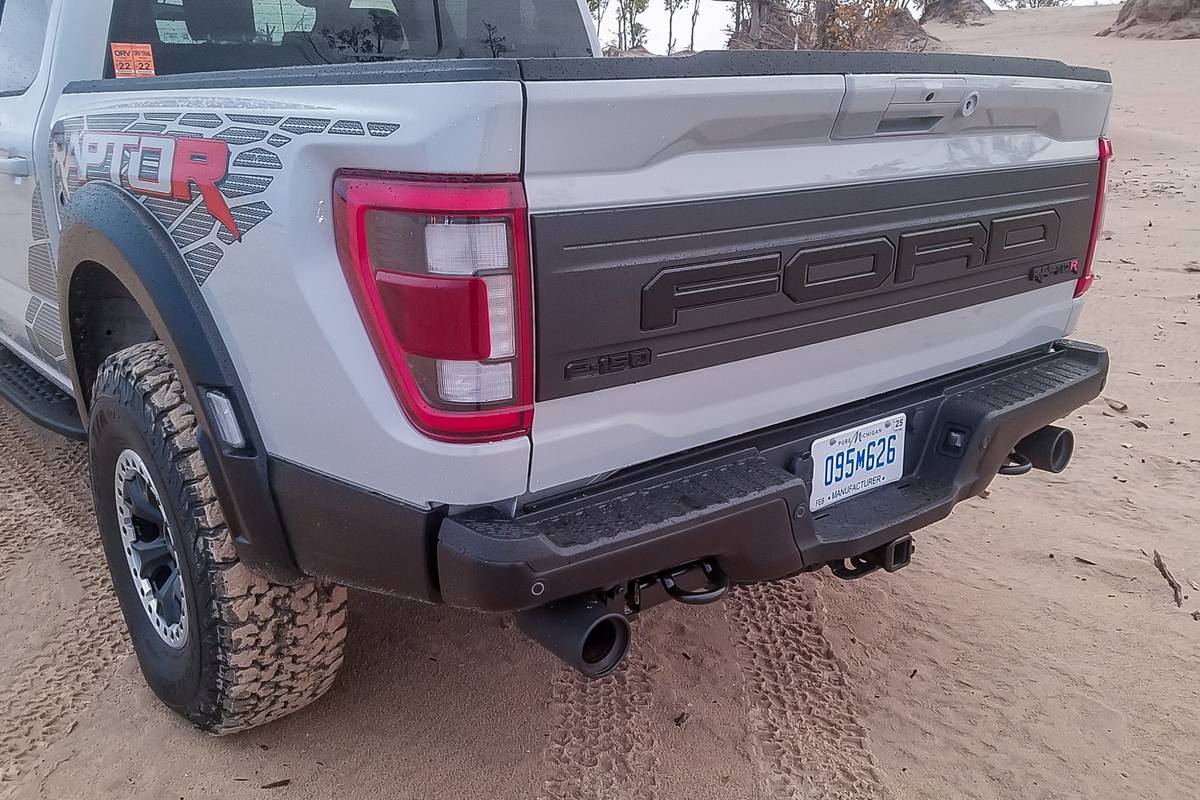
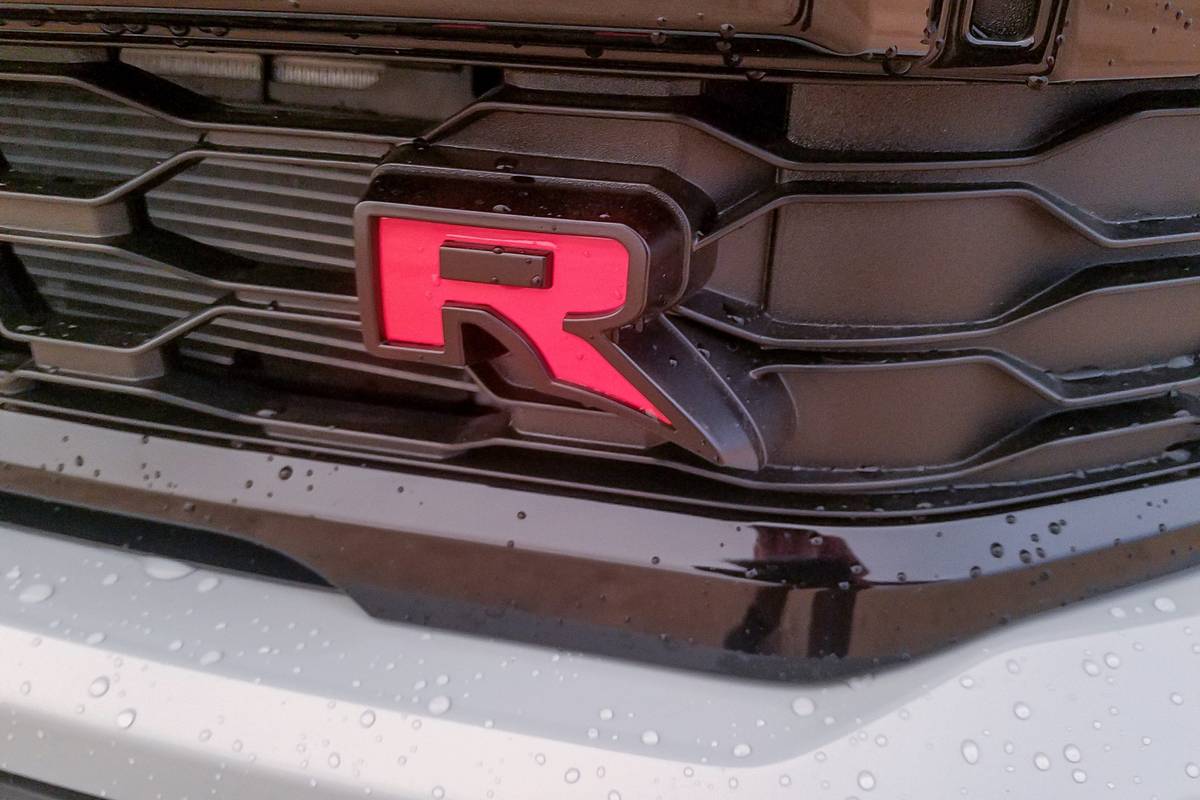
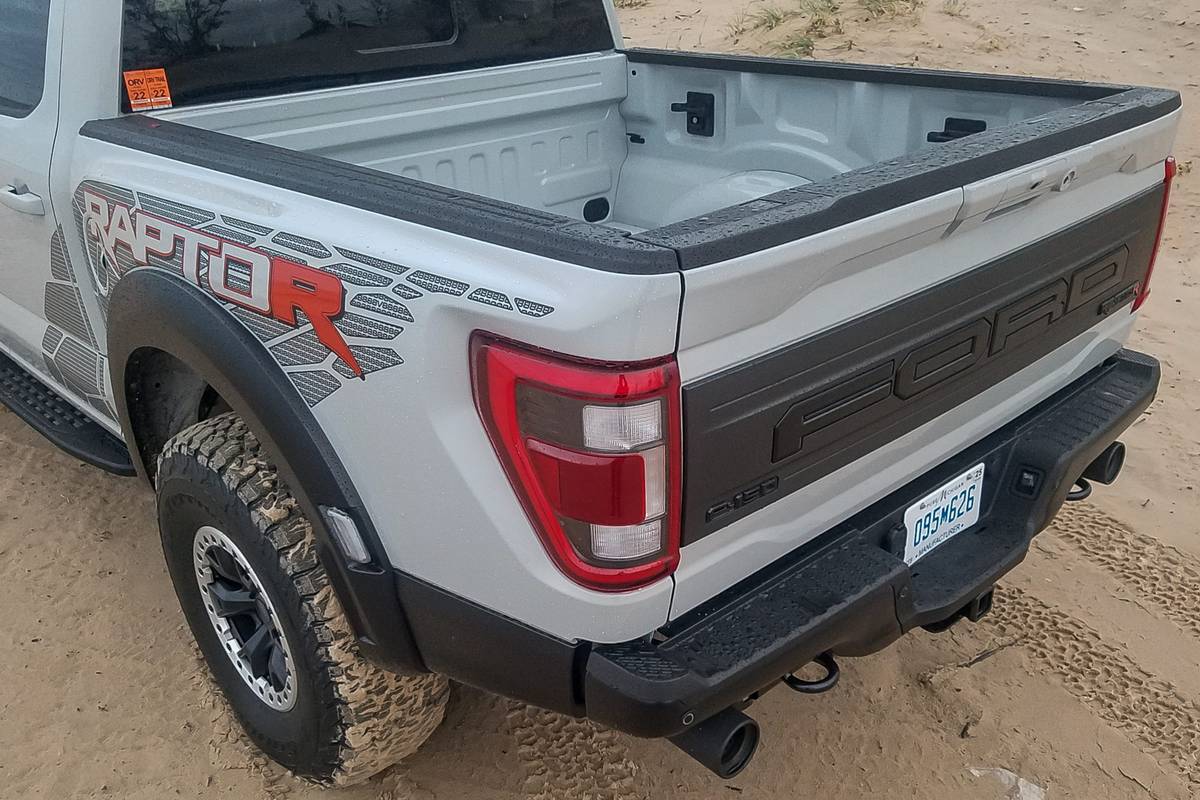
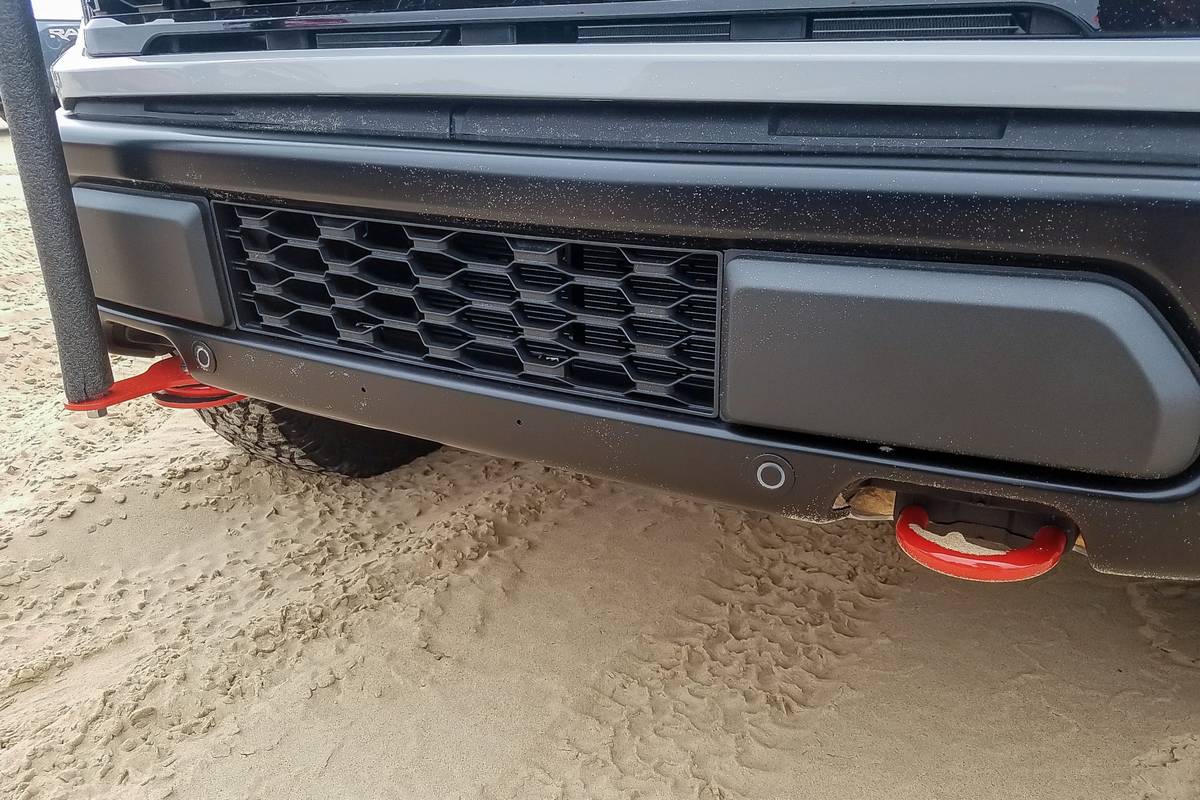
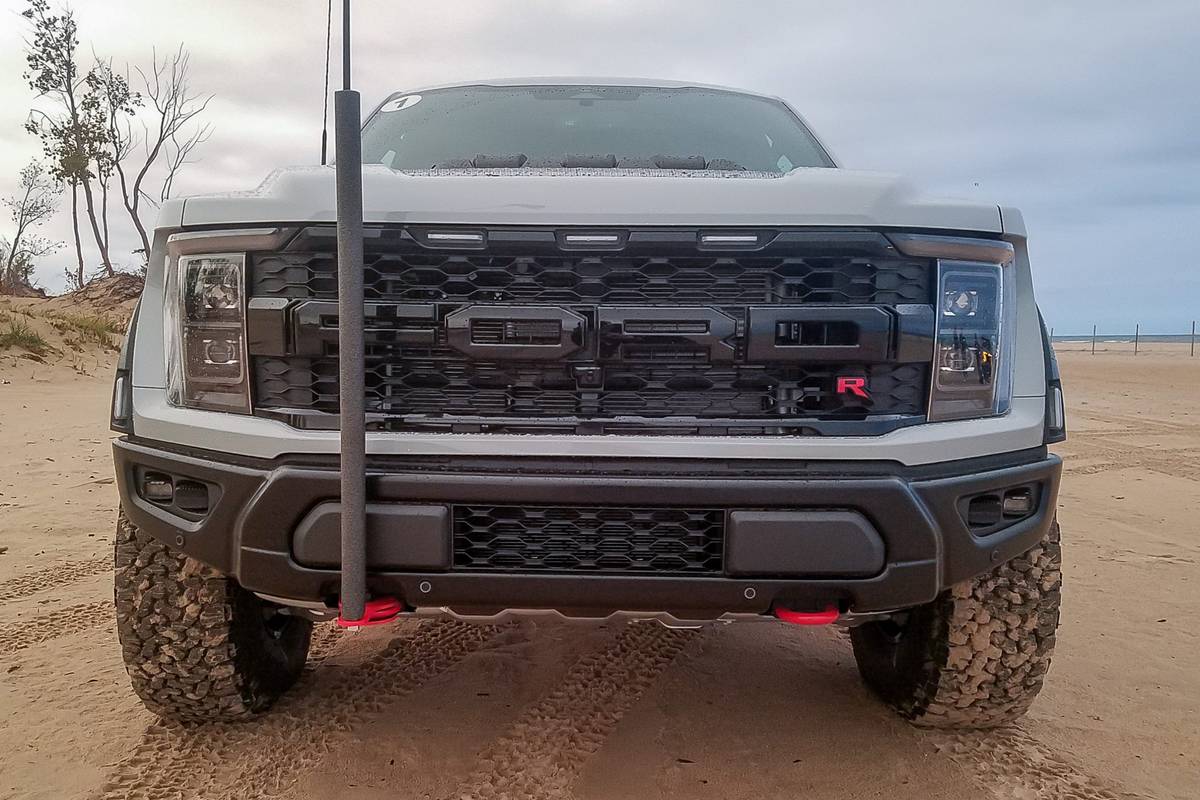
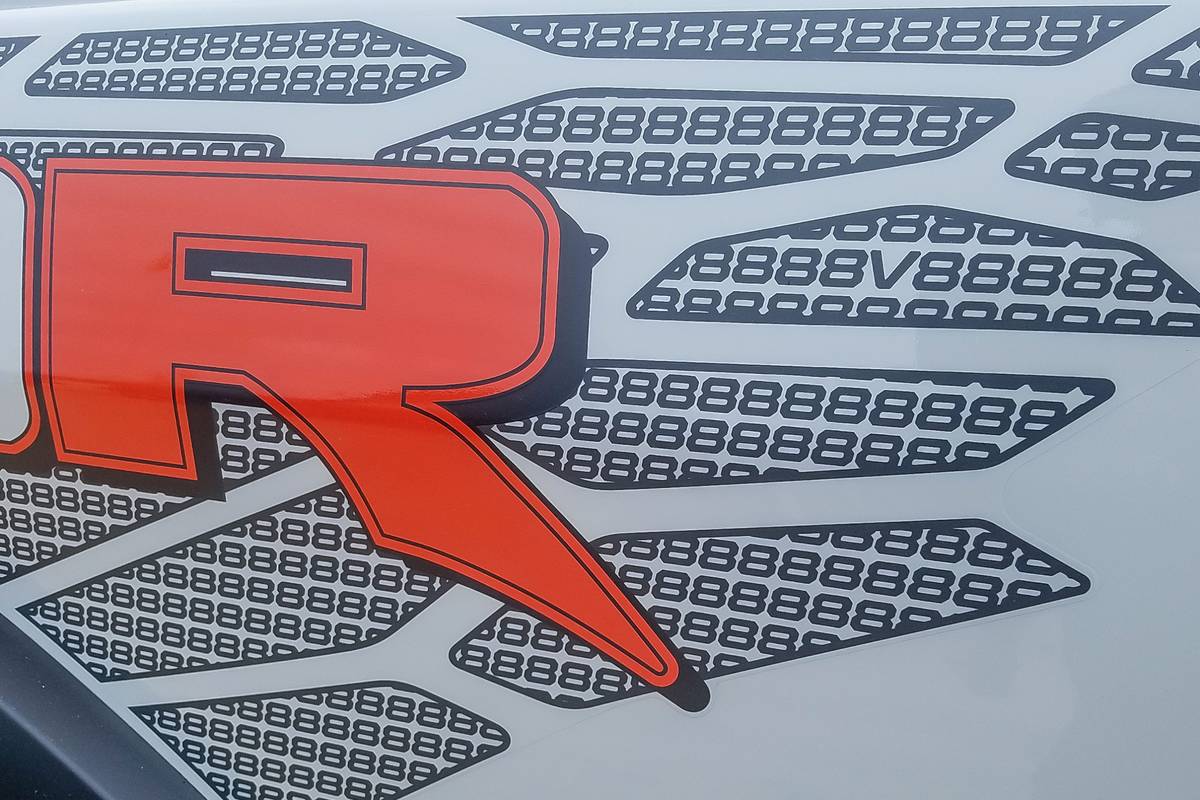

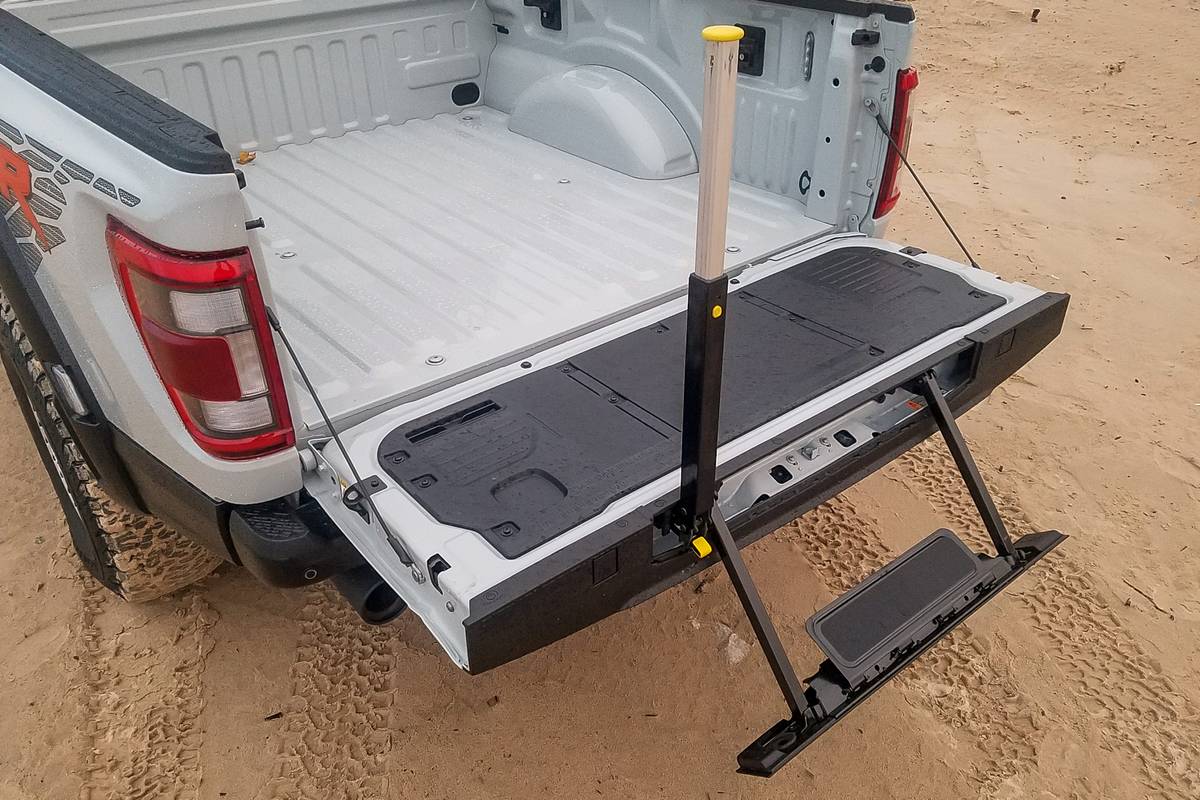
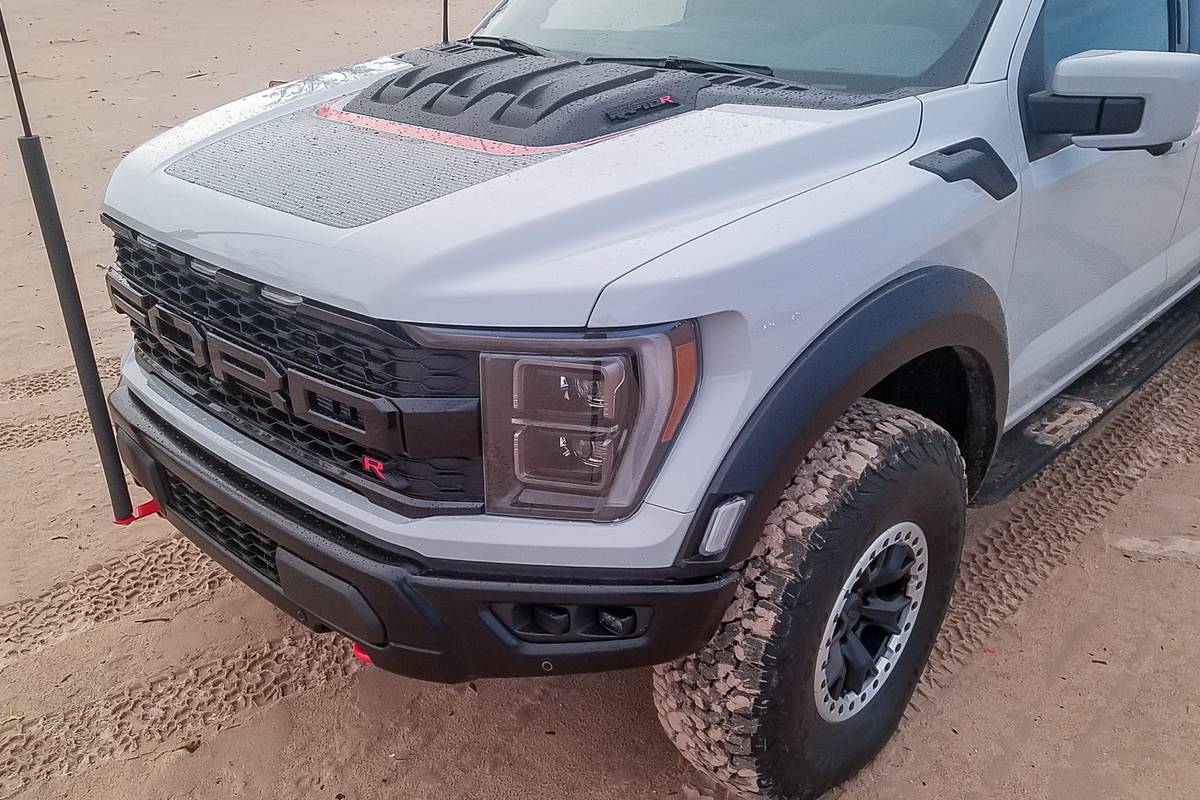
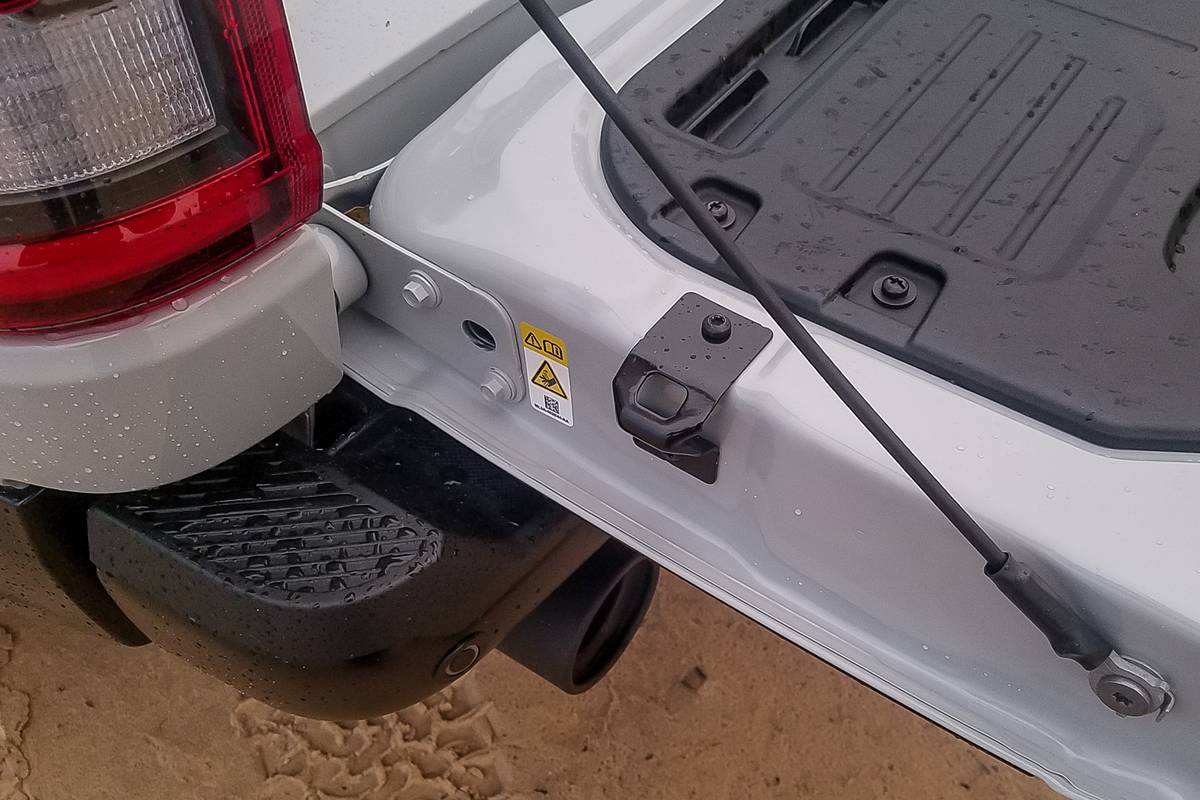
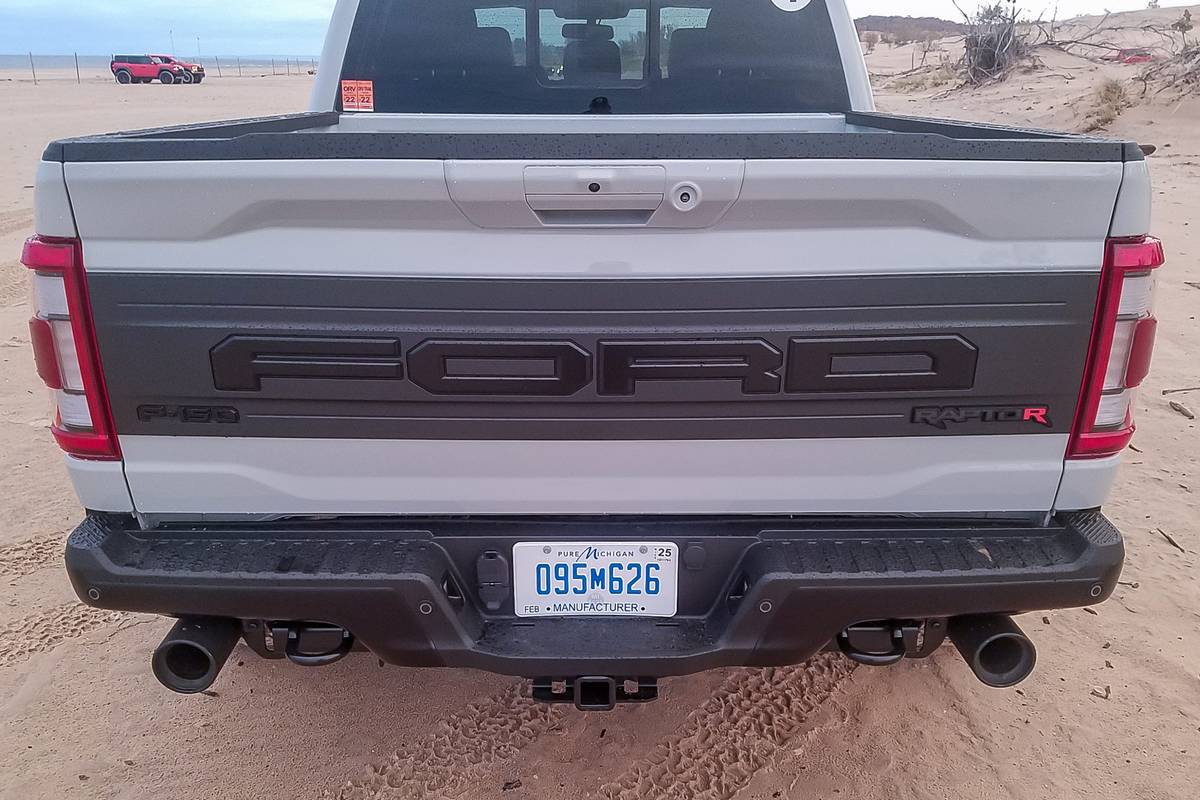
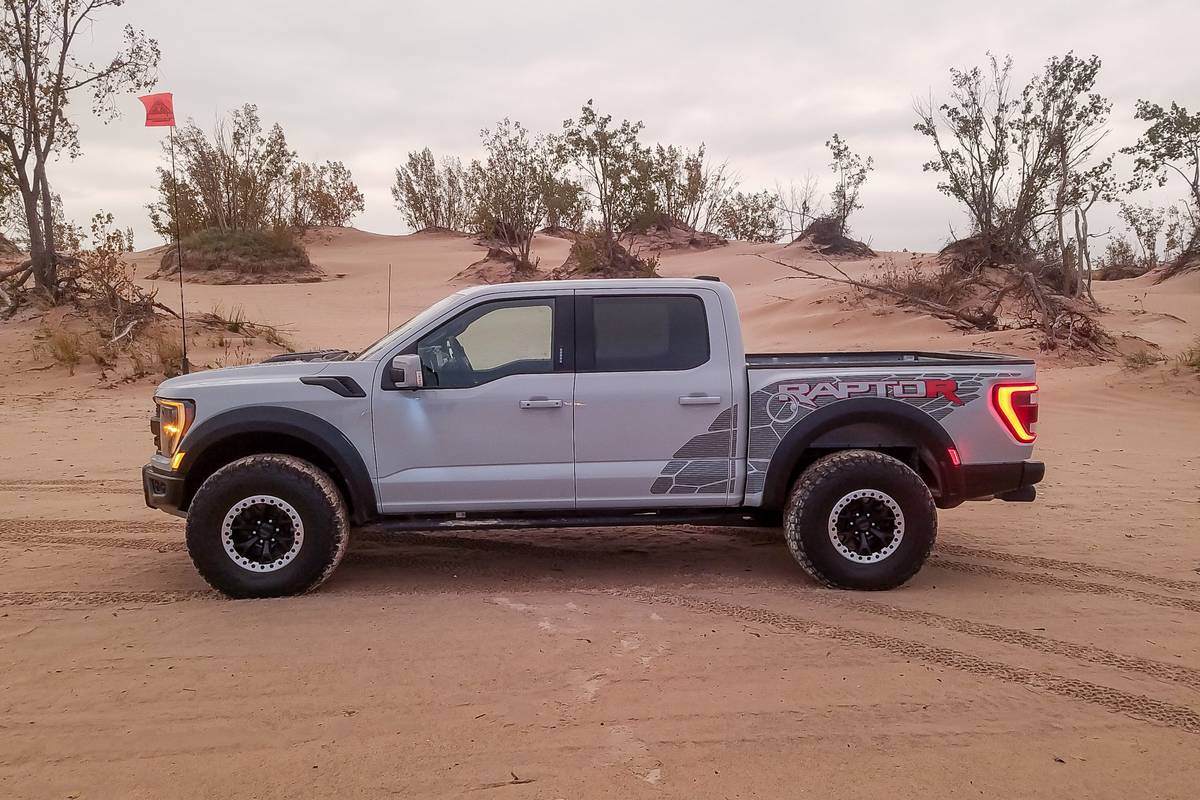
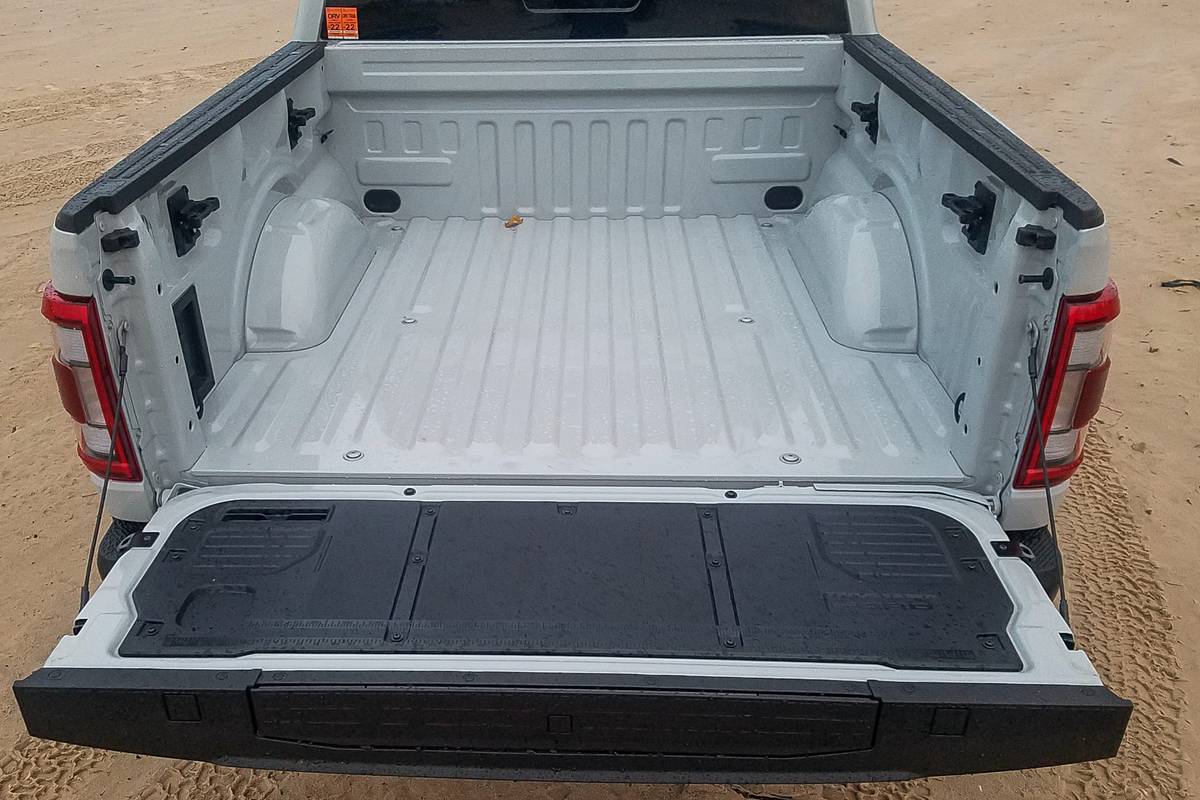
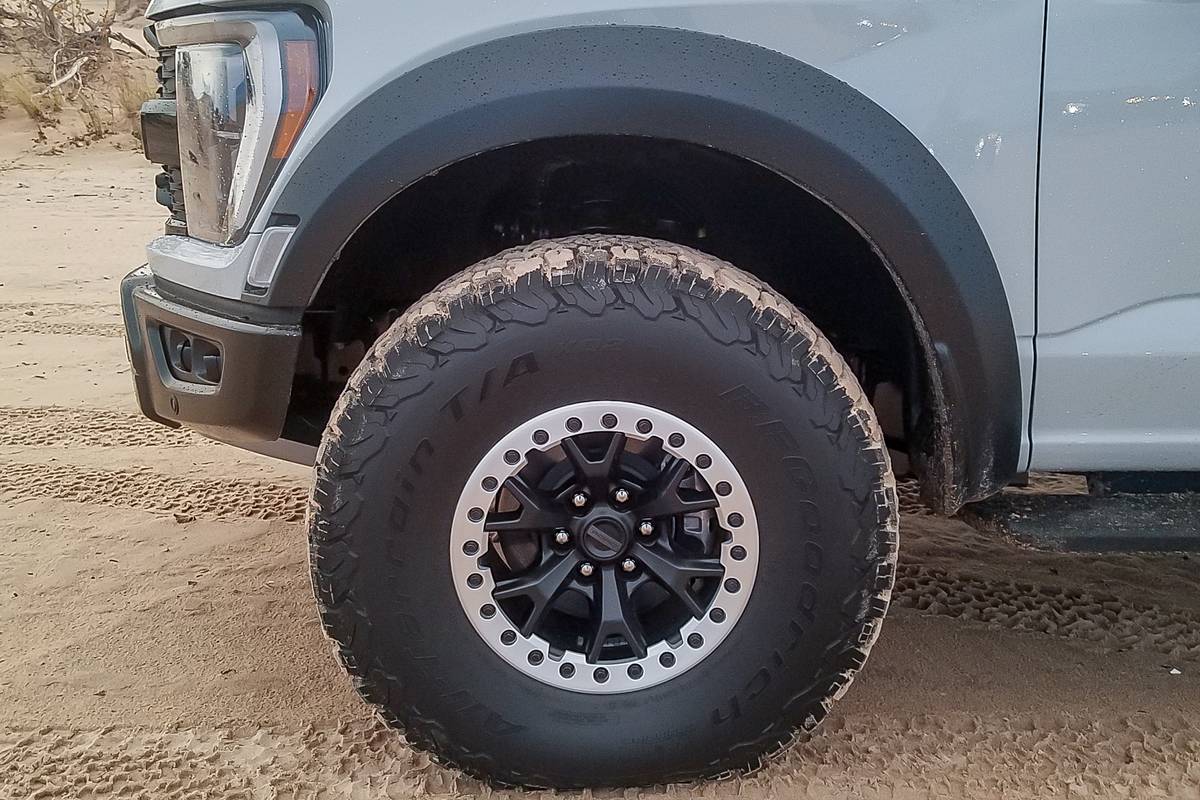
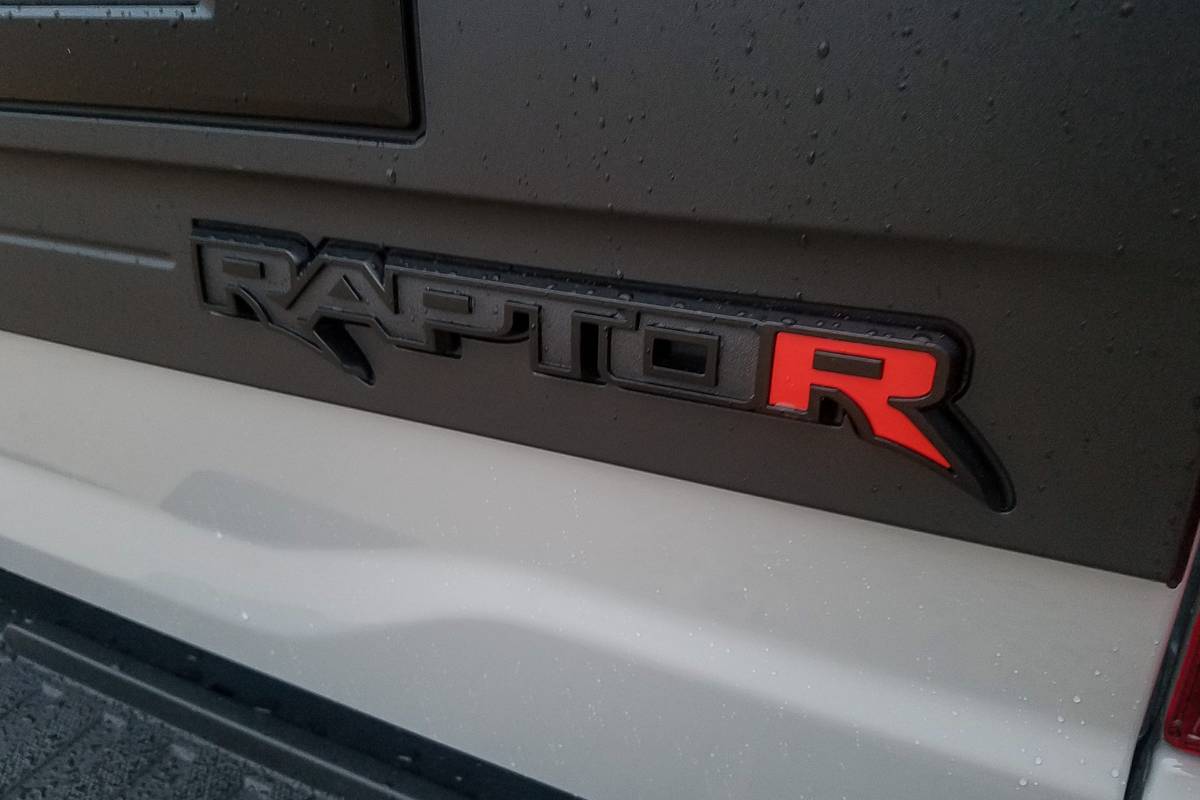
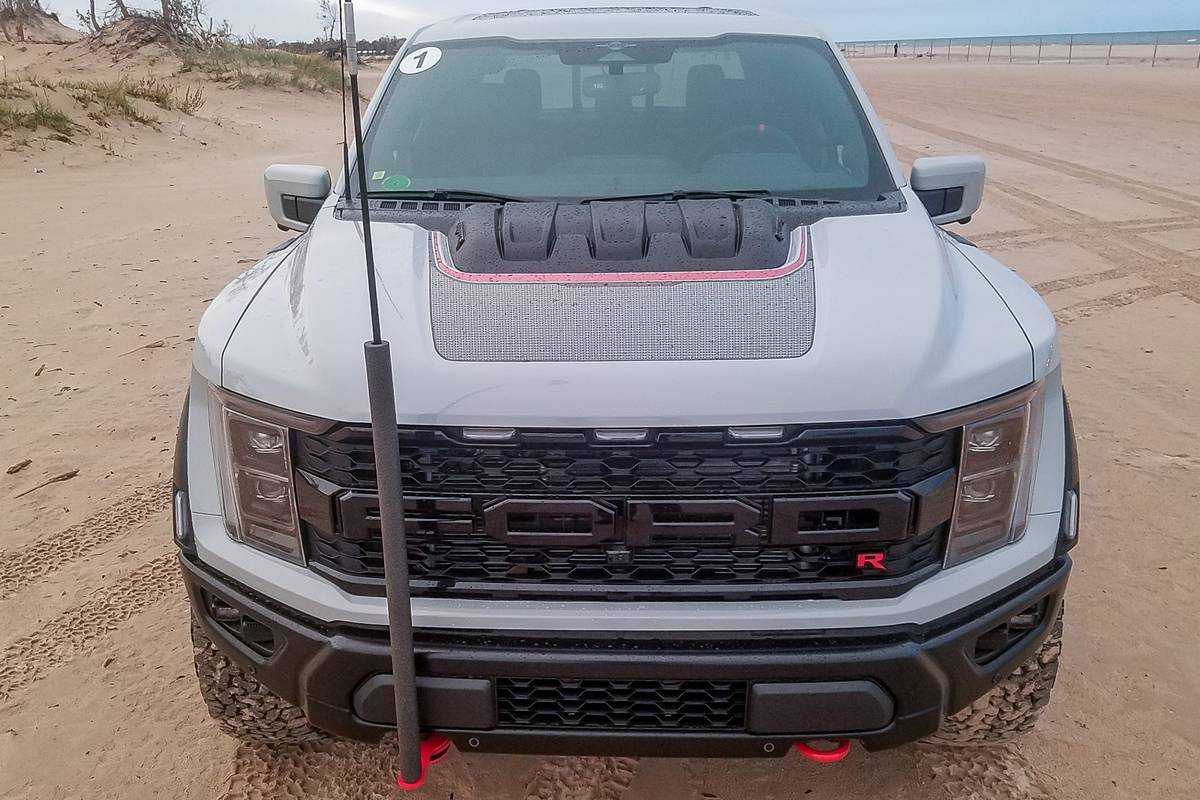

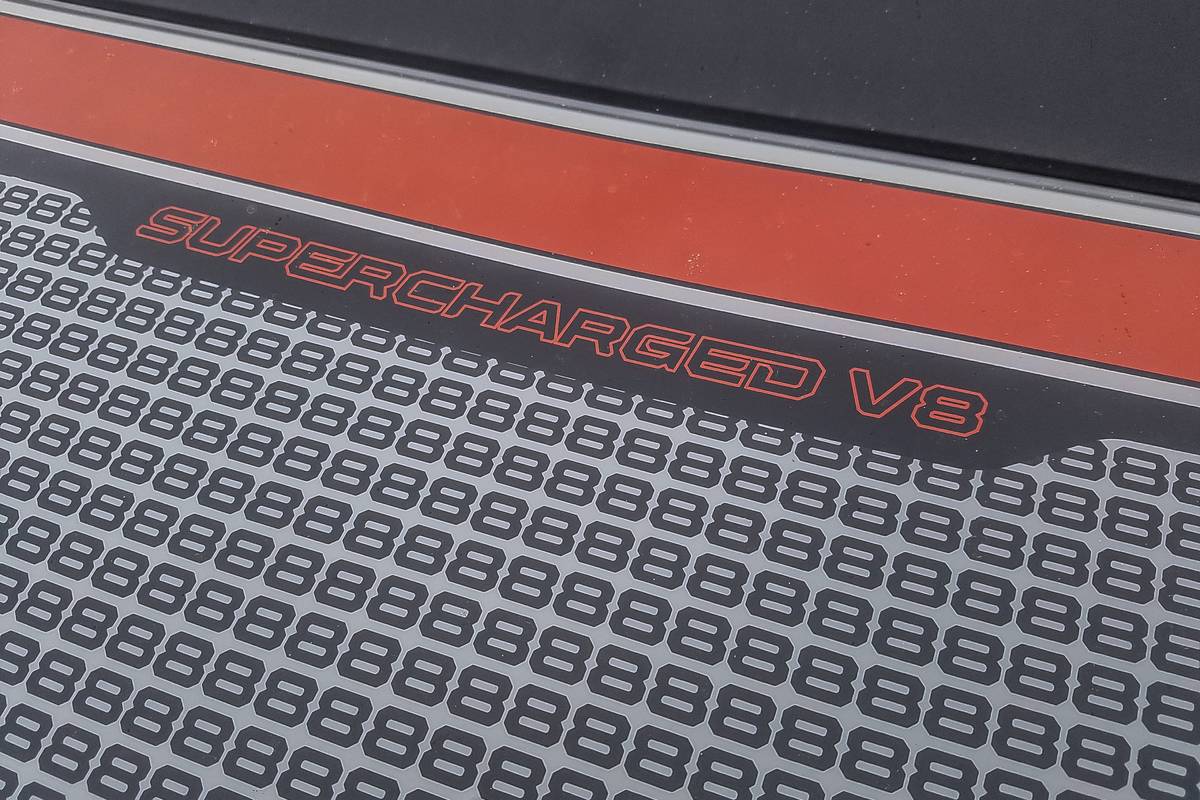























More Horses Under the Hood
To answer the TRX’s challenge, Ford had to equip the Raptor with a monster V-8, and that’s just what it’s done with the new-for-2023 Raptor R model. The automaker already had a perfectly suitable engine in its stable: the supercharged 5.2-liter V-8 from the Shelby GT500 sports car. In the GT500, this engine makes 760 hp and 625 pounds-feet of torque, but a few alterations were necessary to outfit it for off-road pickup duty, including cast-stainless-steel exhaust manifolds, a deeper oil pan that’s better suited for steep grades and a new supercharger pulley that optimizes low-end and midrange power delivery. For more details, see our F-150 Raptor R preview article.
In the Raptor R, the supercharged 5.2-liter makes 700 hp and 640 pounds-feet of torque; that’s 2 hp and 10 pounds-feet shy of the Ram TRX’s 6.2. The TRX clicked off an impressive 0-60 mph run of 4.1 seconds and a 12.55-second quarter-mile time in our own drag-strip testing, but Ford hasn’t released any estimated acceleration figures for the Raptor R yet, and we haven’t had the chance to do our own timed runs.
Ford also hasn’t released any Raptor R fuel-economy estimates yet, but … c’mon: They’re going to be bad. With 37-inch tires, the regular V-6 Raptor is EPA-rated 15/16/15 mpg city/highway/combined, and the TRX is rated 10/14/12 mpg.
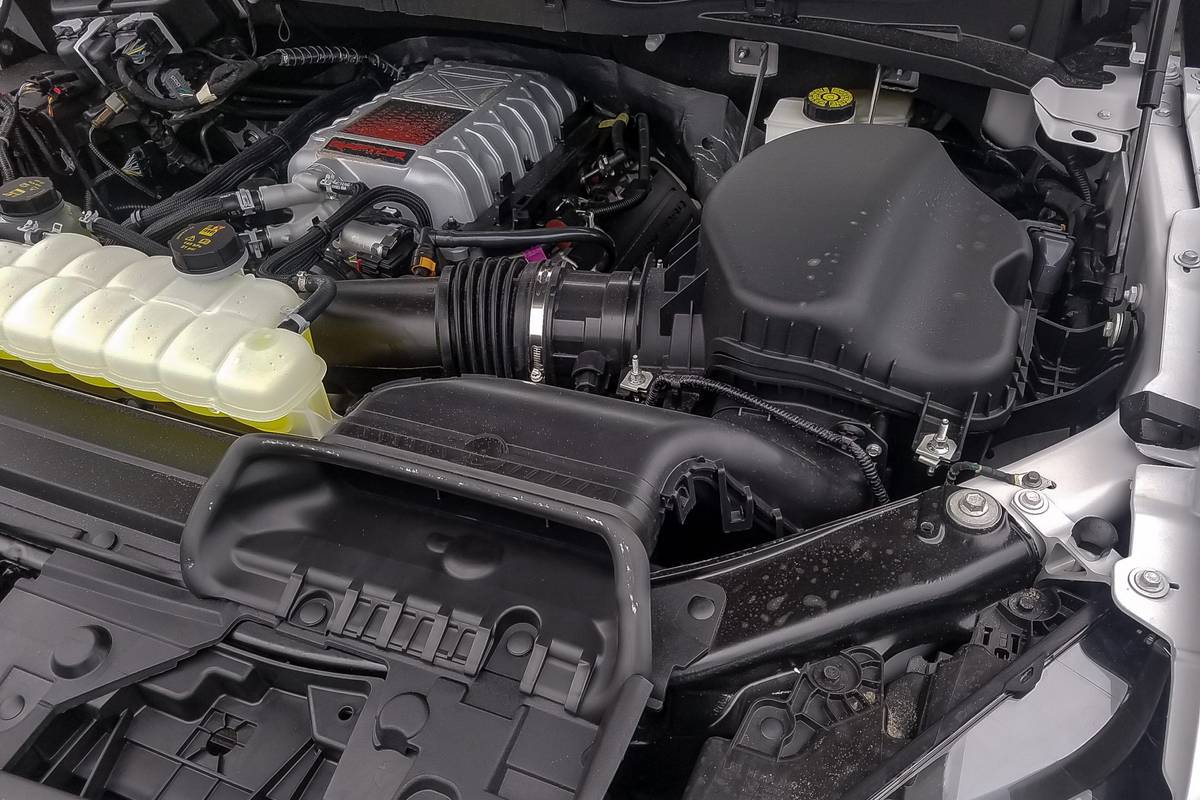

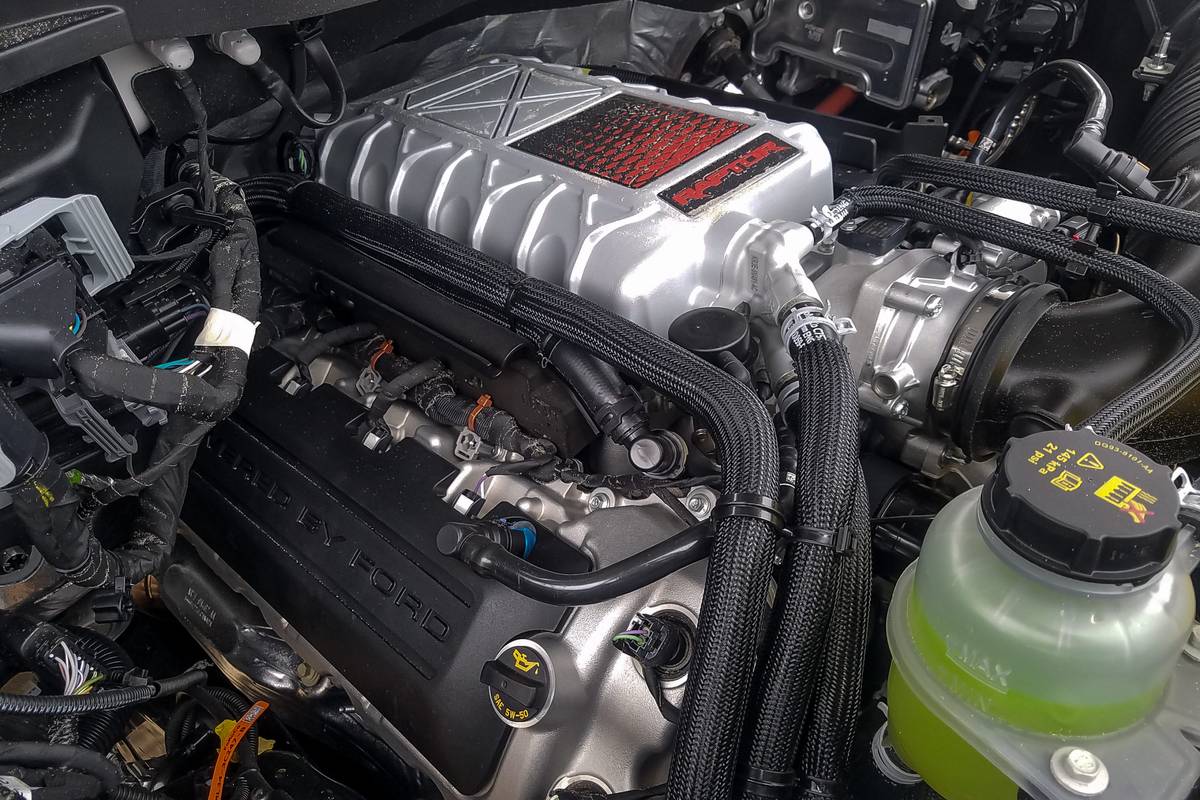
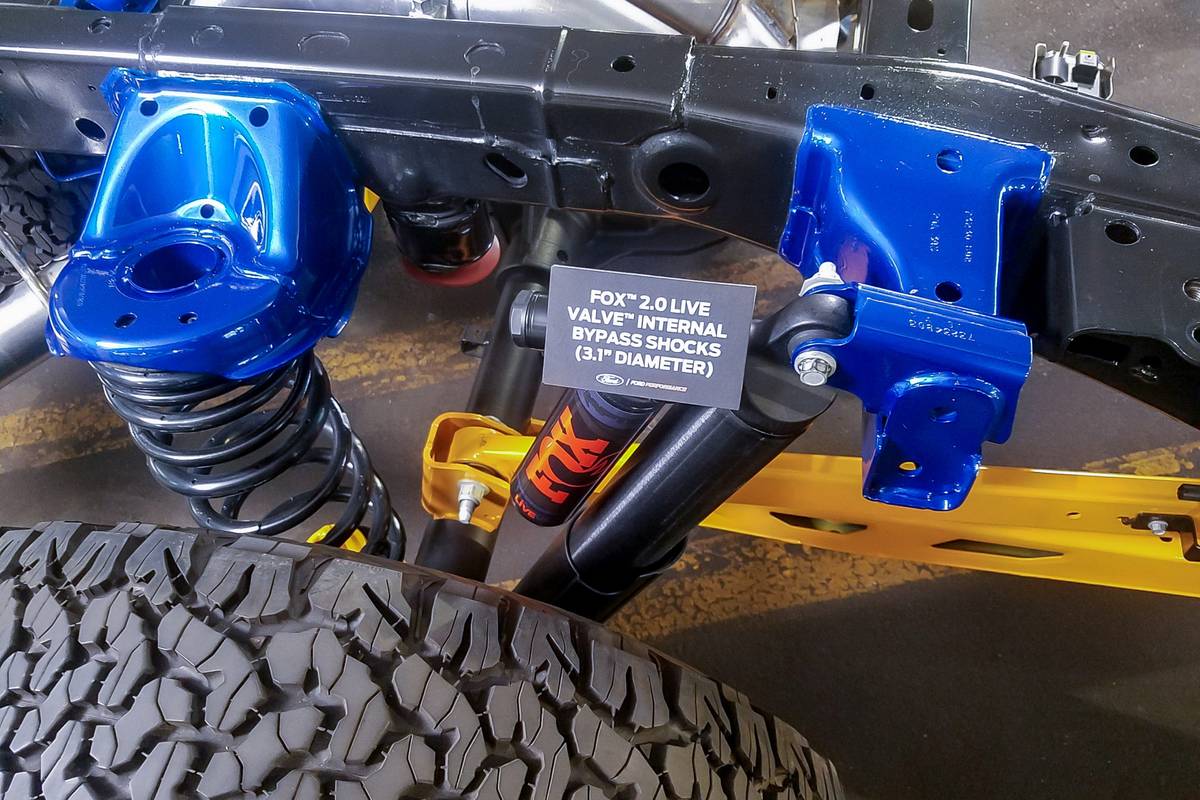
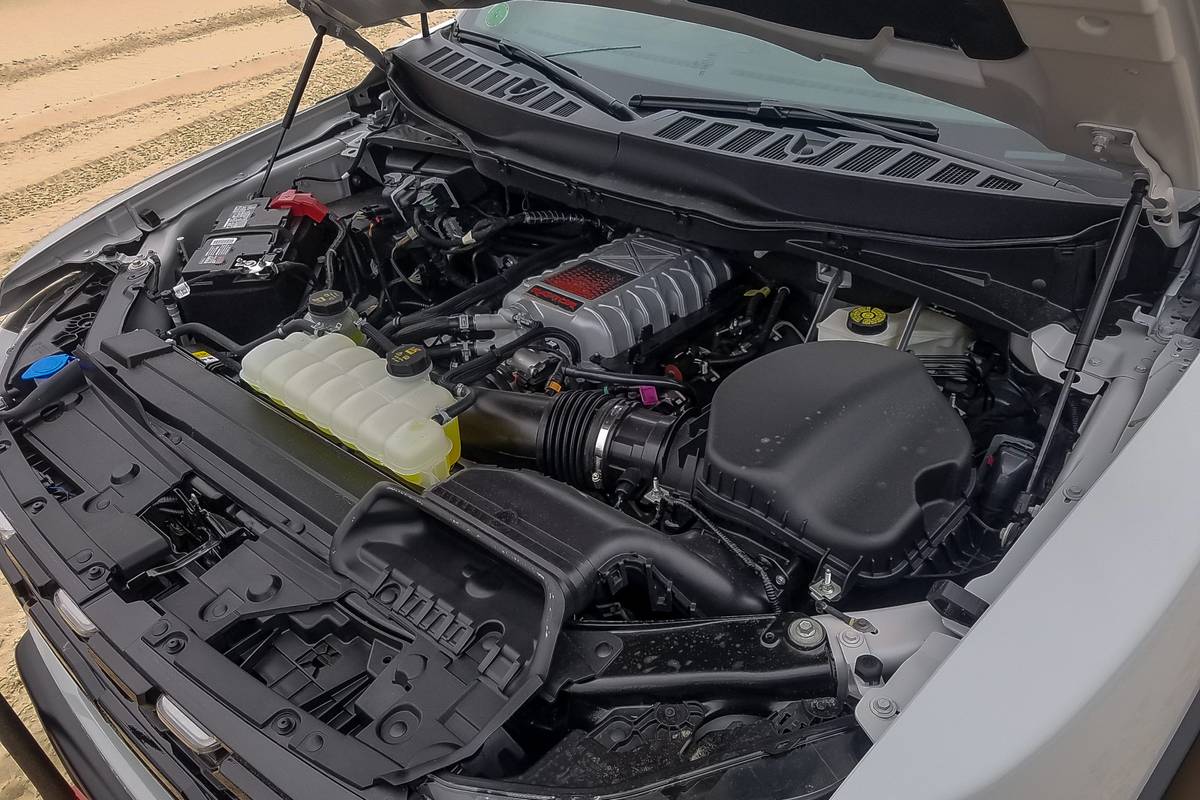
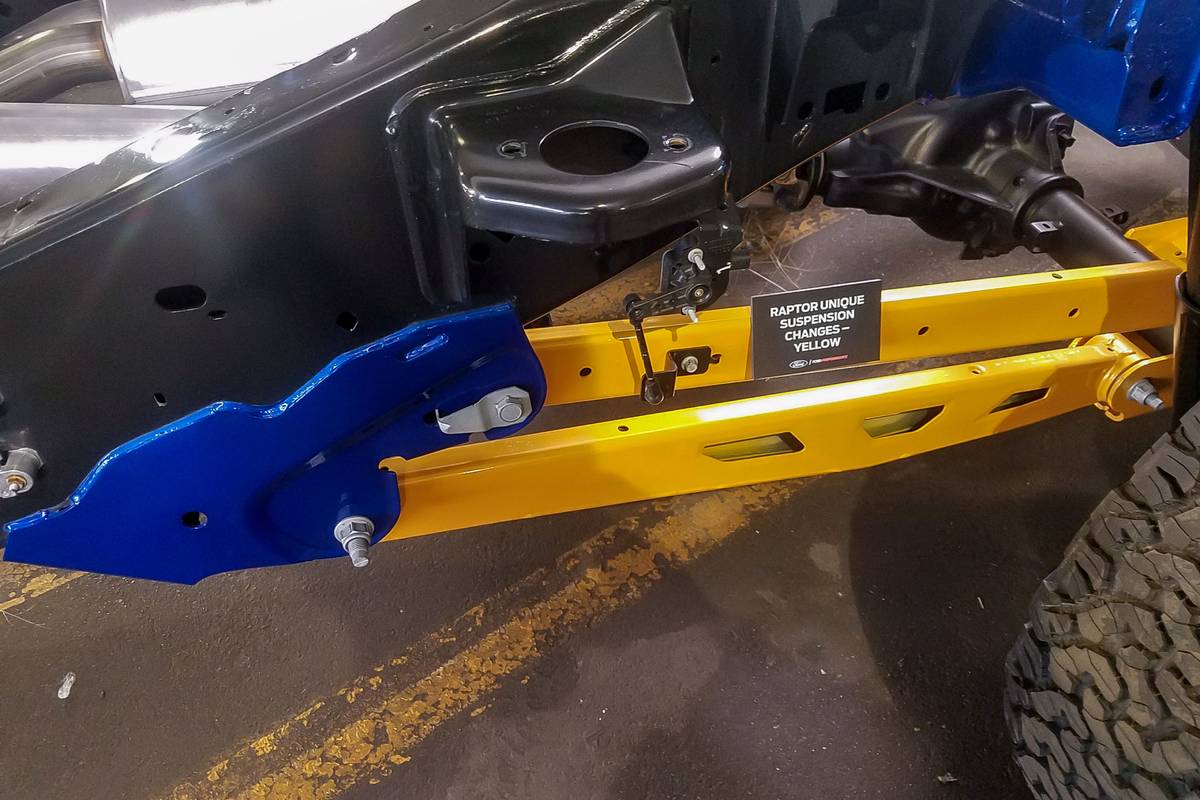
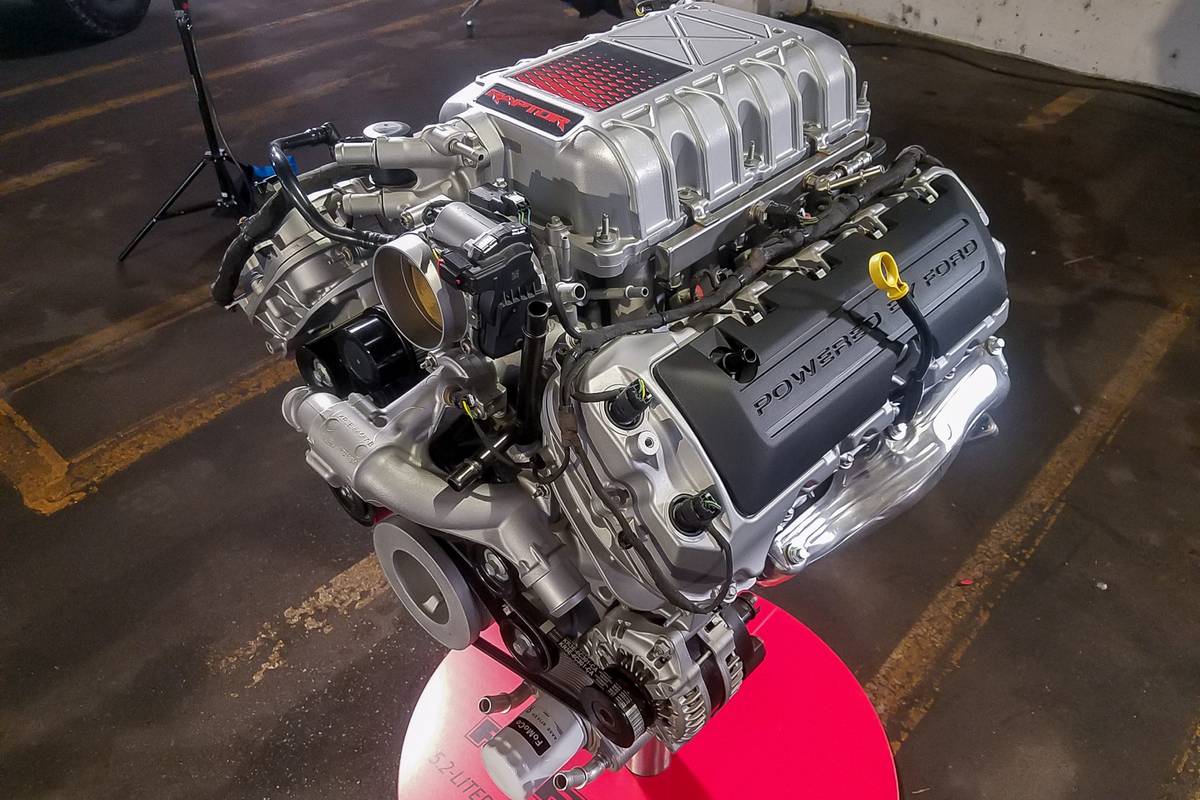
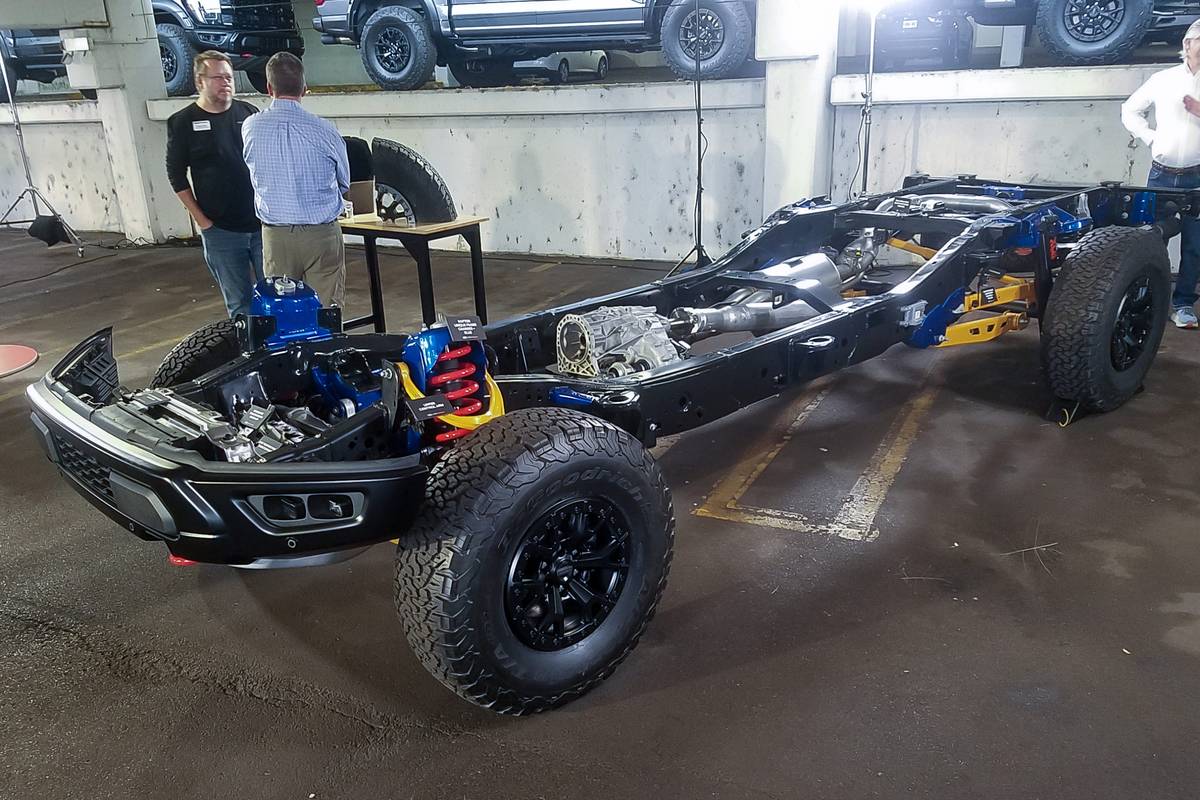
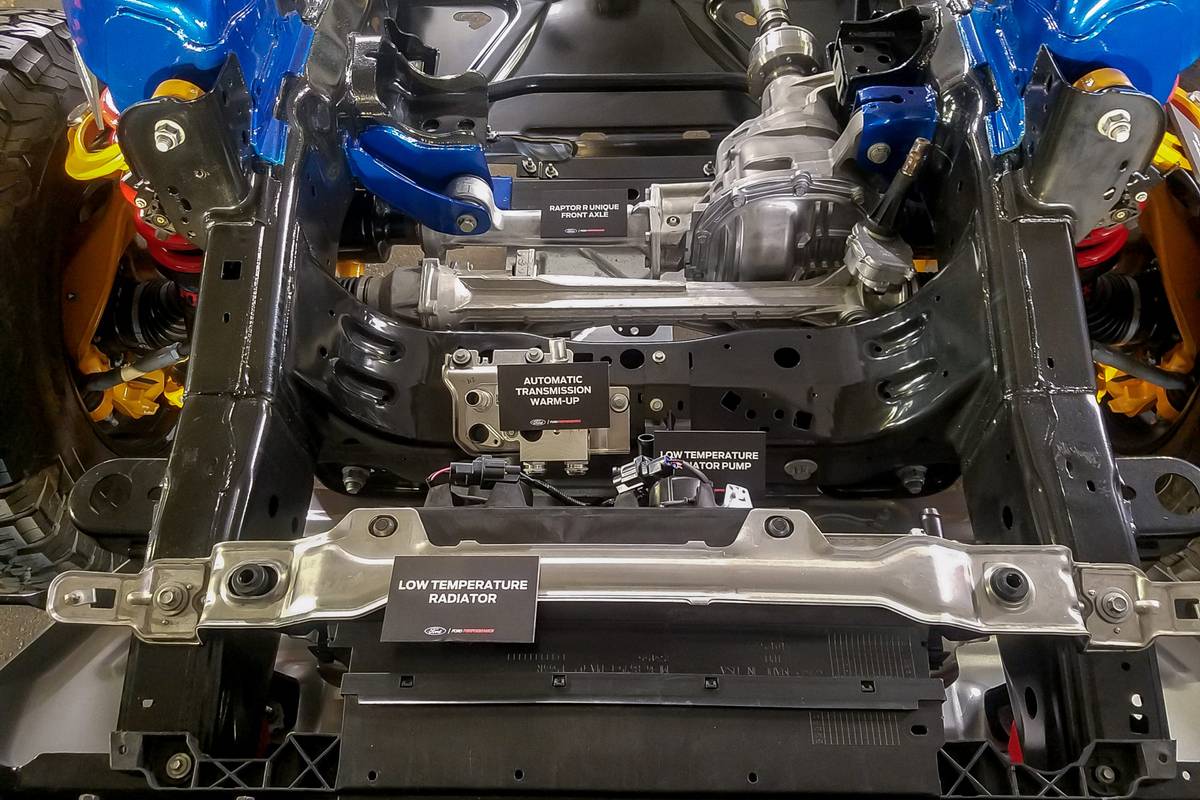
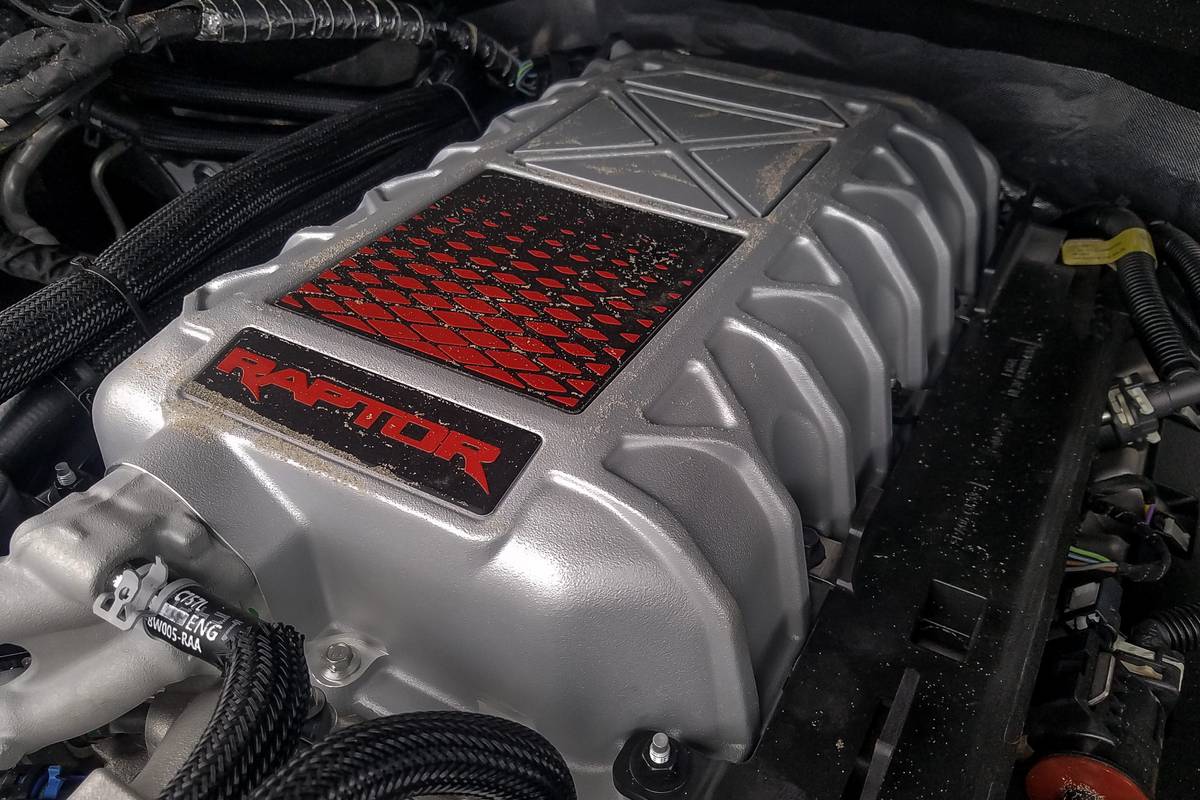
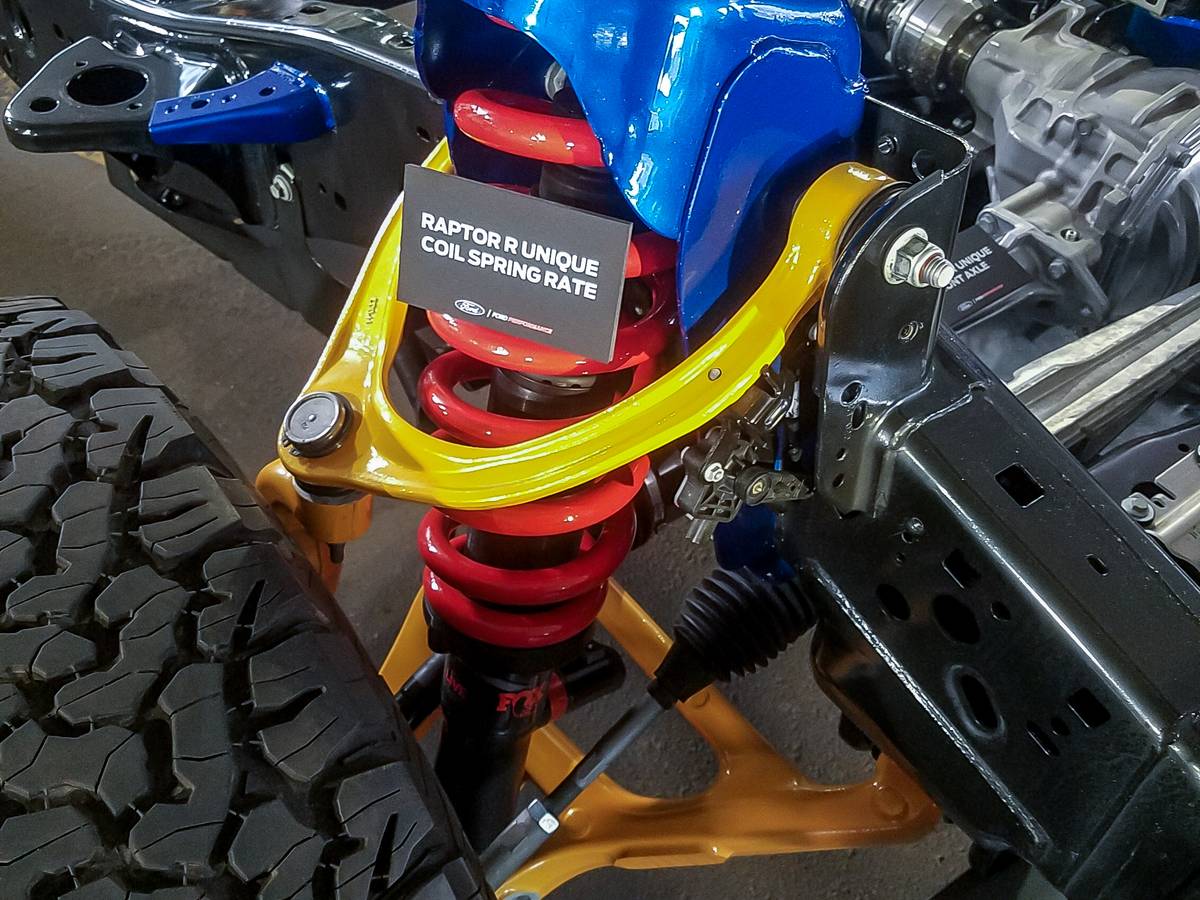
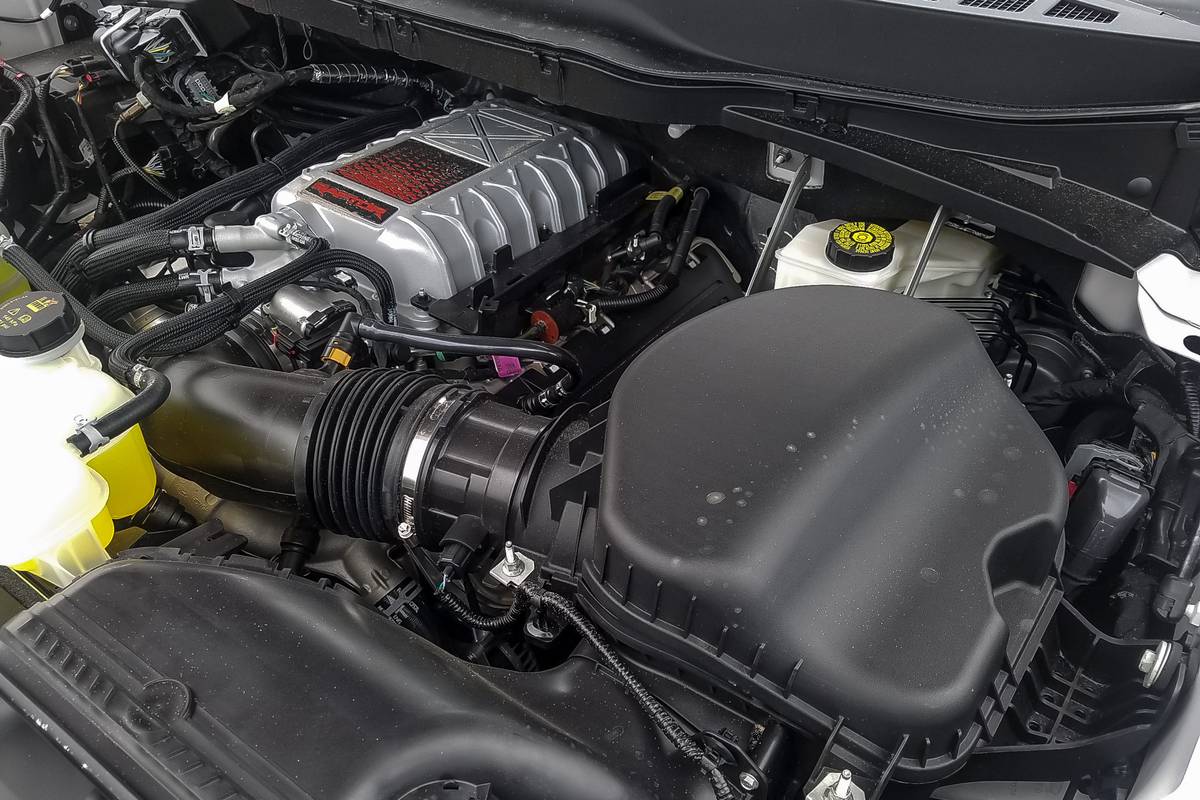
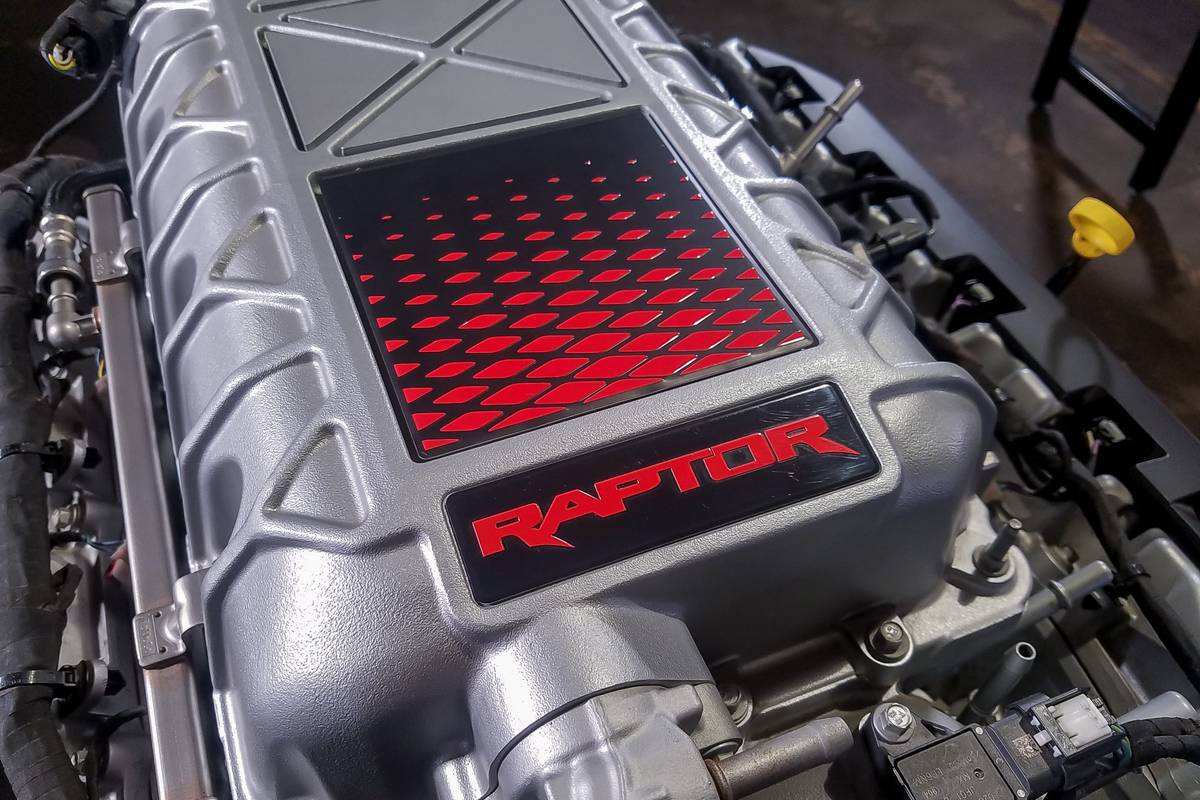
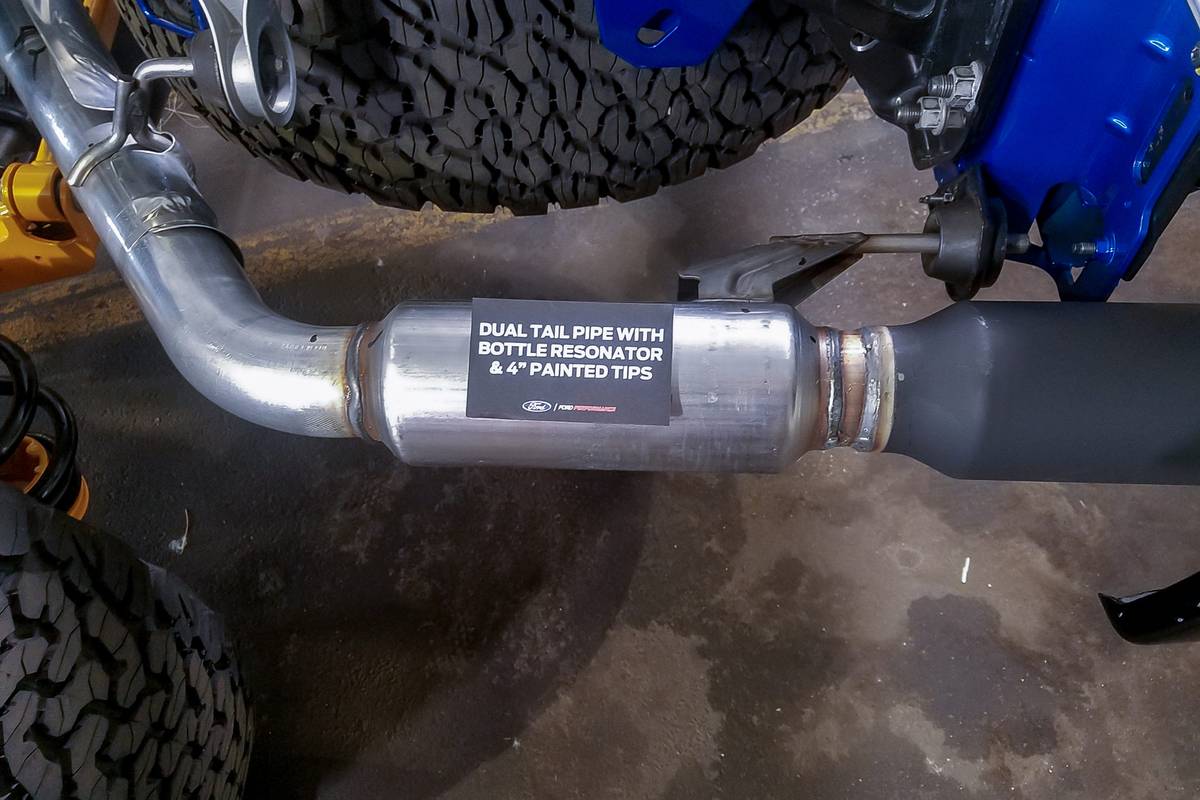














On-Road Manners
The Raptor R is a truck built for barreling over, around and through off-road terrain, and that’s exactly what I did with it. At Ford’s media preview event, I blasted one around the nearly 2,000 acres of sand dunes at Silver Lake State Park in Mears, Mich. (Per our ethics policy, Cars.com pays for its own airfare and lodging when attending such manufacturer-sponsored events.)
I was immediately reminded just how big and wide the Raptor is when we set out on the drive. Road construction meant that some of the four-lane roads around the hotel were pared down to fairly tight single lanes in each direction, marked with orange traffic barrels. The lanes were narrow enough that I was mildly concerned I’d brush against a barrel or two if I wasn’t careful. The Raptor’s extreme width (96 inches including the rearview mirrors) means you have less “wiggle room” on the road, in parking lots, in your garage and so on.

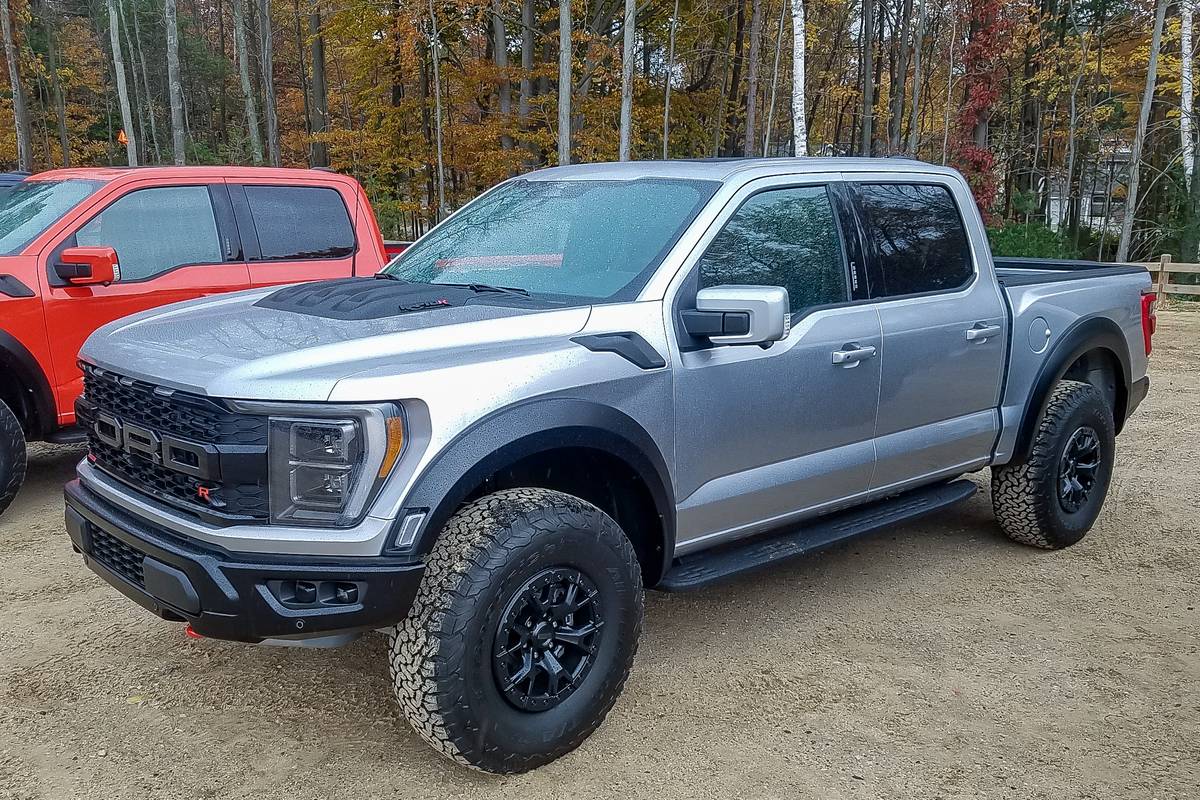
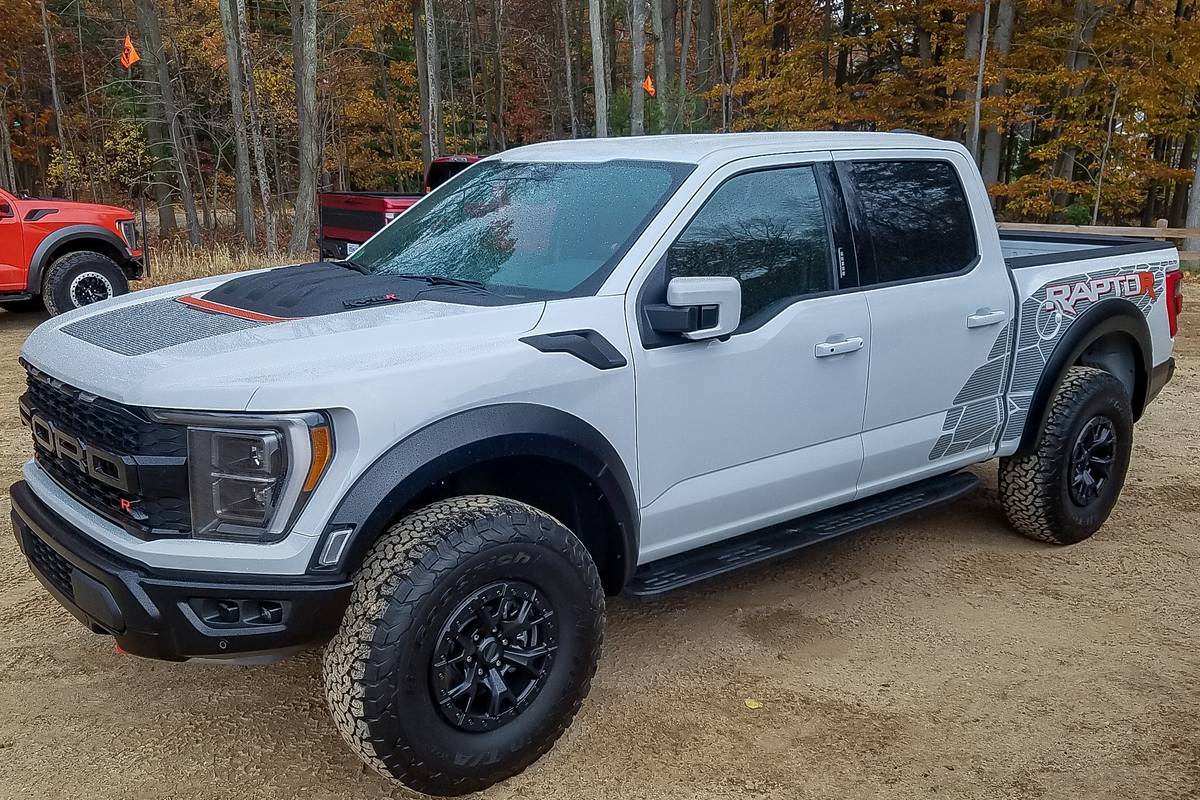
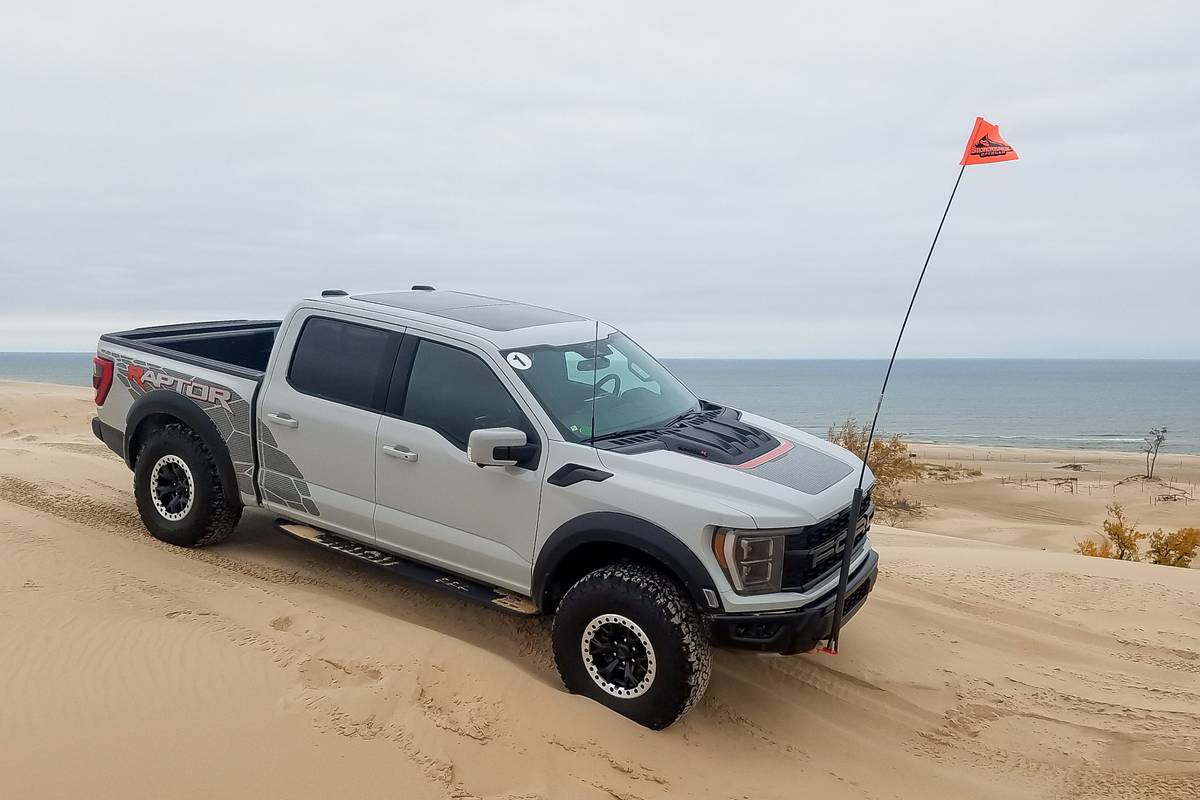
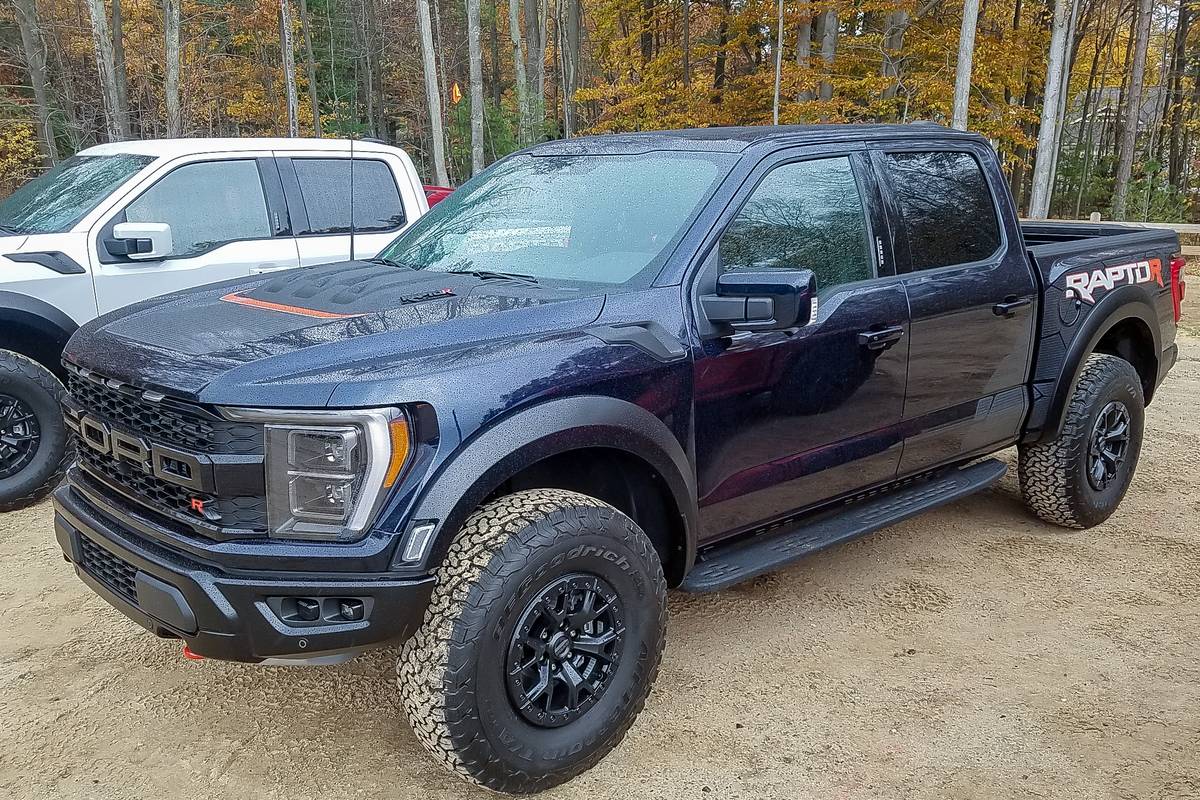
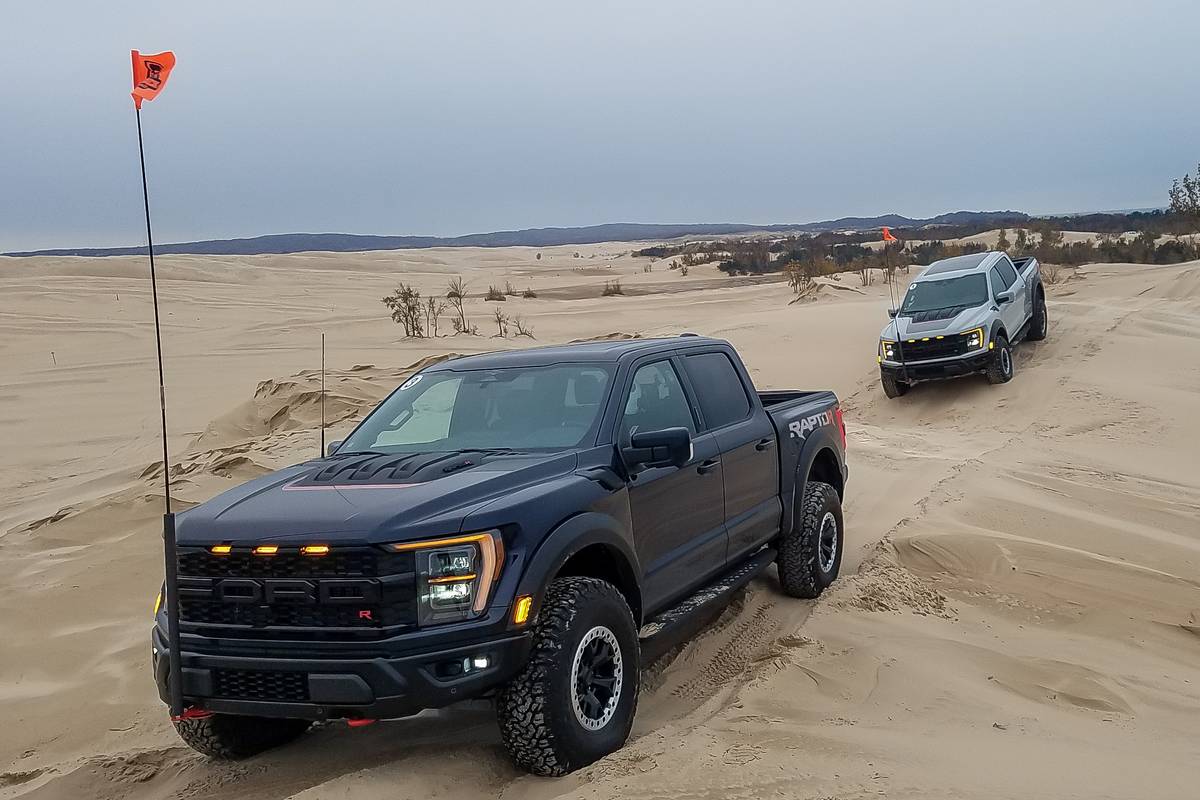
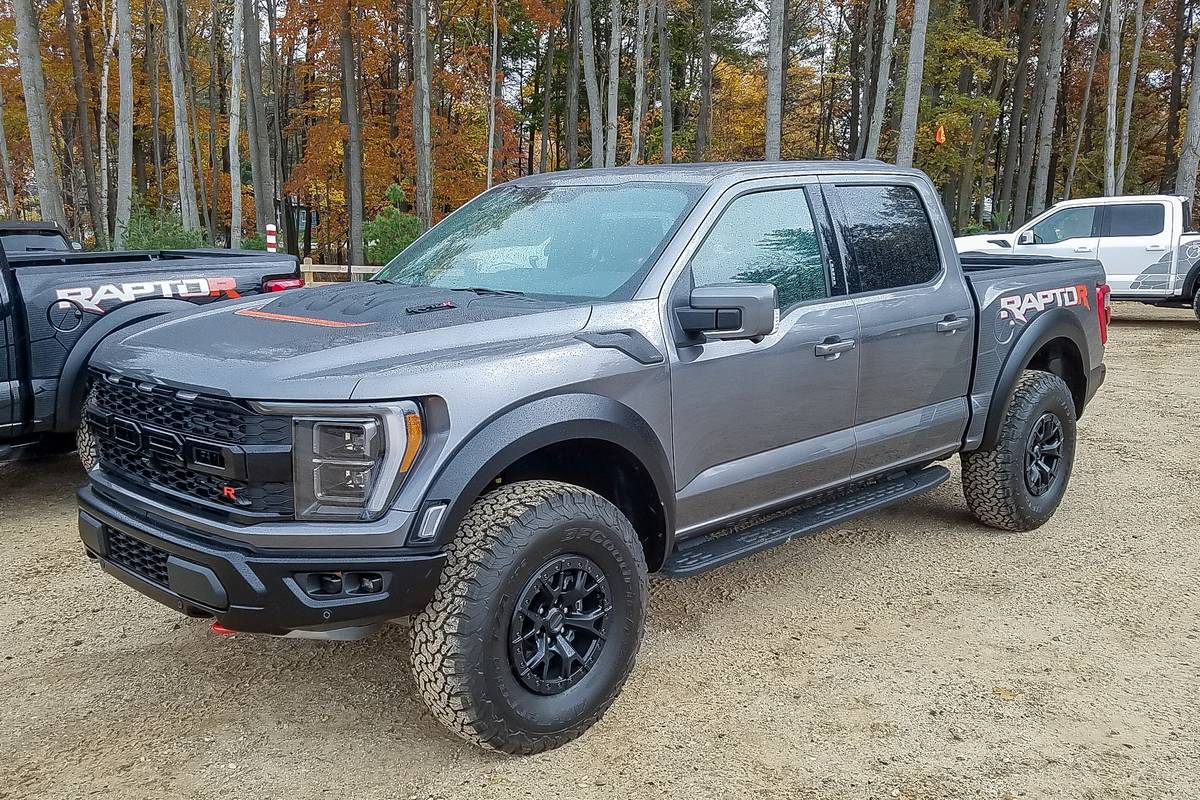
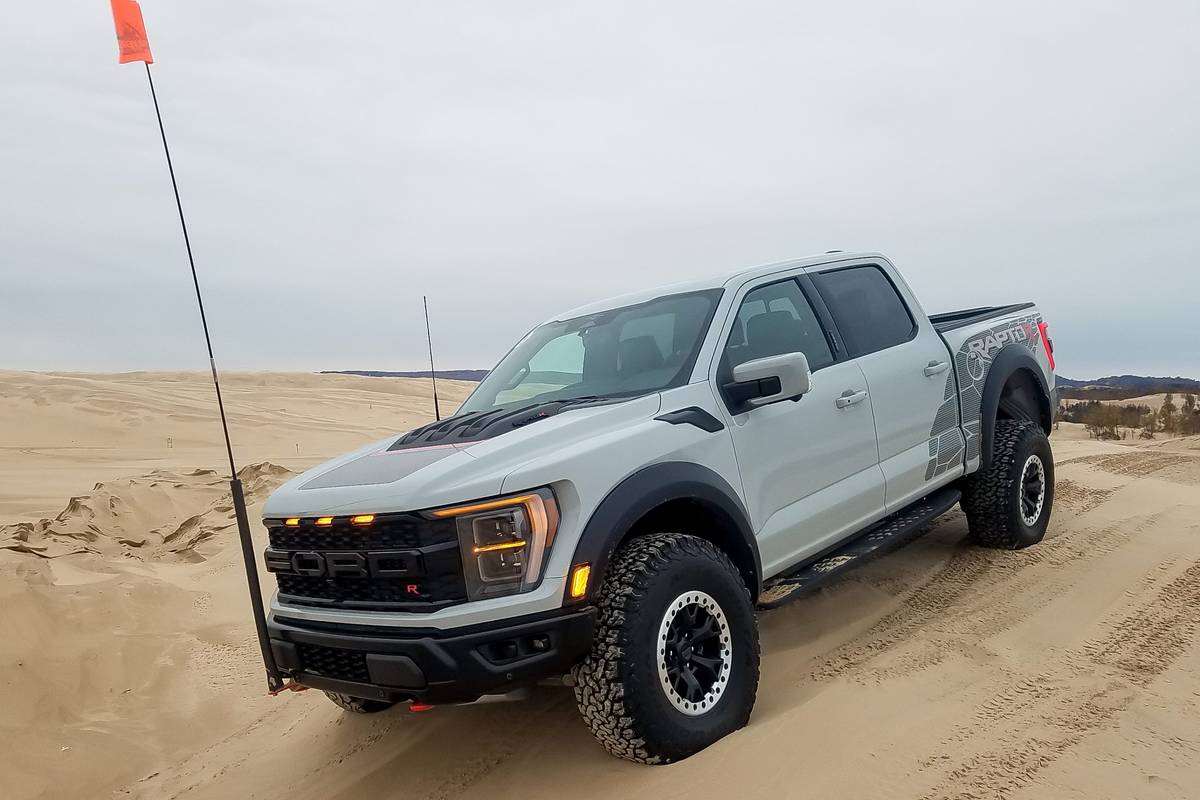
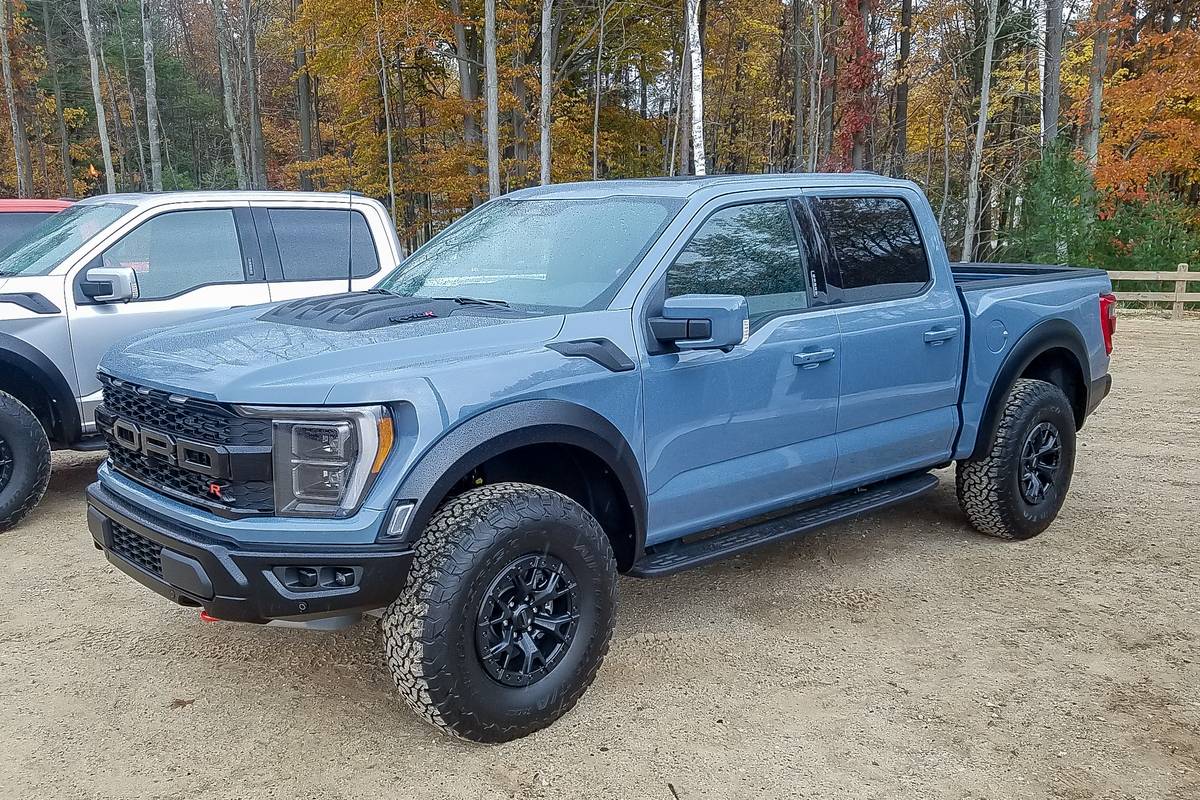
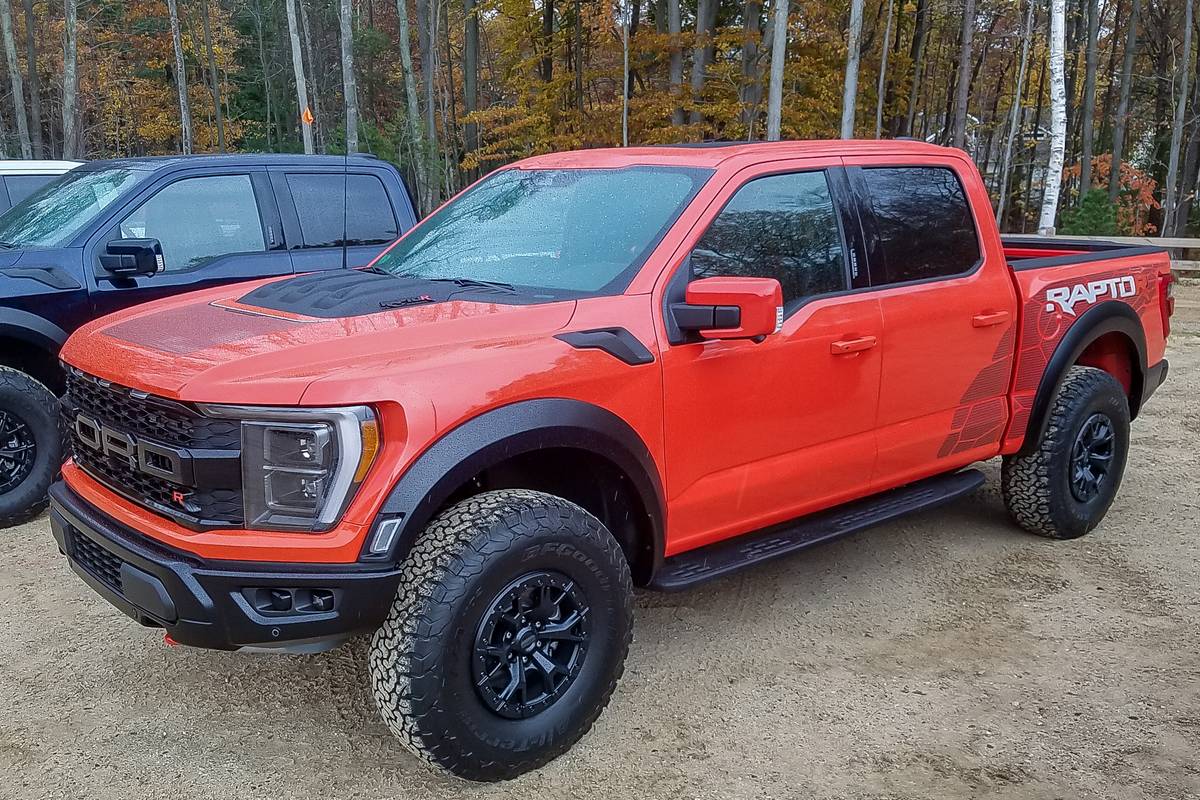
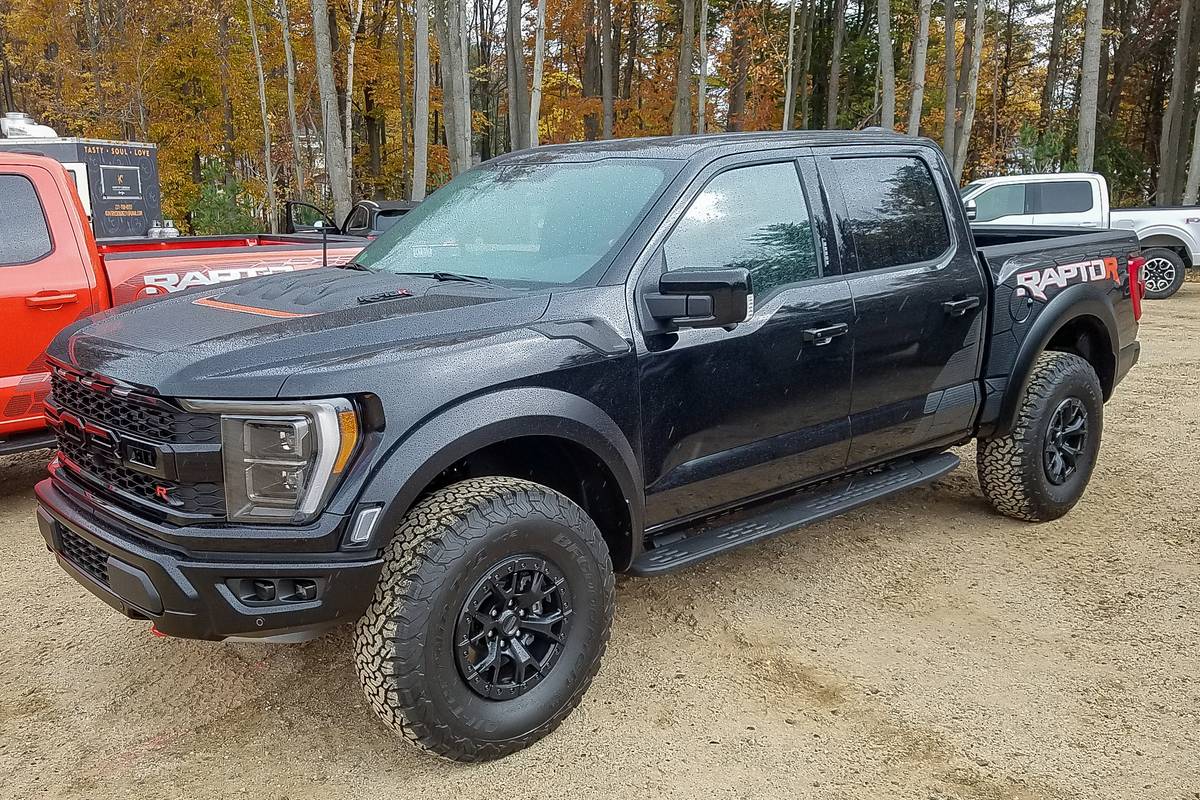
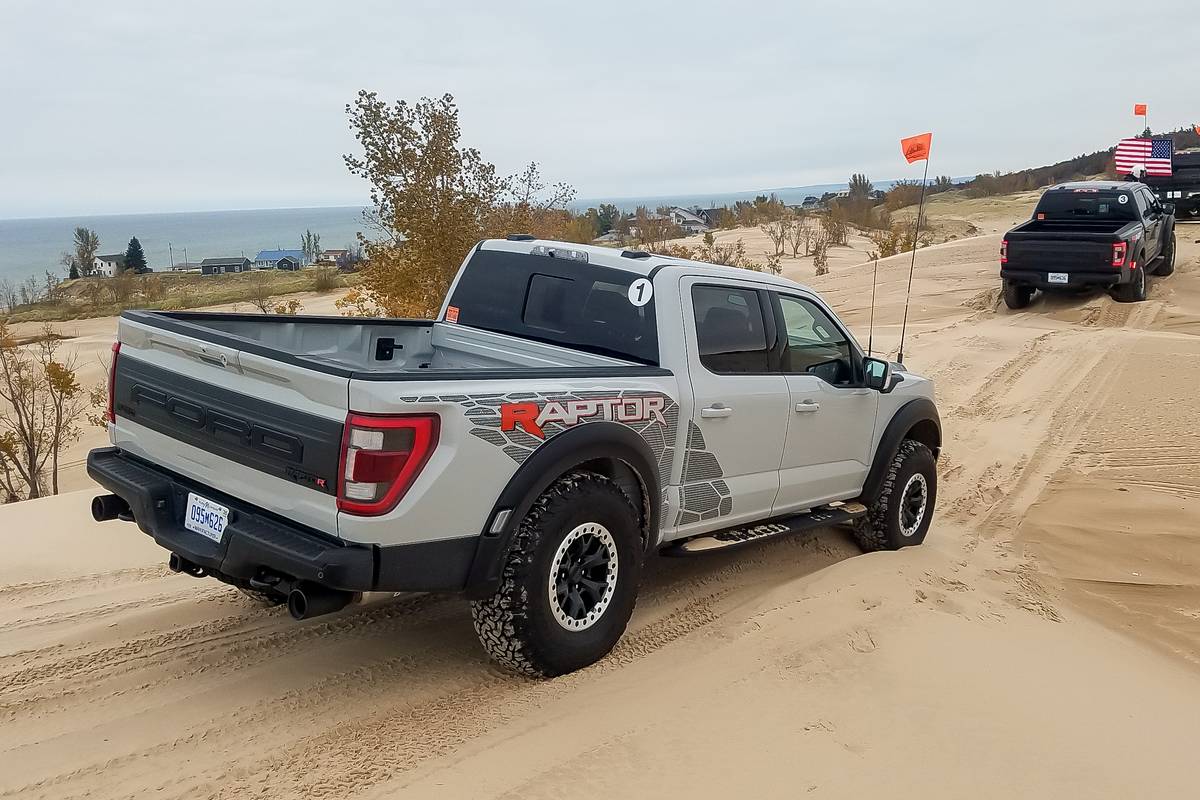












You also sit very high off the ground in a Raptor R thanks in part to its standard 37-inch tires — the largest of any regular-production truck. (The 37s are optional for the regular Raptor.) The extra-tall tire sidewalls and the seating position contribute to a somewhat wallowy, top-heavy feel on the road even though the steering is direct and responsive. Steering feel can be set to one of four modes (Normal, Comfort, Sport or Baja); I preferred the extra heft and feedback of the Sport mode. While the Raptor R isn’t as silly as a Jeep Wrangler Unlimited Rubicon 392, its towering height, off-road-optimized suspension and flexible tires can induce a pucker factor that should keep most drivers from fully unleashing its 700 hp at the wrong time on the street.
Thankfully, the massive BFGoodrich all-terrain tires were much quieter on the highway than I expected. Wind rush was actually a more prominent source of noise in steady-speed cruising. The exhaust note is loud, too (imagine that). In addition to the extra 250 hp you get by choosing a Raptor R over a regular Raptor, the main part of the R’s appeal is the good ol’ V-8 noises it makes. The NASCAR-quality soundtrack is also tunable via a button on the steering wheel to one of four modes: Quiet, Normal, Sport or Baja (the last one is loud enough that it’s for off-road use only). As delightful as the brawny exhaust note is, it can get tiresome on a longer highway drive, so I appreciated the Quiet mode — it nixed the intrusive drone of the engine in steady-speed driving but still allowed plenty of rumble when accelerating.
It’s hard not to dip deeply into the throttle frequently when you’re driving a Raptor R. Acceleration is authoritative from any speed, and the 10-speed automatic transmission is nicely matched to the engine. I’ve driven a few nine-speed transmissions that sometimes seem to dither when selecting the proper gear, but this automatic was always on its game. The steering-wheel-mounted shift paddles work well, too, but I didn’t feel the need to resort to them.
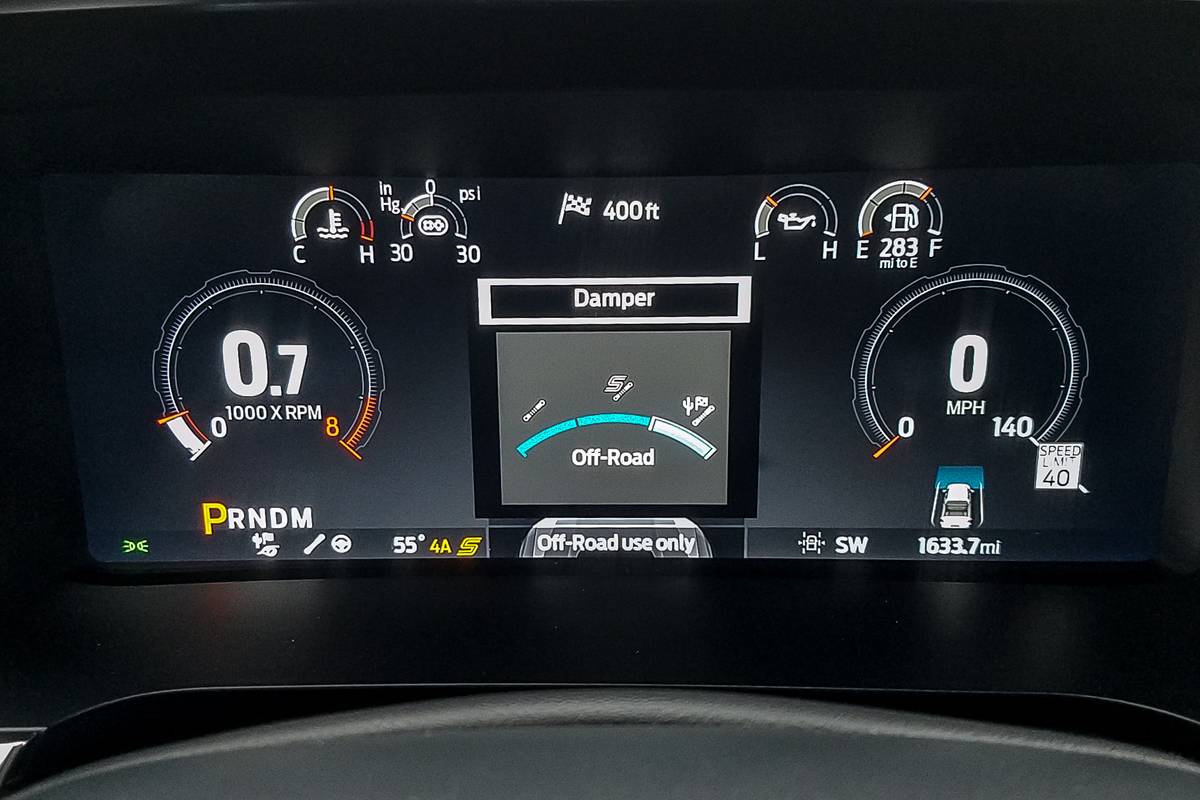
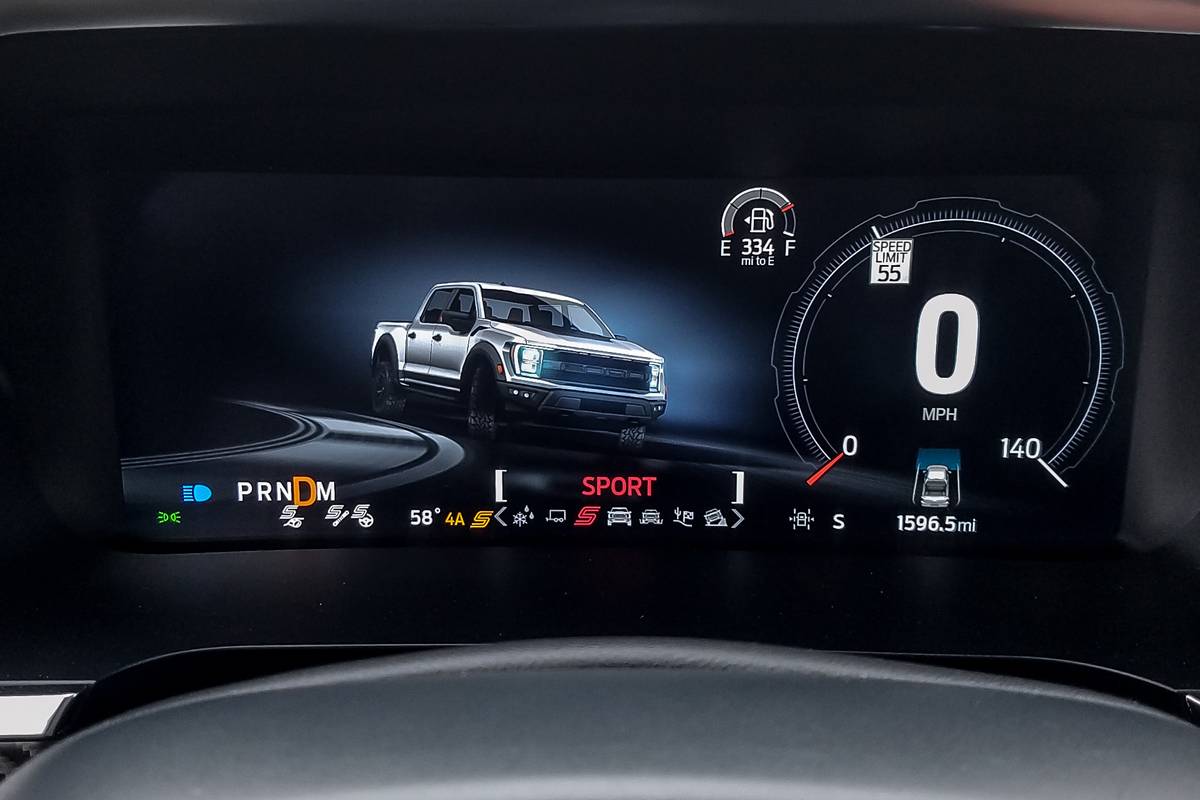

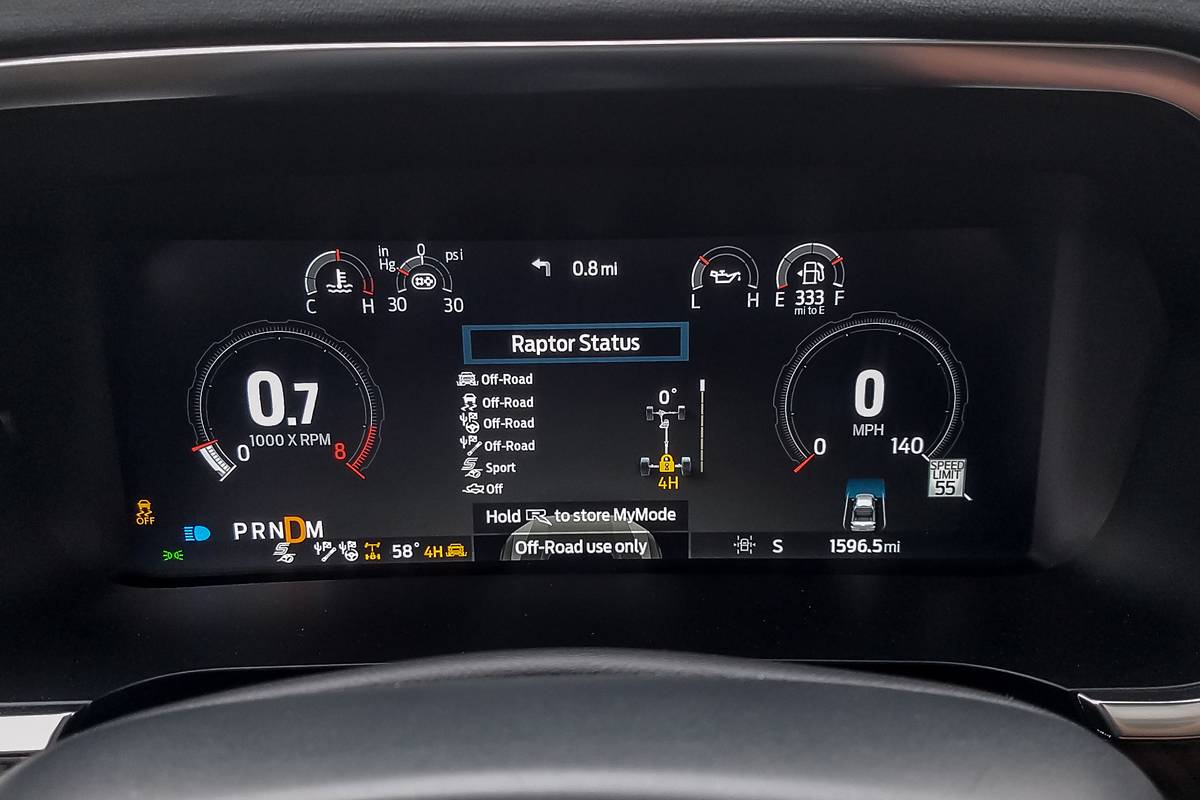
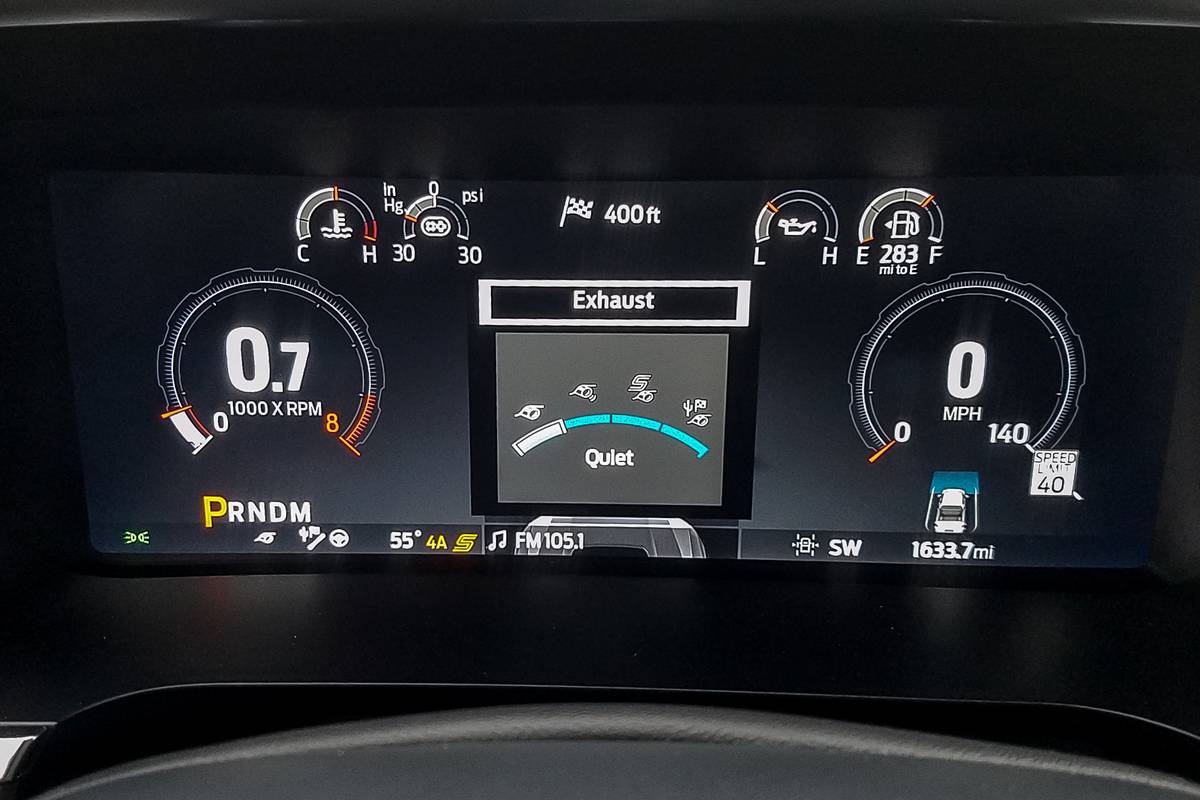
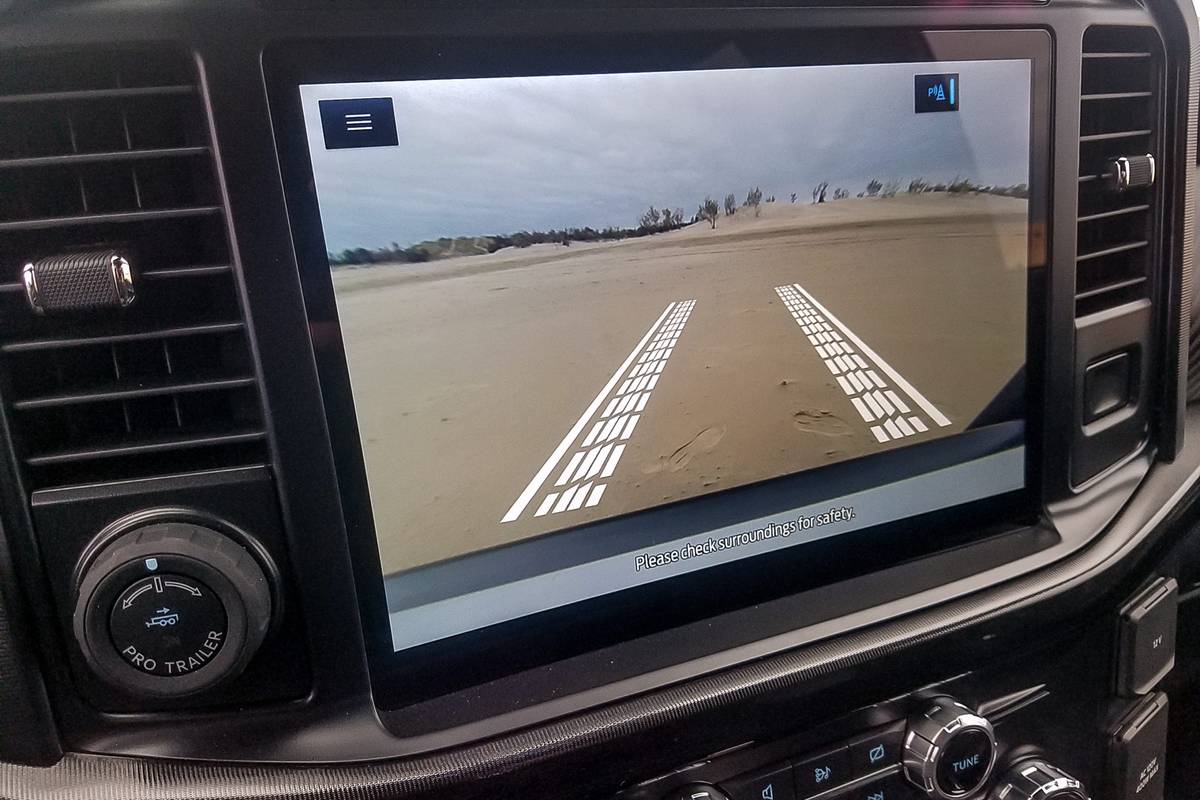
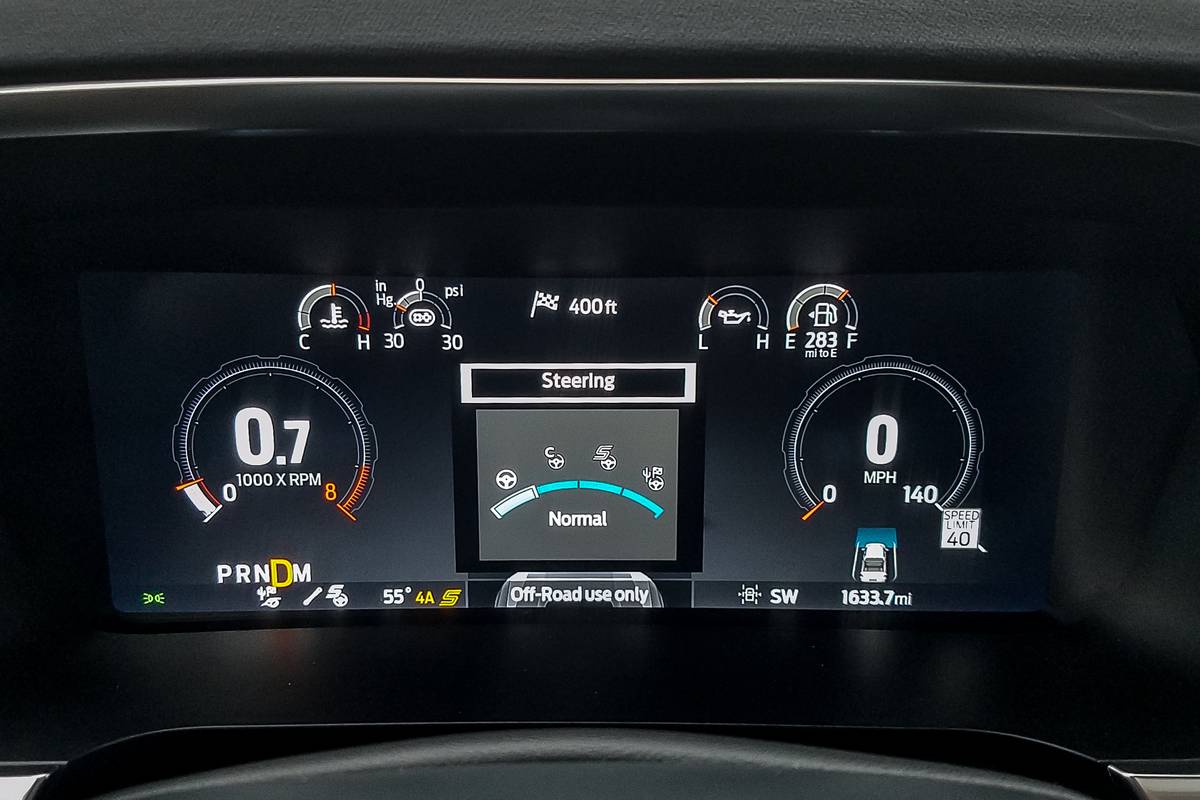
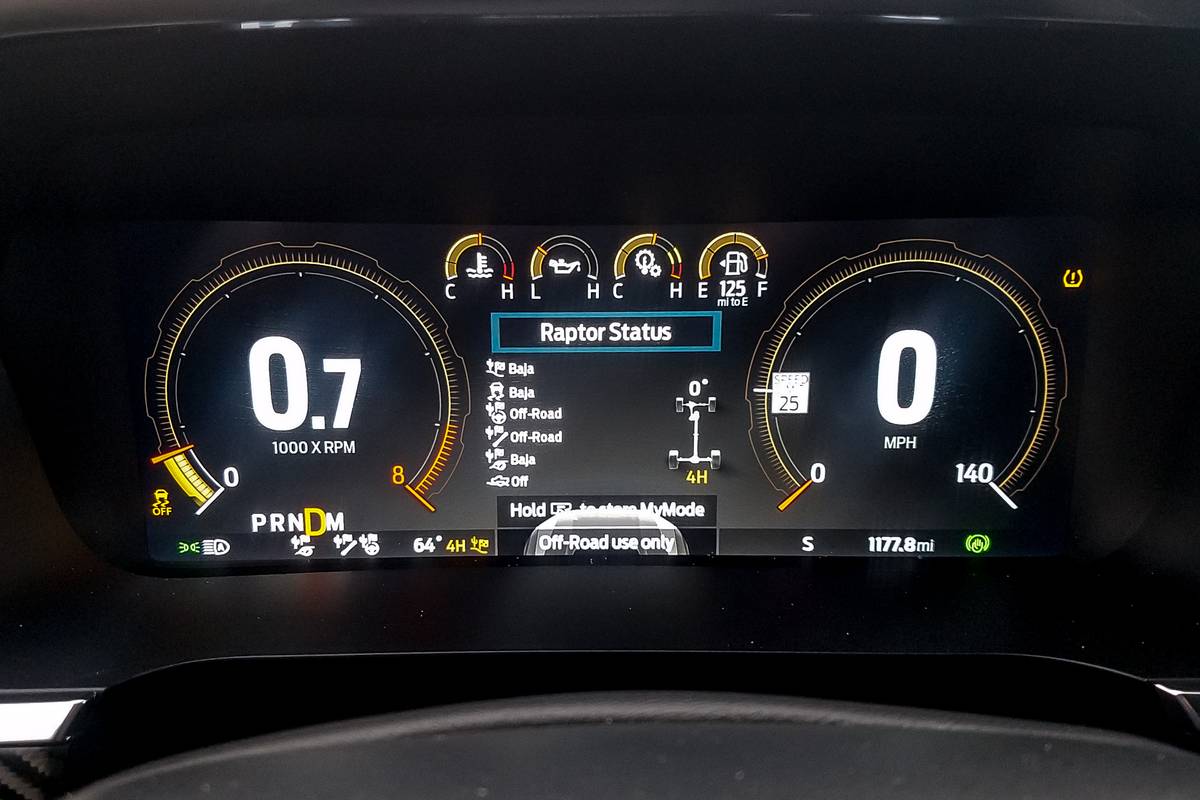
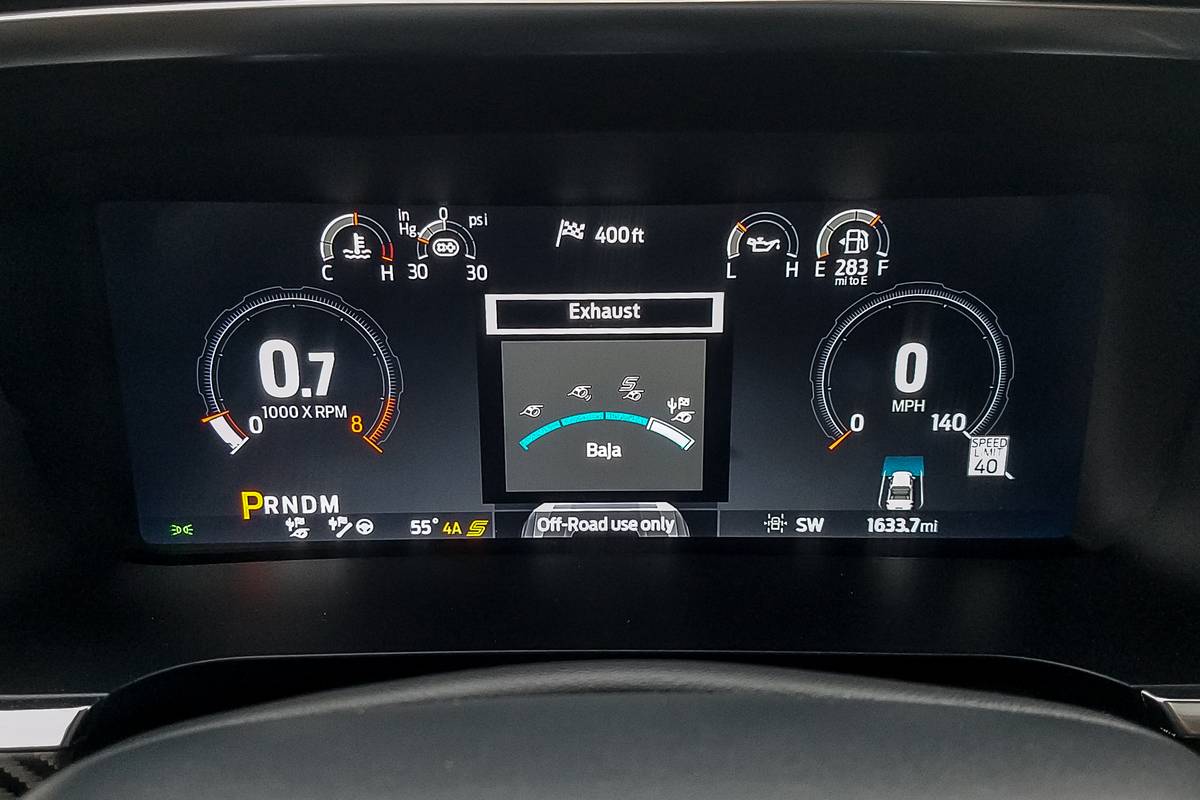
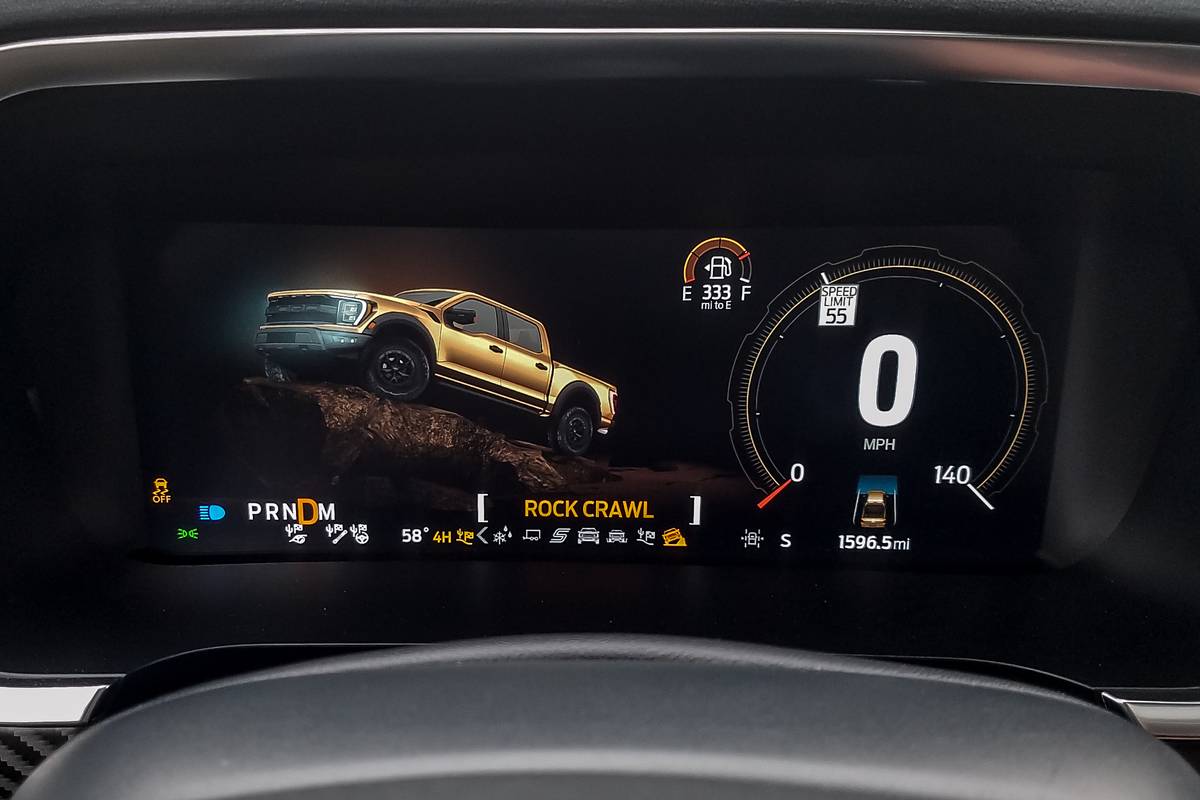
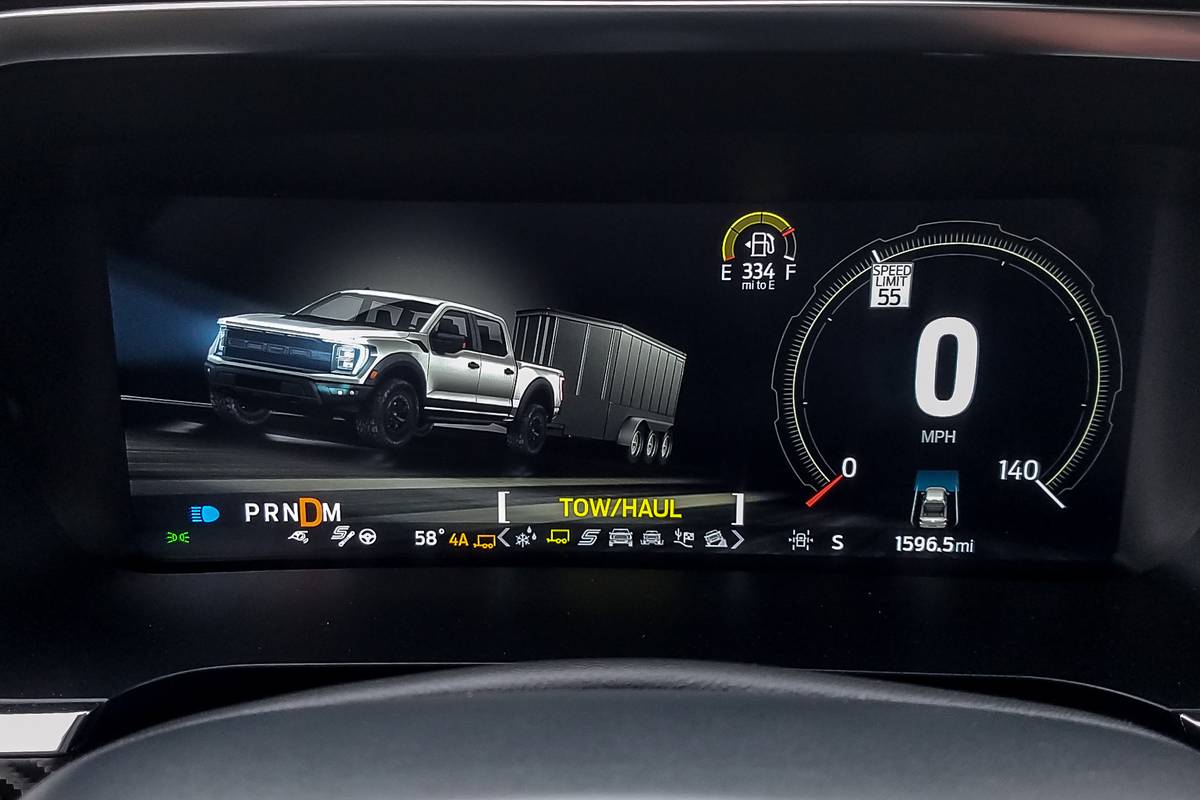
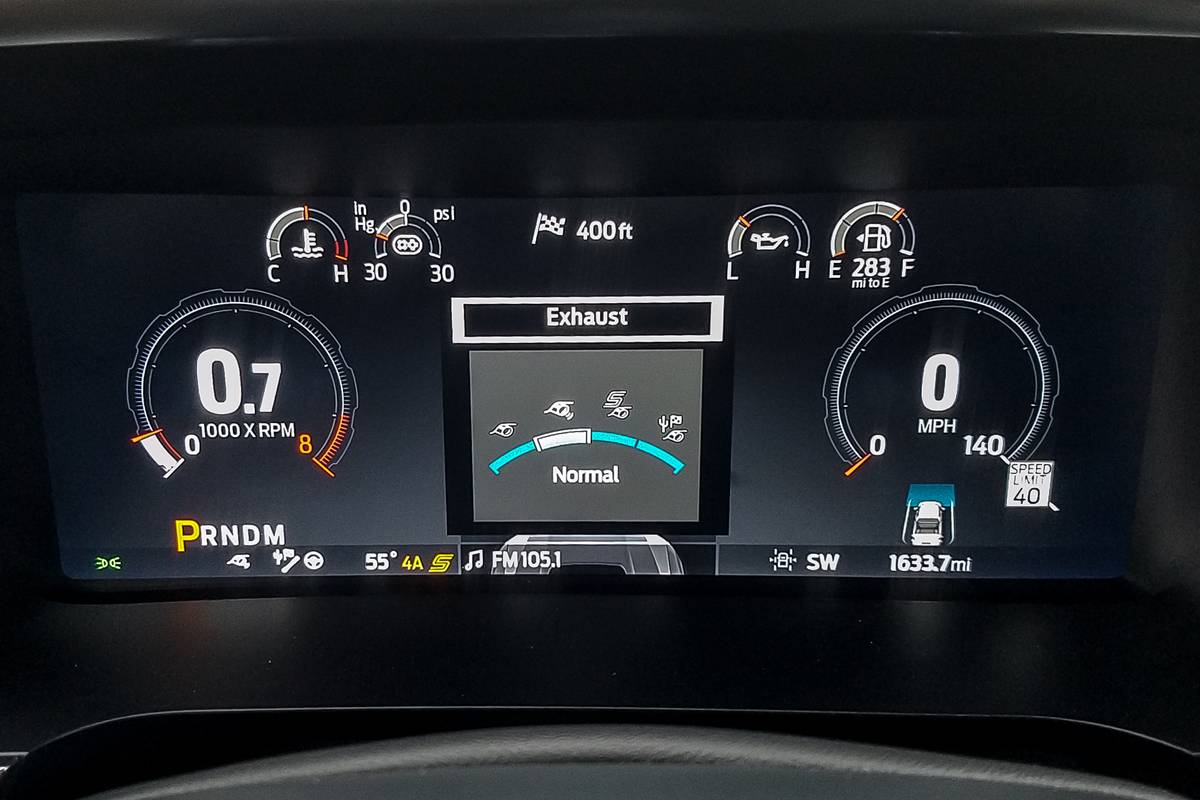


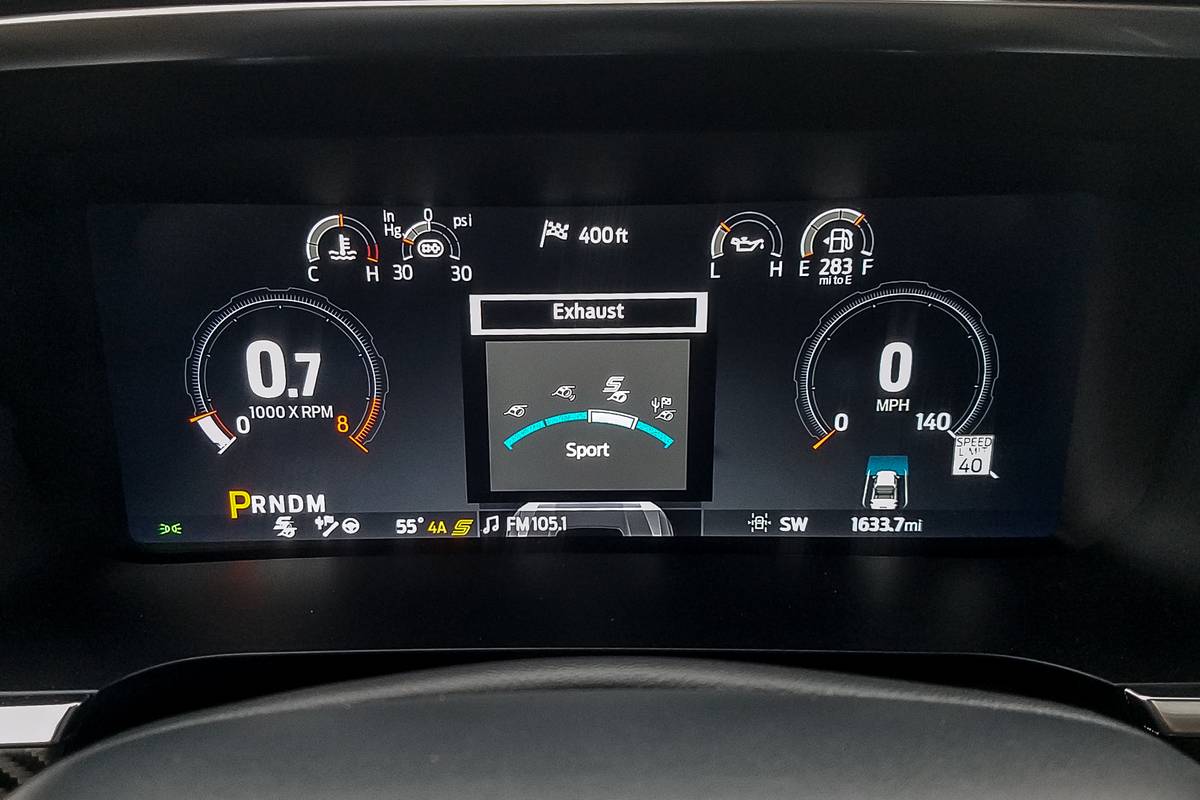
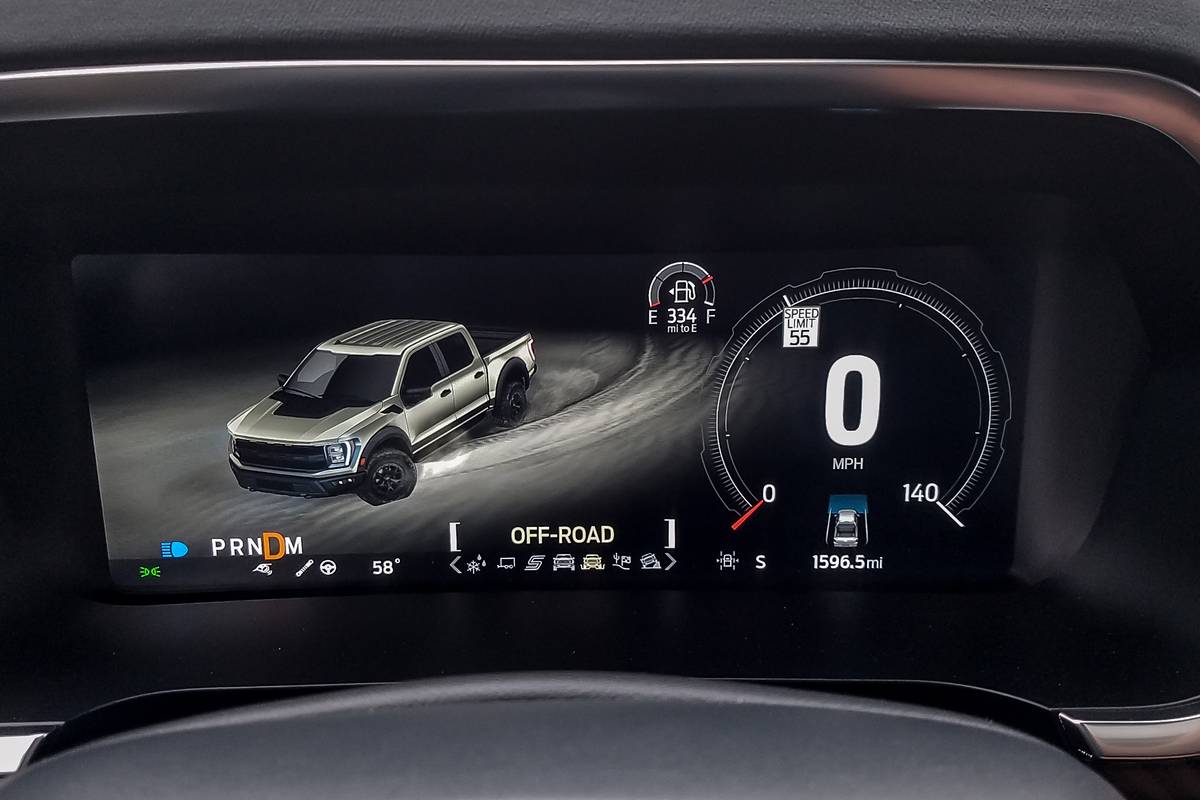
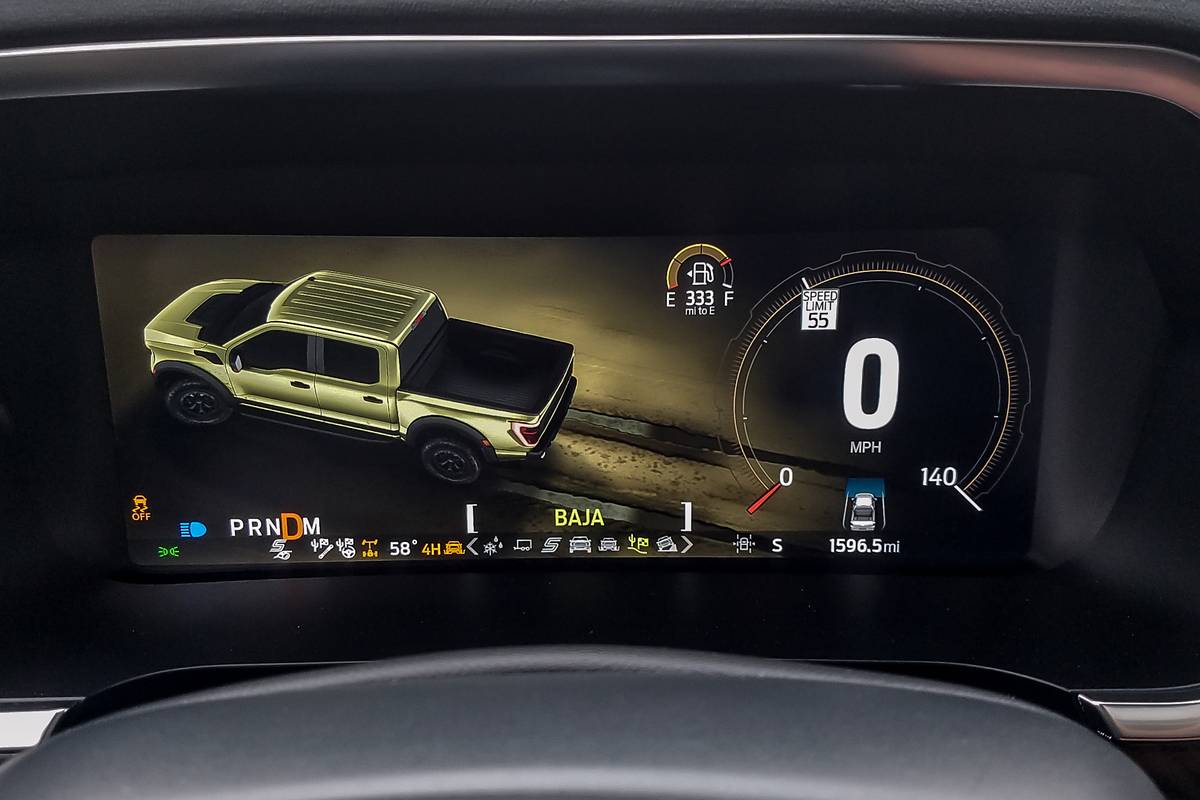

















Slinging Sand Off-Road
When we arrived at the Silver Lake off-road park, we swapped into off-road-prepped Raptor Rs — all were outfitted with orange safety flags mounted to the front bumper (required for visibility in sand-dune driving), beadlock rims (all Raptor Rs come with beadlock-capable 17-inch wheels) and tires that were deflated to 15 pounds per square inch for better sand traction.
The Raptor R felt 100% at home in Silver Lake’s extreme terrain. Whether you’re traveling 7 mph or 70, the suspension gobbles up bumps, ruts, moguls and what have you. We did straight-line acceleration runs on a flat area of the park, and the Raptor’s steering felt ideally tuned for keeping the truck pointed straight as all four tires clawed for traction over the loose, rutted sand. The bright-orange stripe at the top of the steering-wheel rim lets you easily check the wheel’s position at a glance.
We effortlessly climbed steep dunes that looked to be about five stories tall. Well, almost effortlessly: The Raptor R has power to spare to motor up those sharp inclines, but negotiating the top of the dune safely requires some deft accelerator-pedal management so you don’t go launching off the peak without knowing what’s on the other side. (The Baja mode activates a forward-facing camera view on the infotainment screen, which is especially handy in situations such as this, while the low-mounted camera helps you see what’s in front of you when the truck’s nose is pointed at the sky.) I’ve done my share of off-road driving, but this was the first time I had driven on pure sand. On my first run up a couple of the dunes, I let off the gas too early, lost too much momentum and got stuck, with the tires digging in near the dune’s peak. No biggie; I just backed down the hill, tried again and got it right. The Raptor R’s gas pedal is nicely tuned for these situations, allowing you to dial in precise amounts of power as needed.
We also got a bit of air off a large mogul we were instructed to hit at 55 mph, carved trails through undulating hills in a slightly wooded area, and kicked up rooster tails of sand and grit all morning. It was a delightful way to spend a day, and the Raptor R was a capable, playful partner through it all.
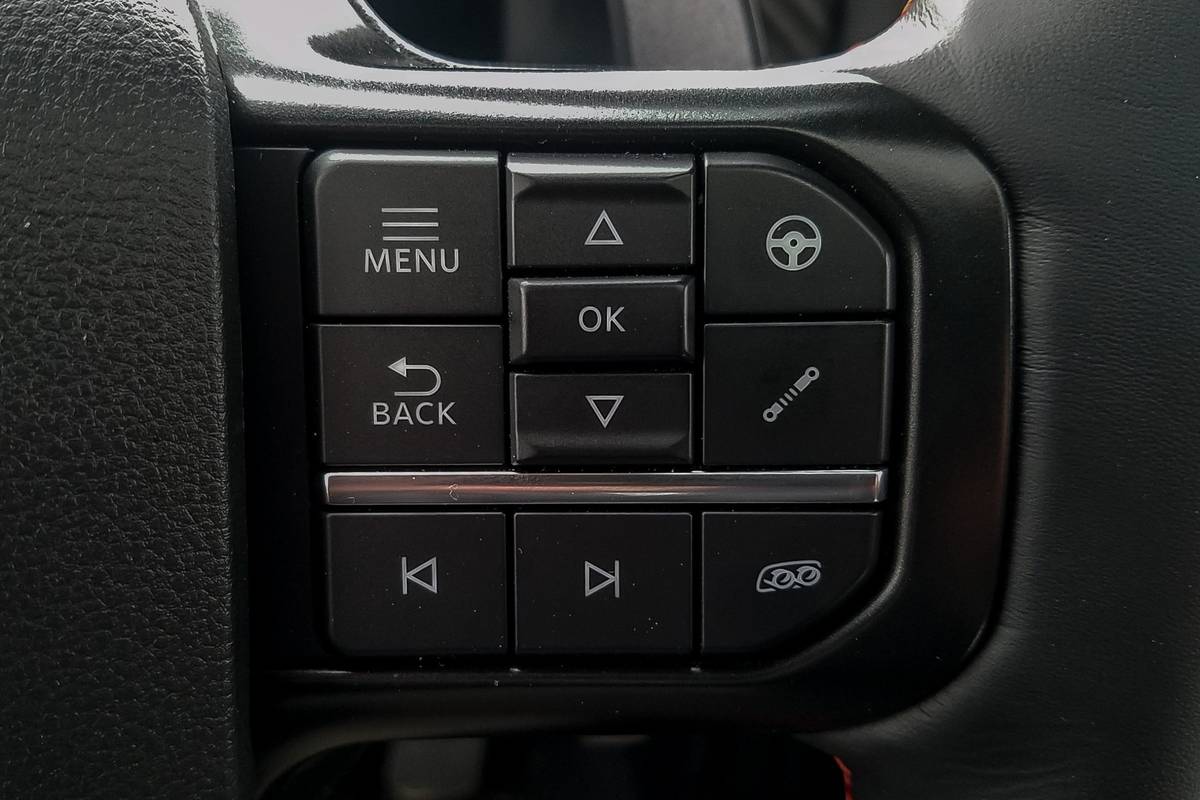
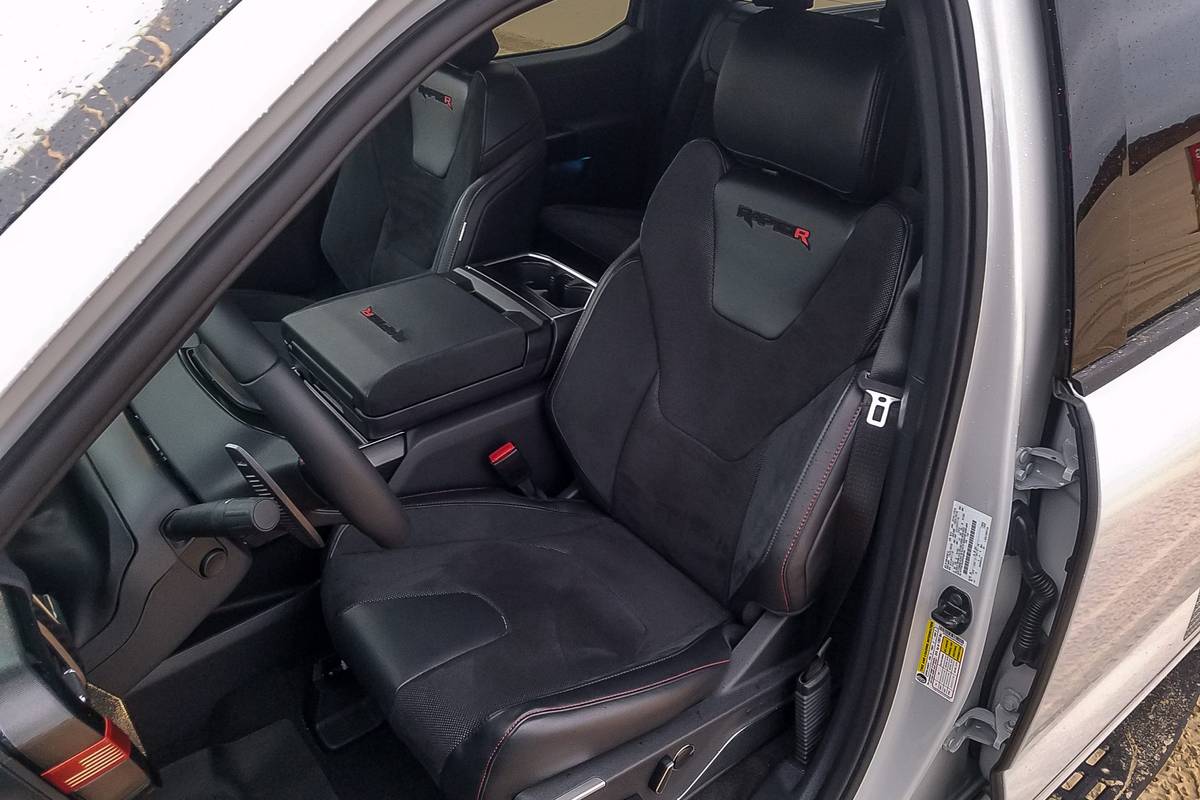
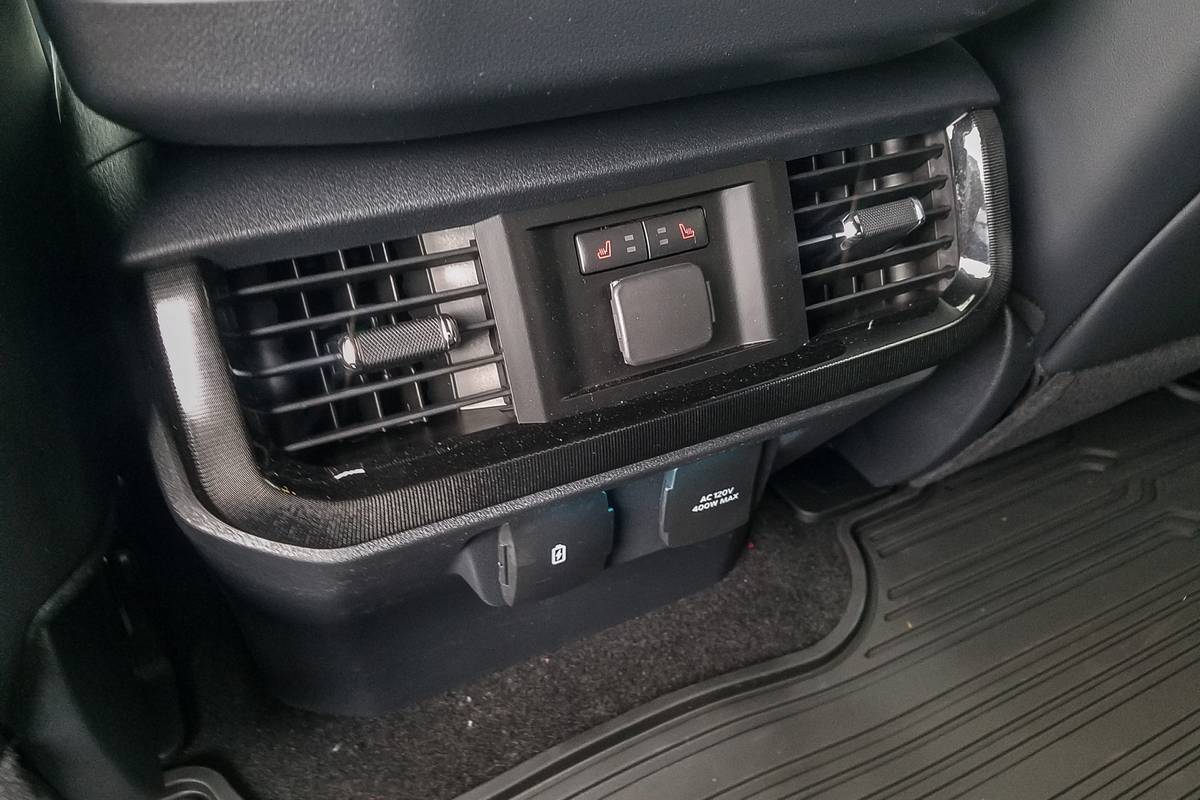
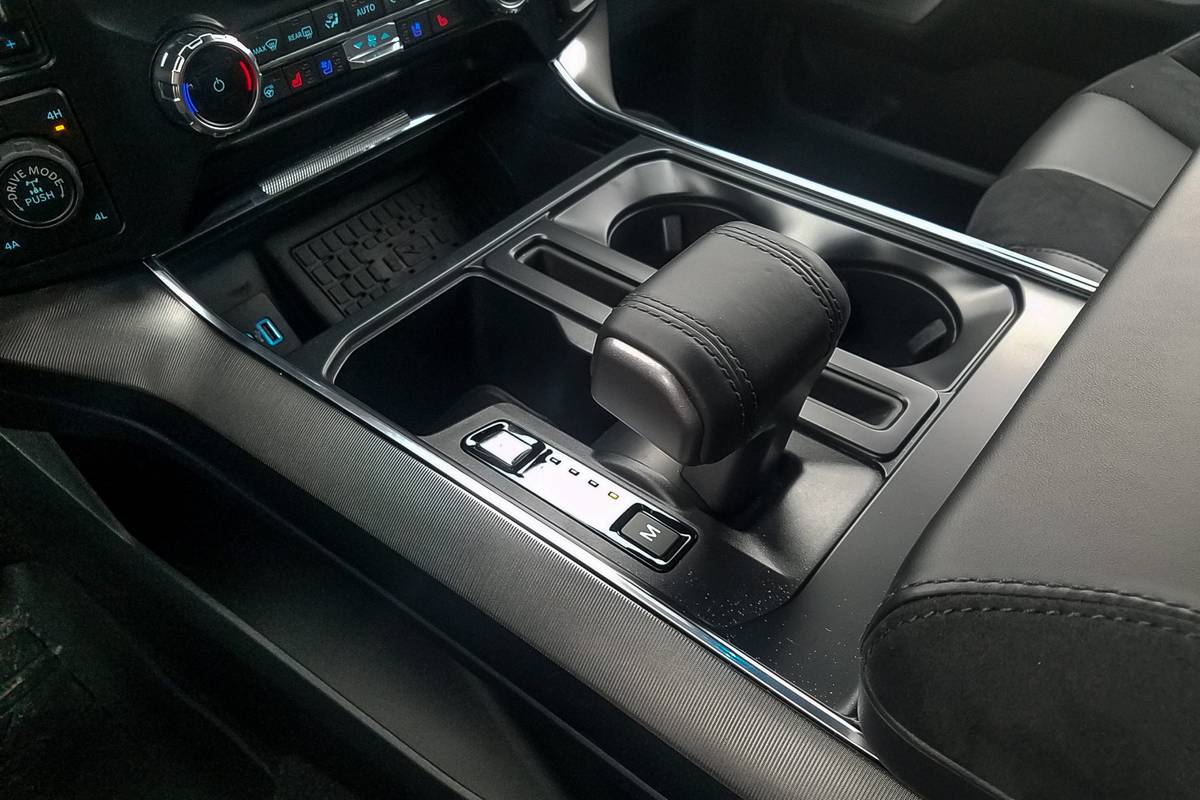



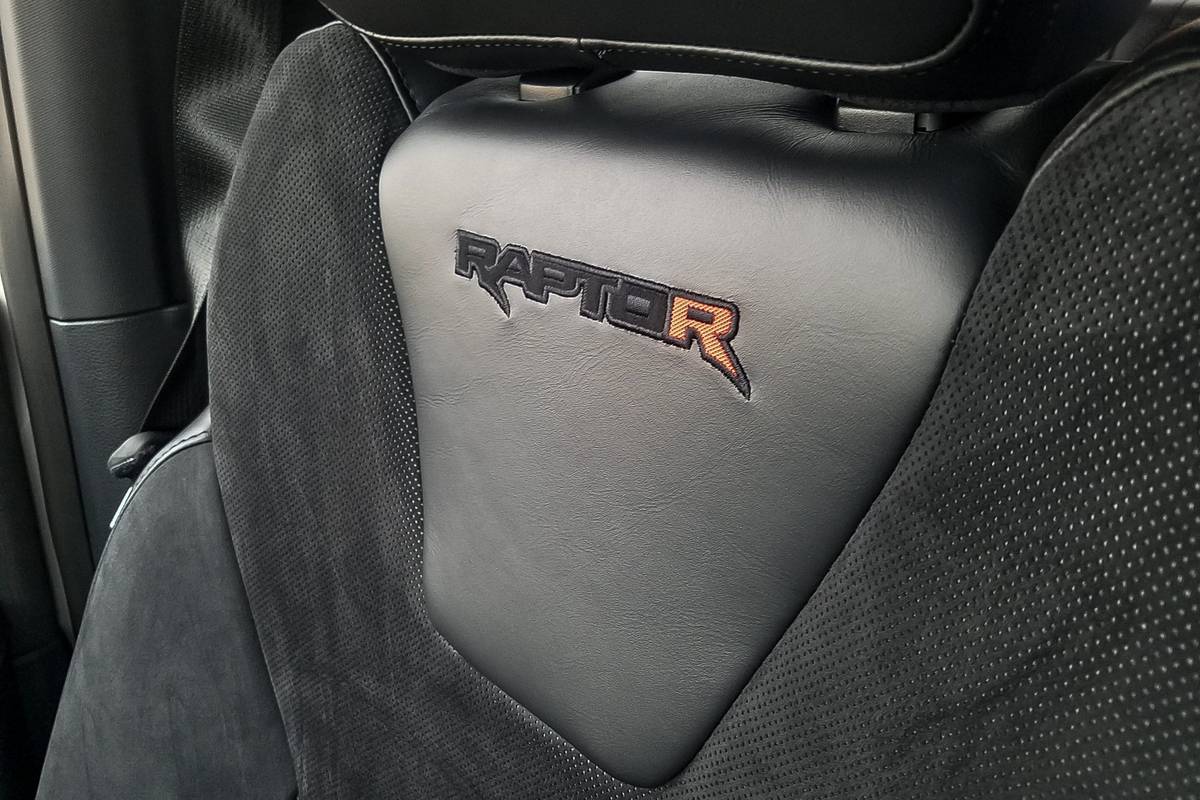
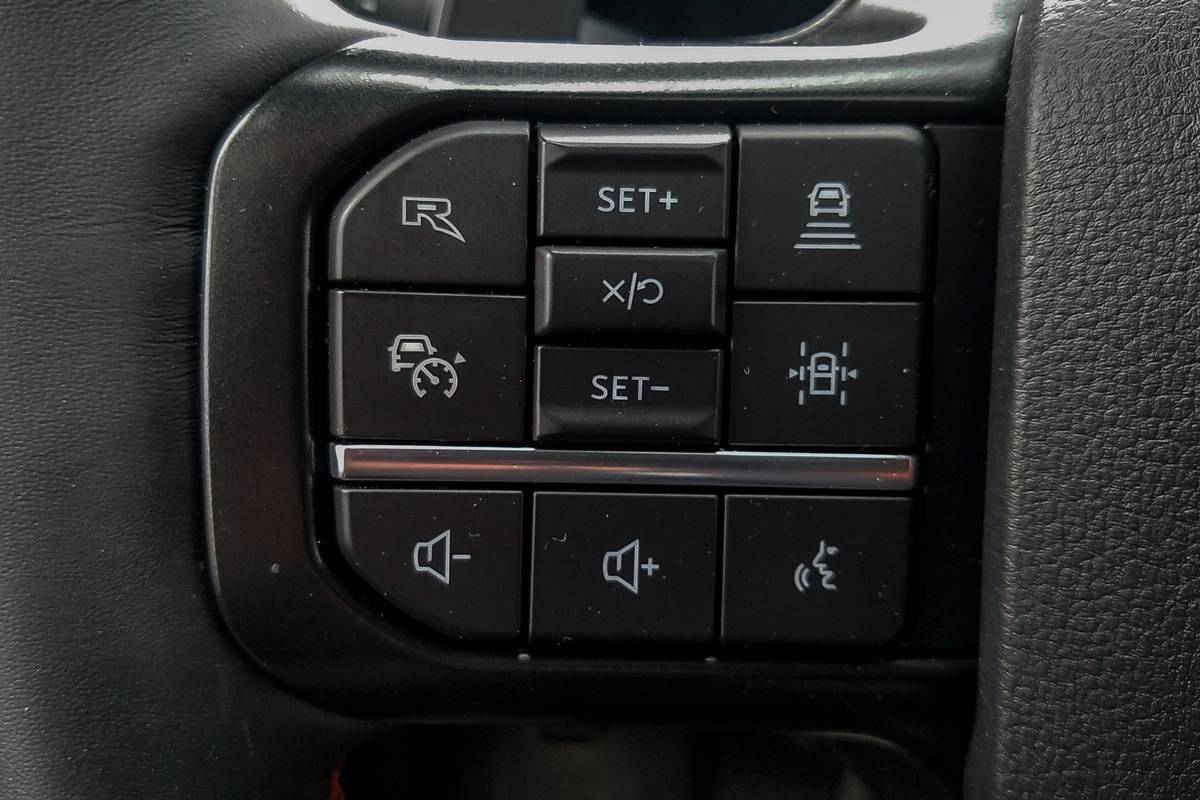
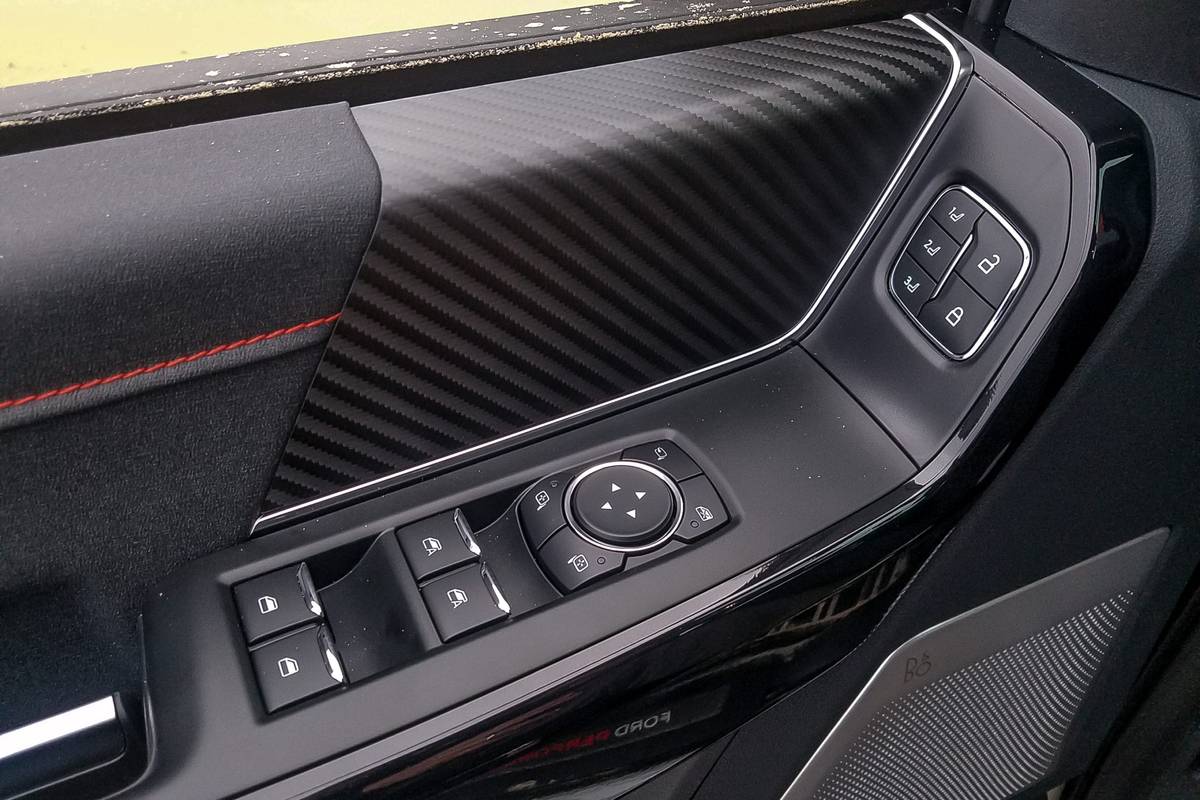
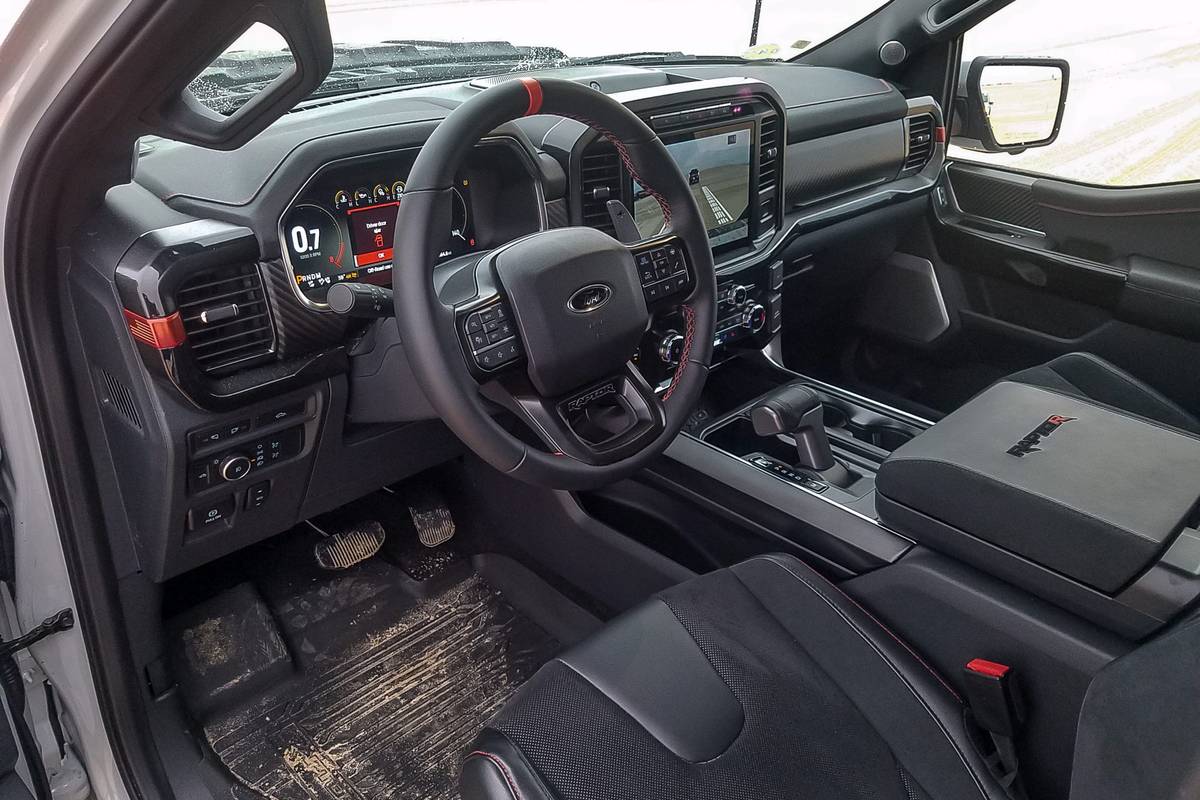
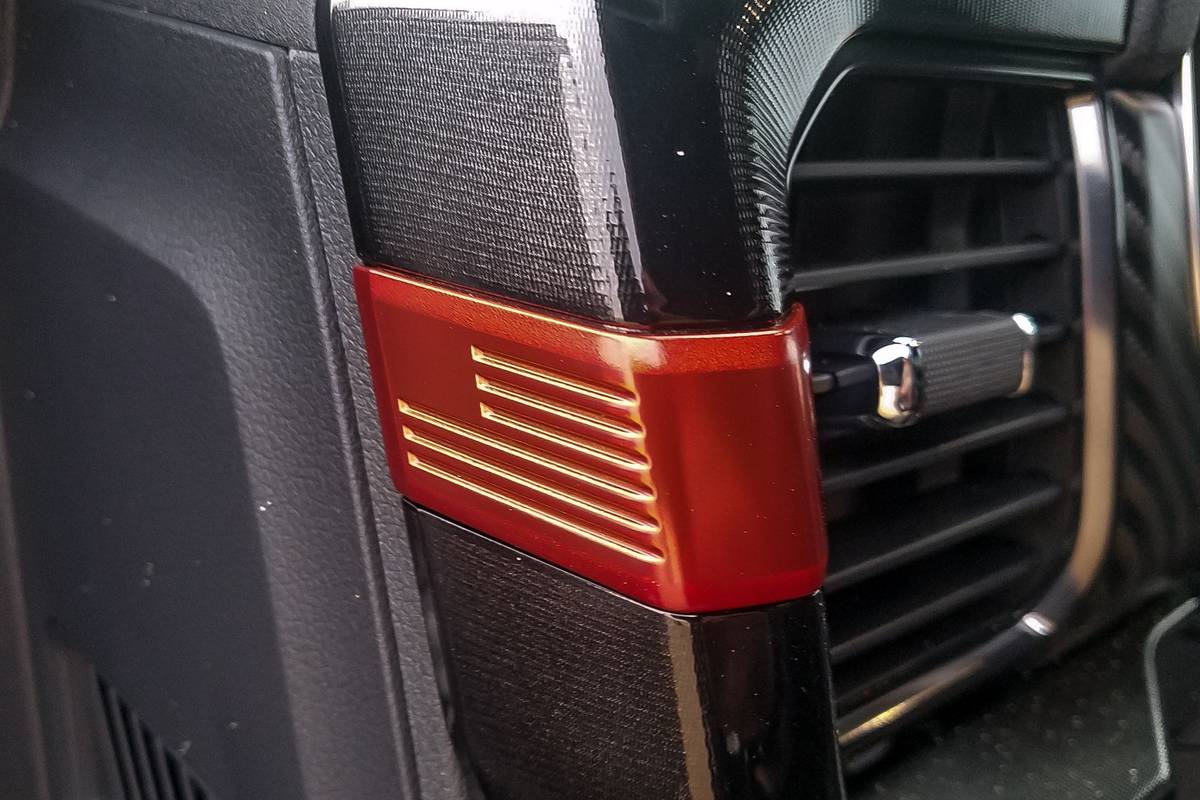
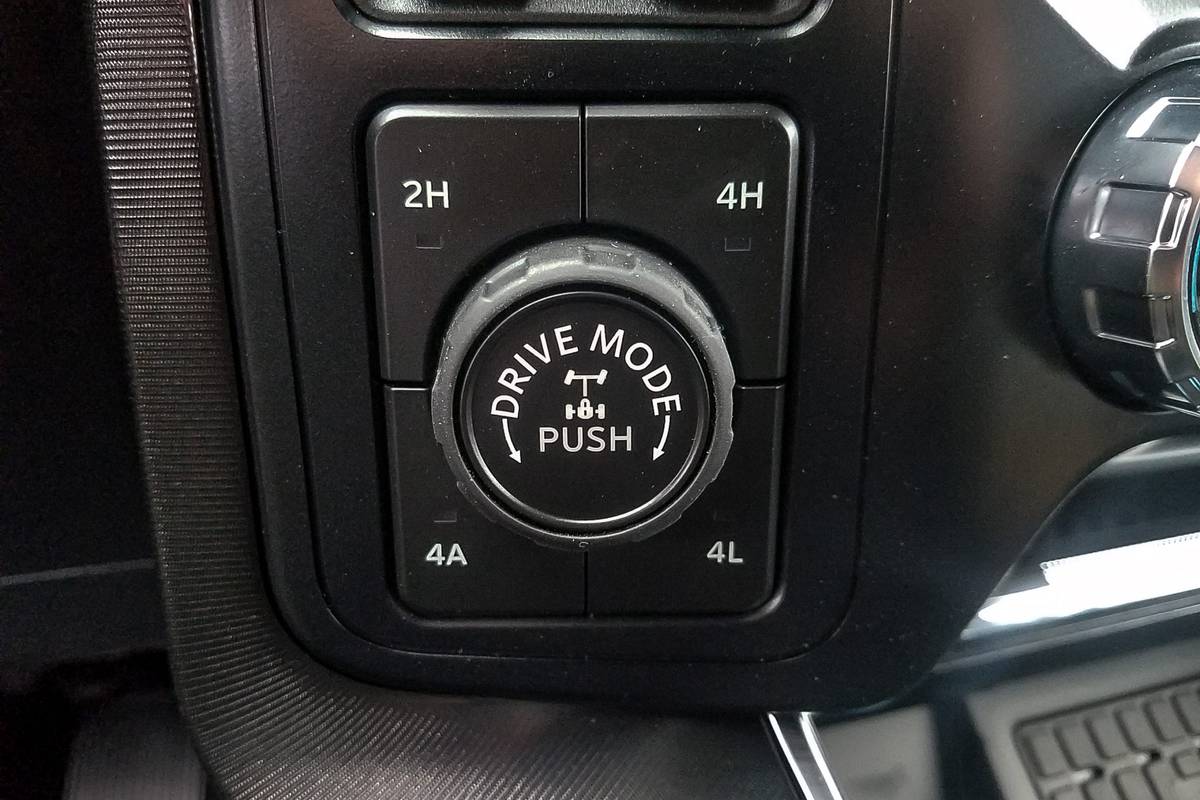
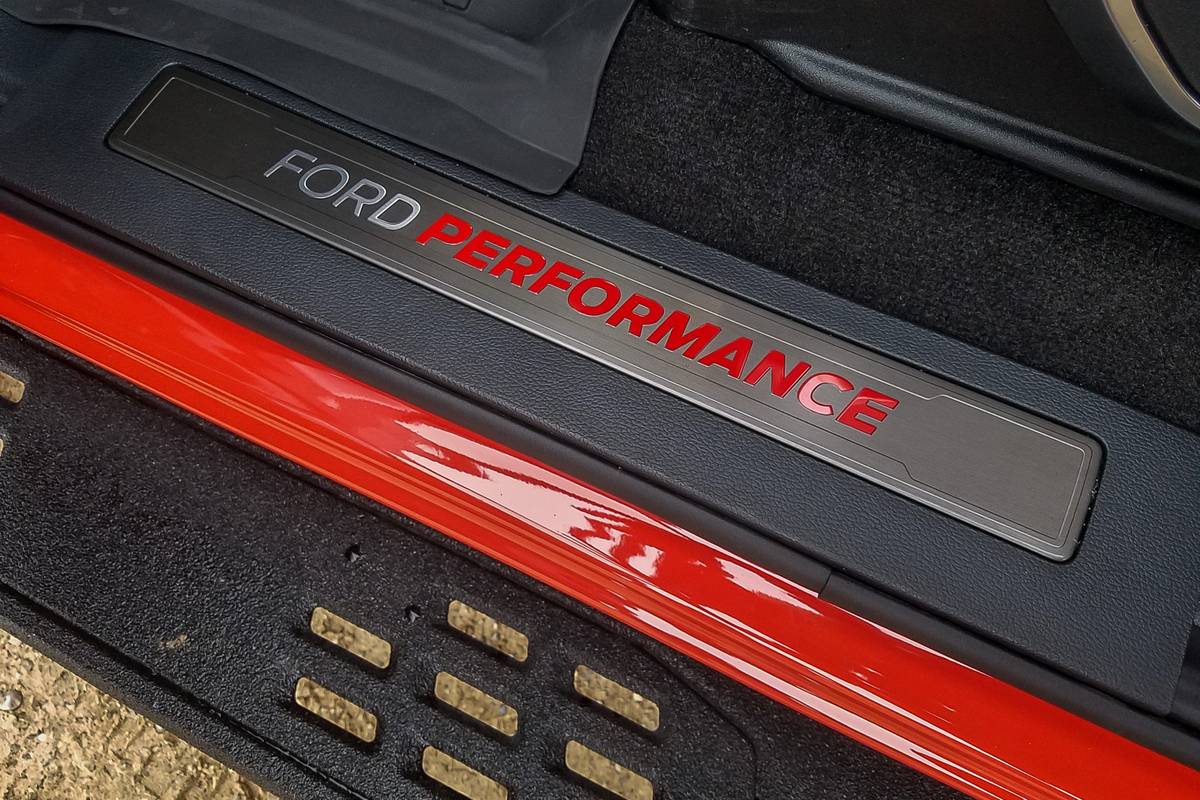

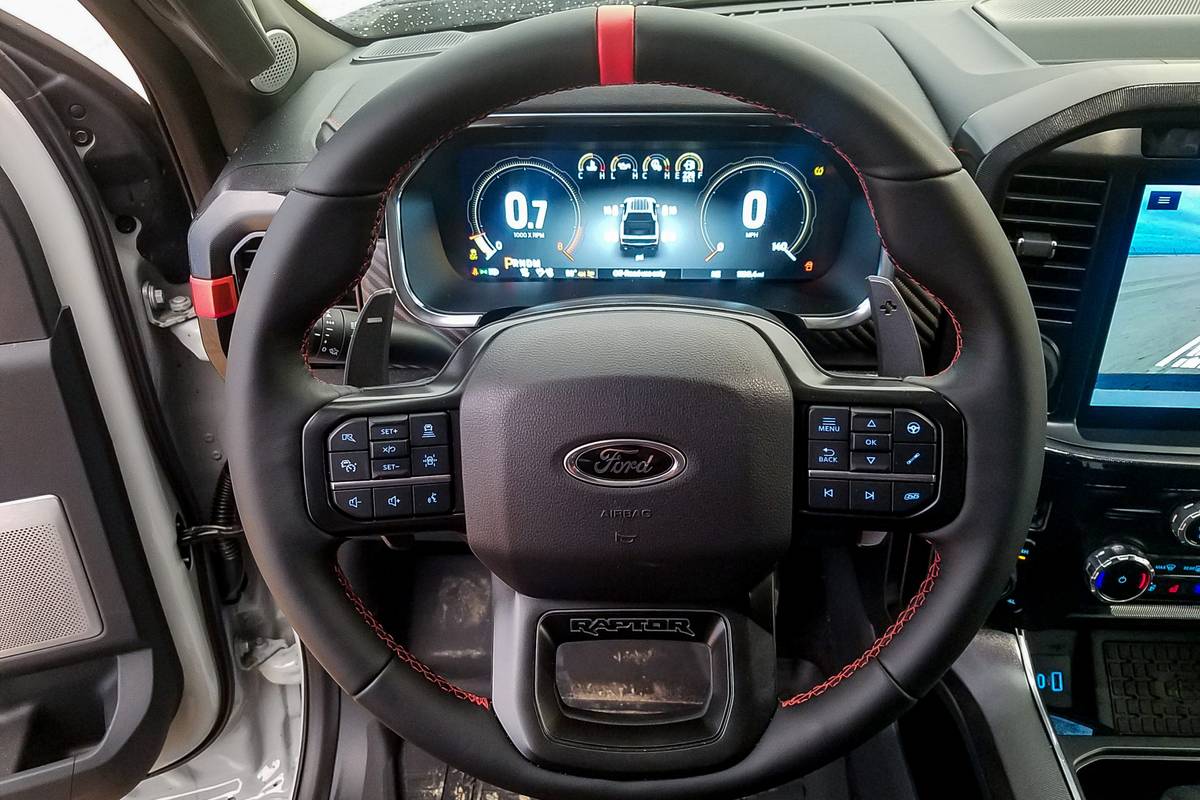
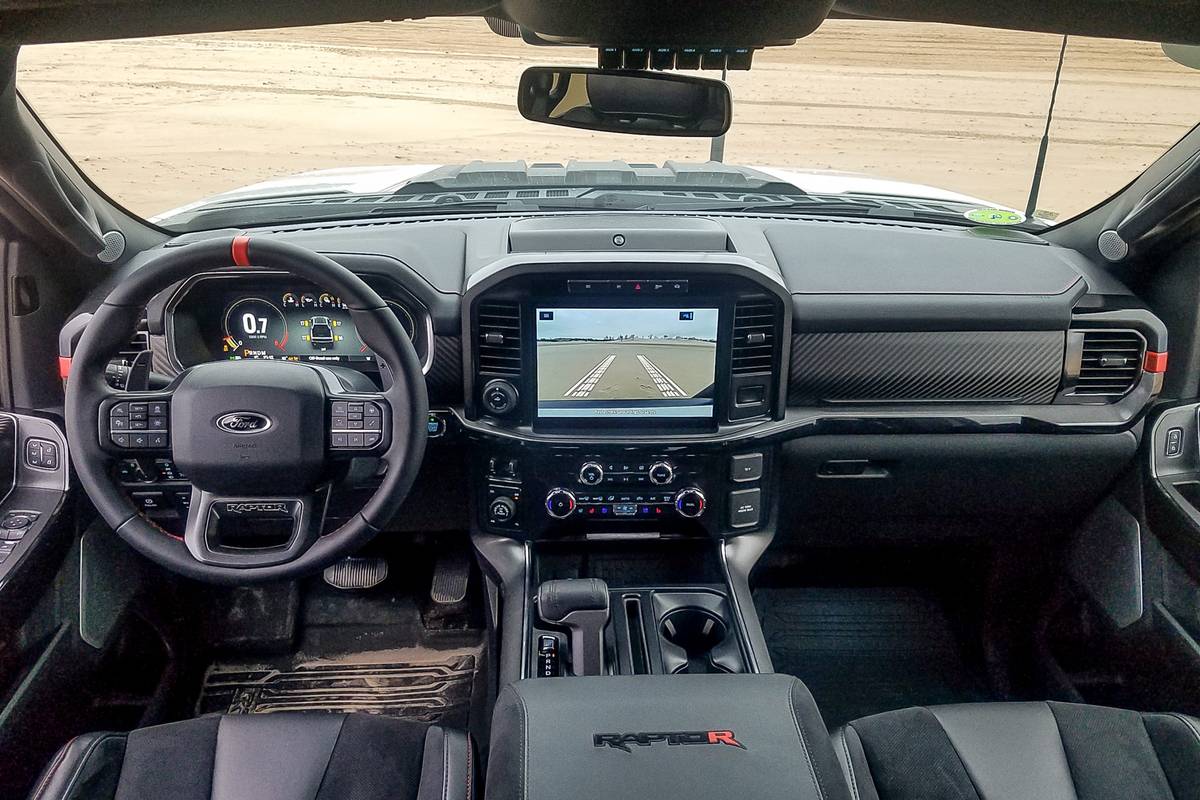

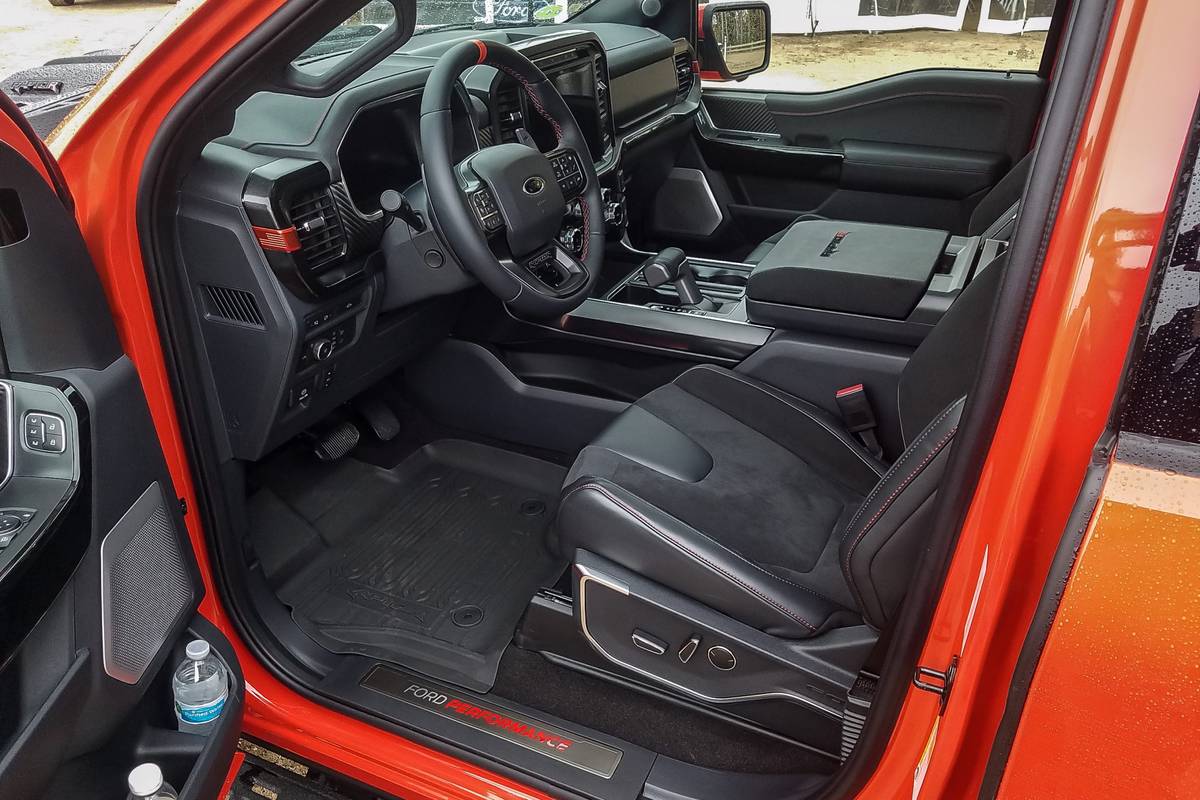


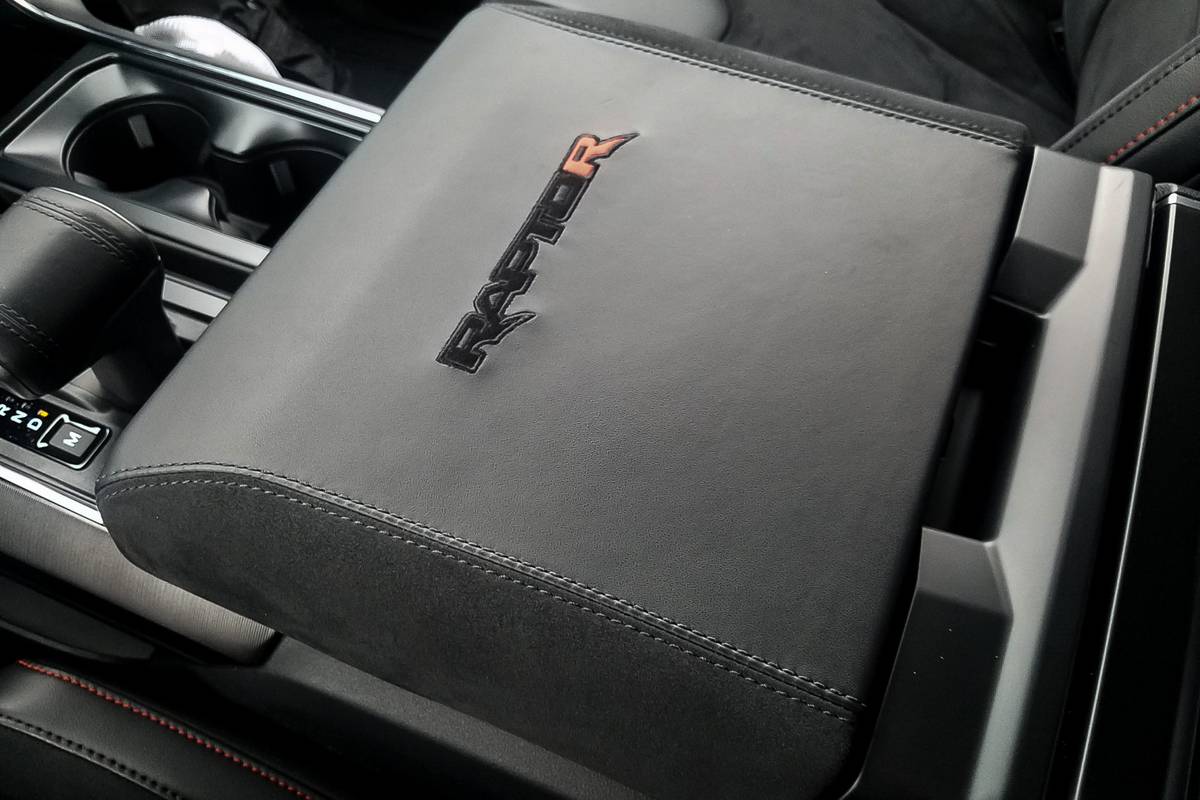
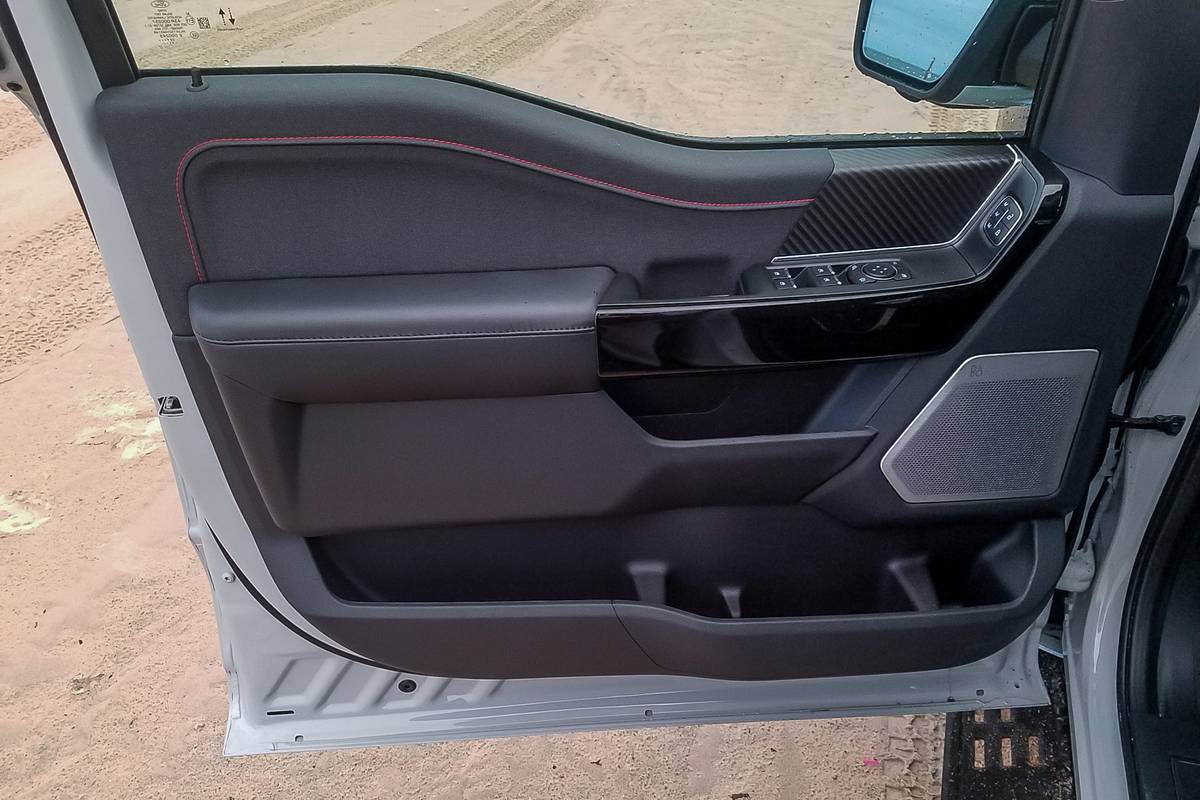























Posh Confines
The Raptor R is essentially a single-spec vehicle — the only options are exterior color and a moonroof delete, which I would absolutely do. I’m not really a moonroof guy, and at 6 feet, 6 inches tall, my helmeted noggin occasionally bumped against the moonroof housing as I barreled over particularly rough terrain.
In this case, mono spec means luxury spec. The overall look and feel of the Raptor R’s interior is quite close to the ambiance of our long-term F-150 Limited, with a smattering of appropriately sporty details such as grippy Alcantara seat-upholstery inserts, real carbon-fiber trim, and orange contrast stitching and trim accents. It’s a classy cabin, but I’d say an optioned-up TRX interior still has a more premium look and feel.
Ford apparently decided that the Raptor R’s V-8 talks loud enough that the truck’s exterior trim touches could be relatively subtle. There’s a bit more blacked-out trim than the regular Raptor gets, a 1-inch-taller power dome on the hood, unique Raptor R graphics and Code Orange-colored R badges on the grille, power dome and tailgate. Ford says the bedside graphics are meant to evoke cracked desert earth — both the bedside graphics and the hood graphic are filled with small 8s as a tip of the cap to the V-8 powertrain.
The Bottom Line
When set apart as an equipment group, the Raptor R is an extra $30,575 over the $78,570 for a regular Raptor, for a total price of $109,145. You can get a TRX loaded up to around $110,000 if you choose a special-edition model and throw all the options at it, but the TRX’s $82,485 starting price is significantly lower than the Raptor R’s. We’ll see what a head-to-head comparison test brings, but a few things are certain: Ford will sell every F-150 Raptor R it builds, and full-size pickup-truck arms races are eternal.
More From Cars.com:
- 2023 Ford F-150 Raptor R: Ford Answers the Challenge of the Ram TRX
- Over-the-Air Software Update Brings Additional Camera Functionality to our Ford F-150
- 2021 Ram 1500 TRX Review: Thoroughly Entertaining
- When Dinosaurs Ruled the … Drag Strip? Just How Quick Is the 2021 Ram 1500 TRX?
- Shop for a 2023 Ford F-150
Related Video:
Cars.com’s Editorial department is your source for automotive news and reviews. In line with Cars.com’s long-standing ethics policy, editors and reviewers don’t accept gifts or free trips from automakers. The Editorial department is independent of Cars.com’s advertising, sales and sponsored content departments.

Senior Research Editor Damon Bell has more than 25 years of experience in the automotive industry, beginning as an Engineering Graphics researcher/proofreader at model-car manufacturer Revell-Monogram. From there, he moved on to various roles at Collectible Automobile magazine and Consumer Guide Automotive before joining Cars.com in August 2022. He served as president of the Midwest Automotive Media Association in 2019 and 2020.
Featured stories



























